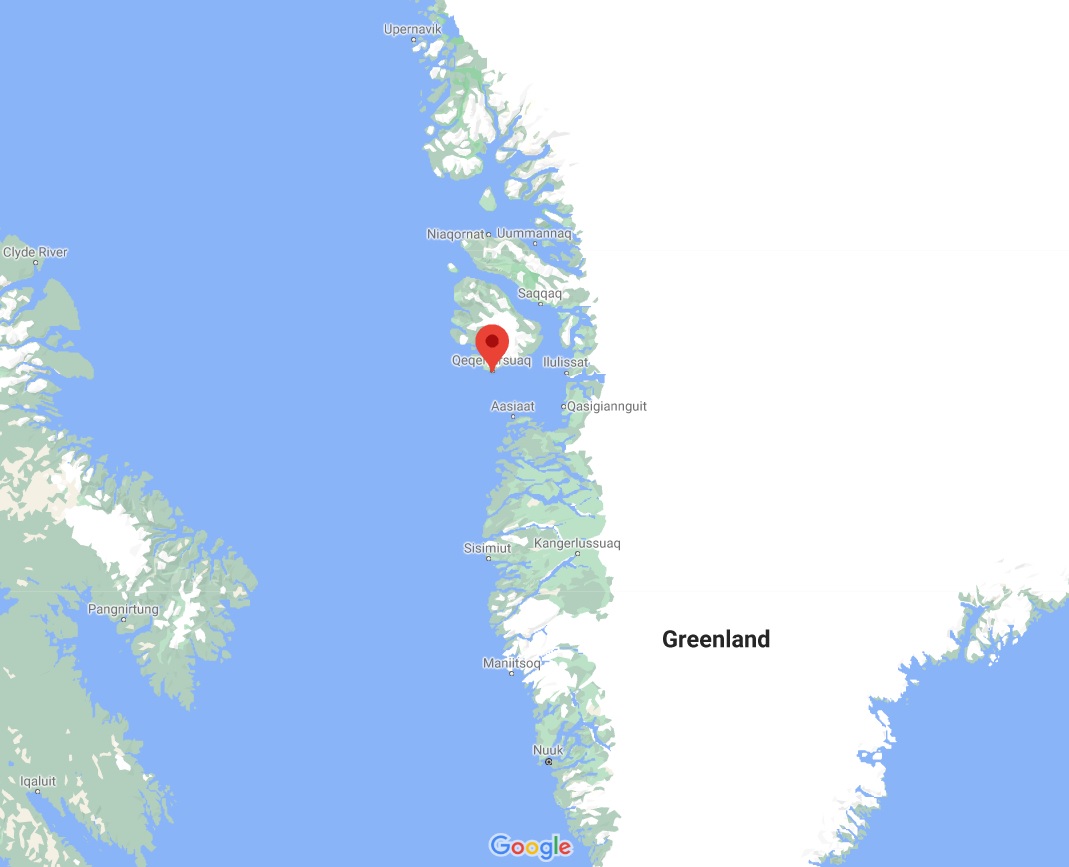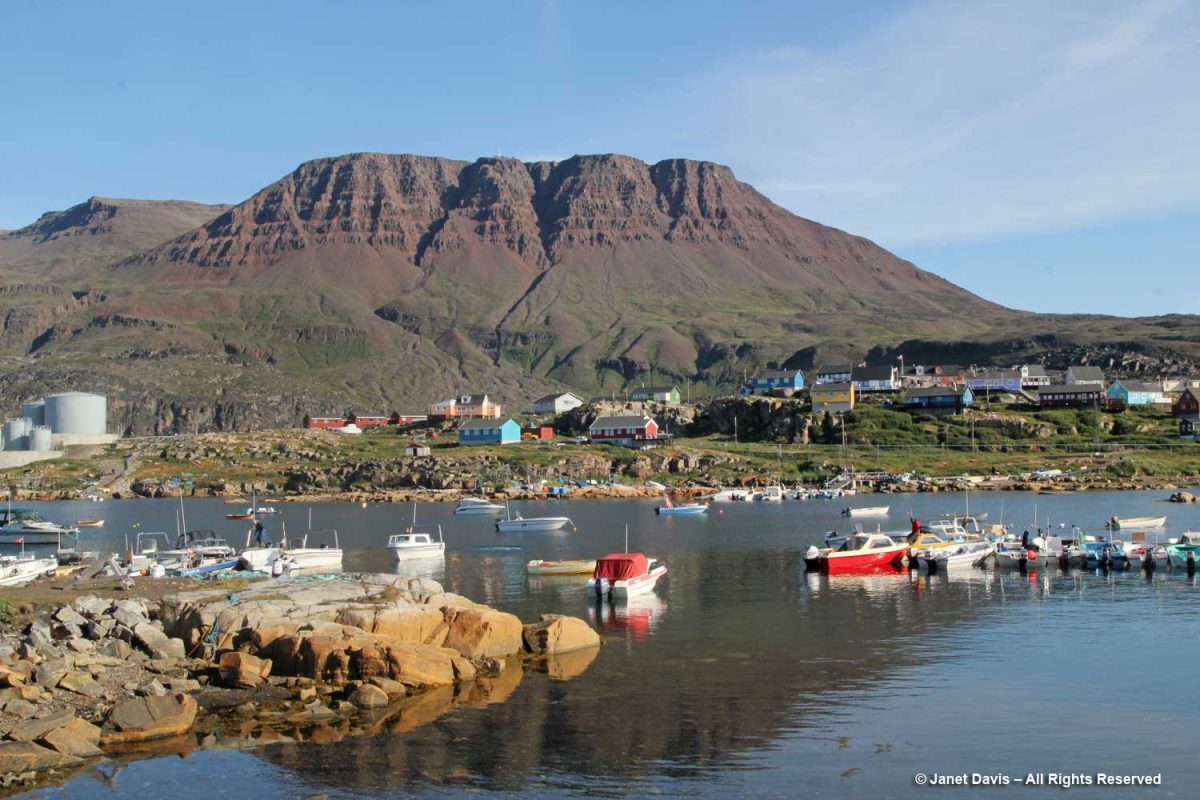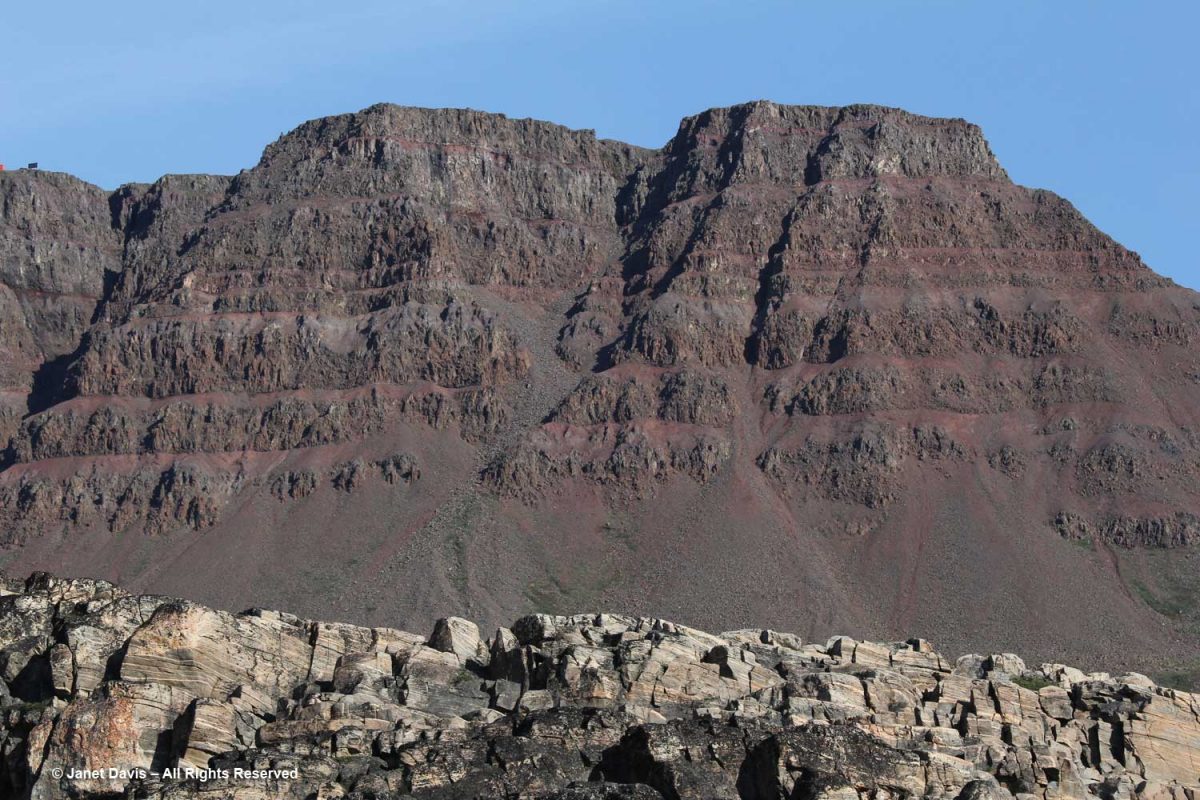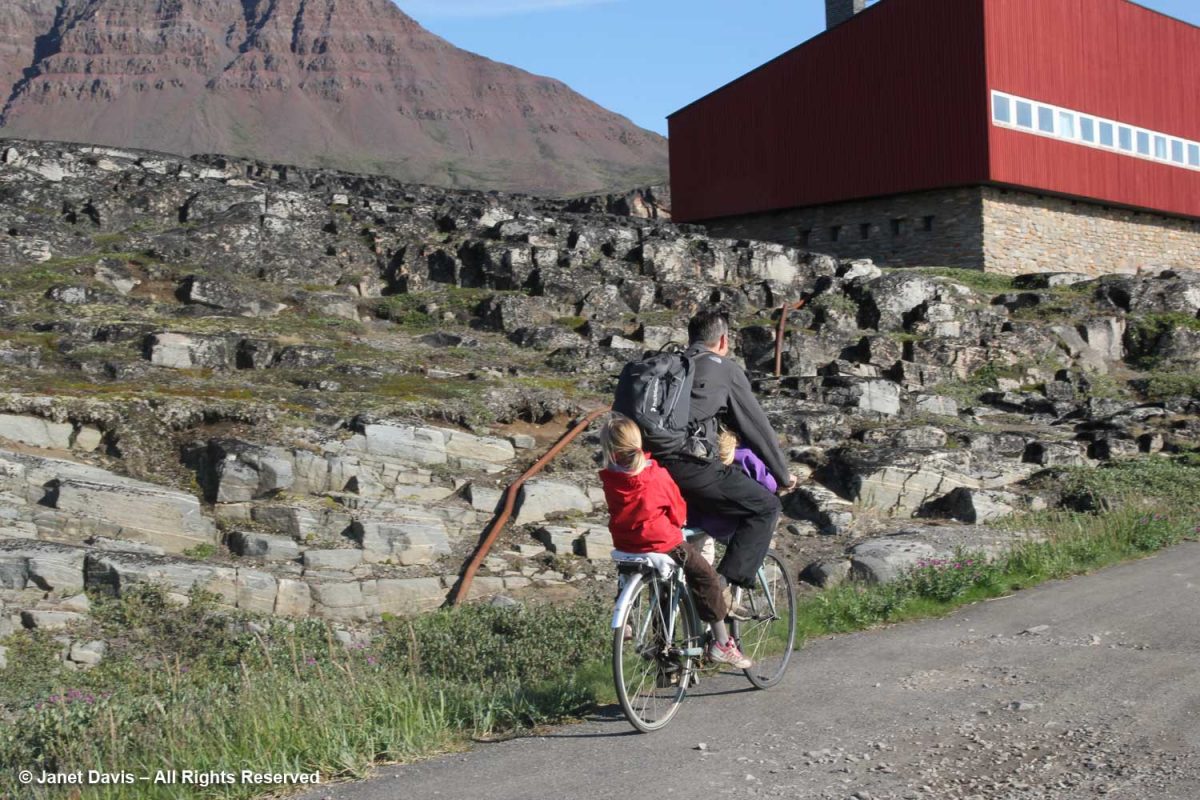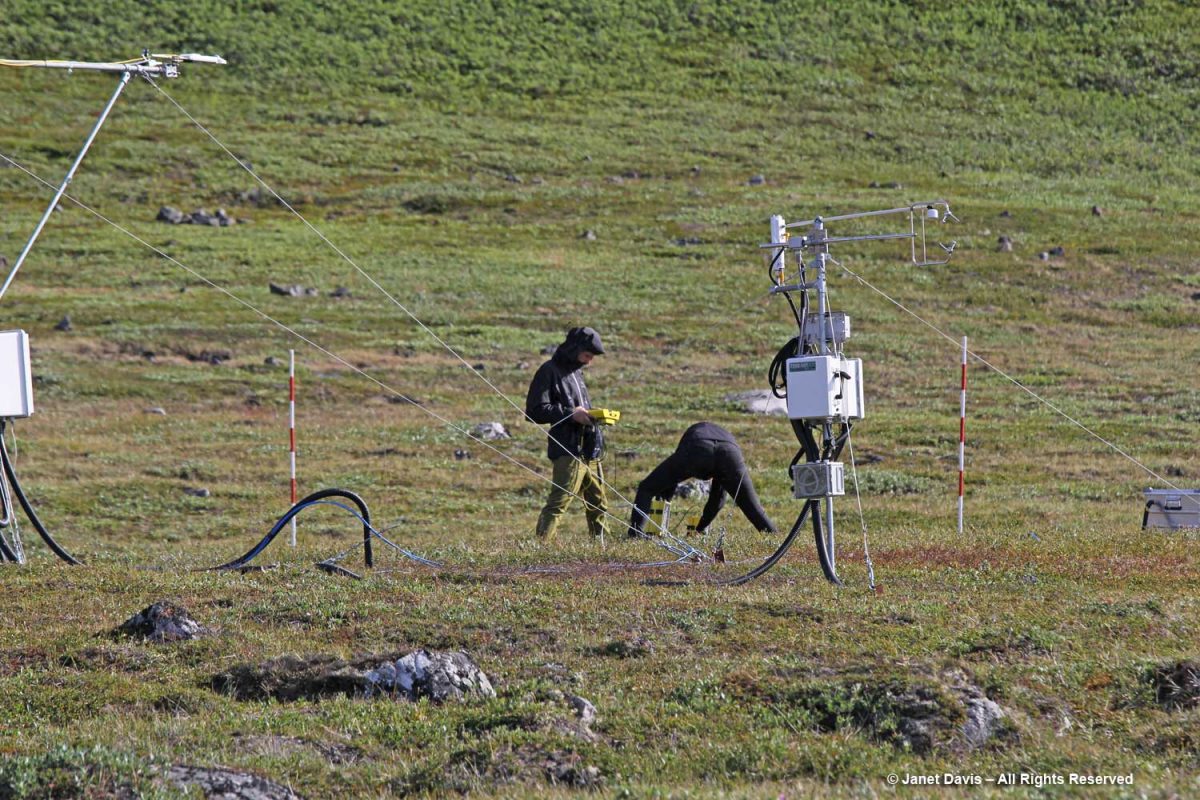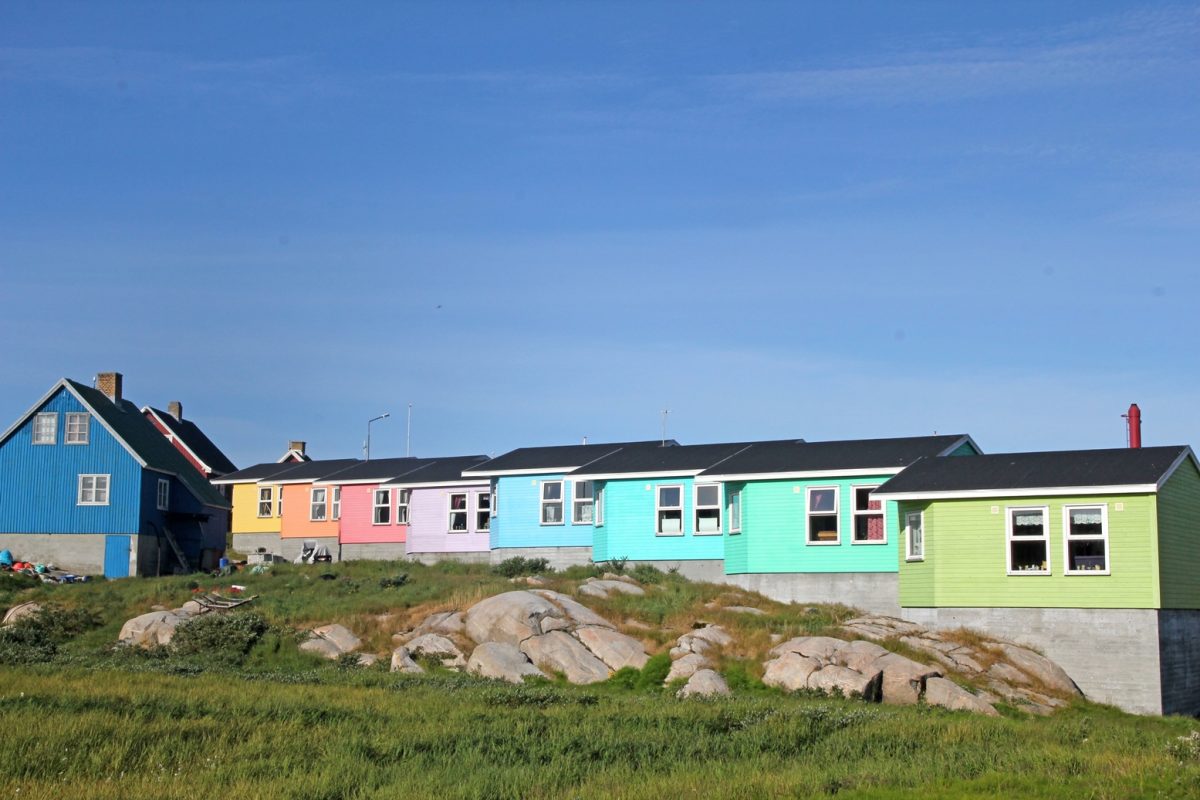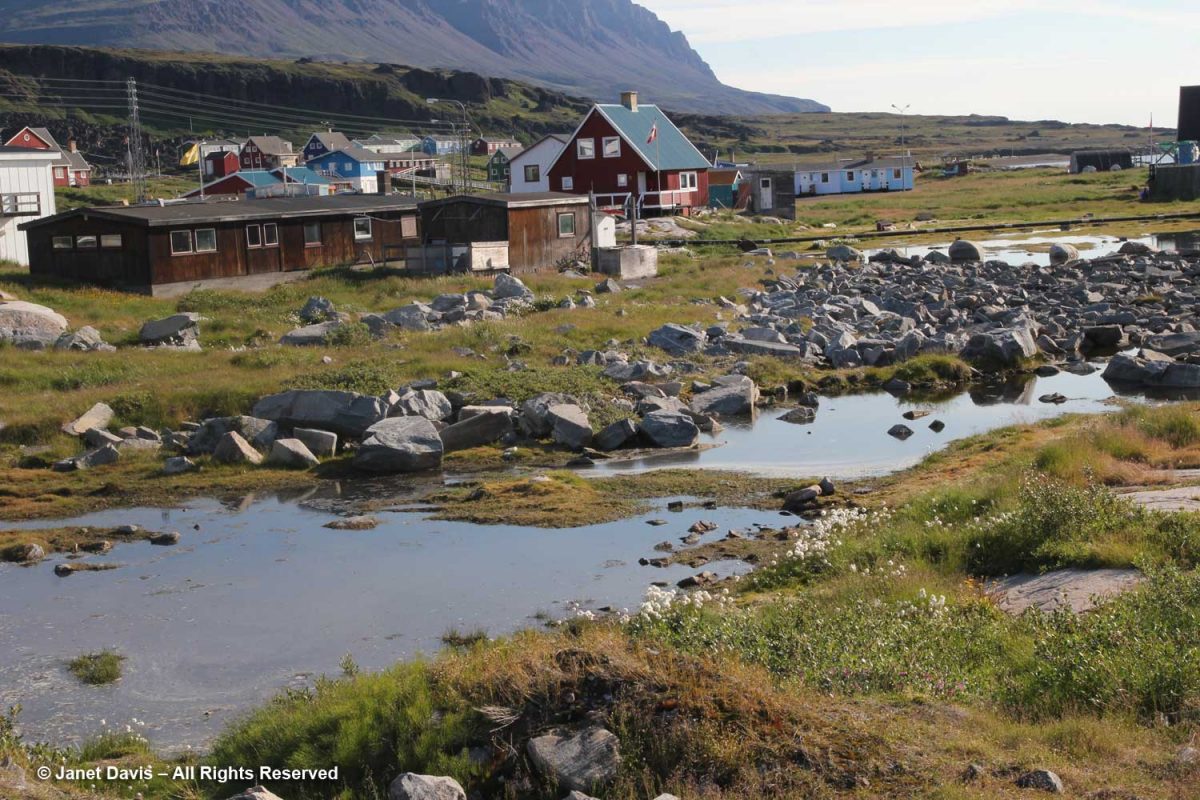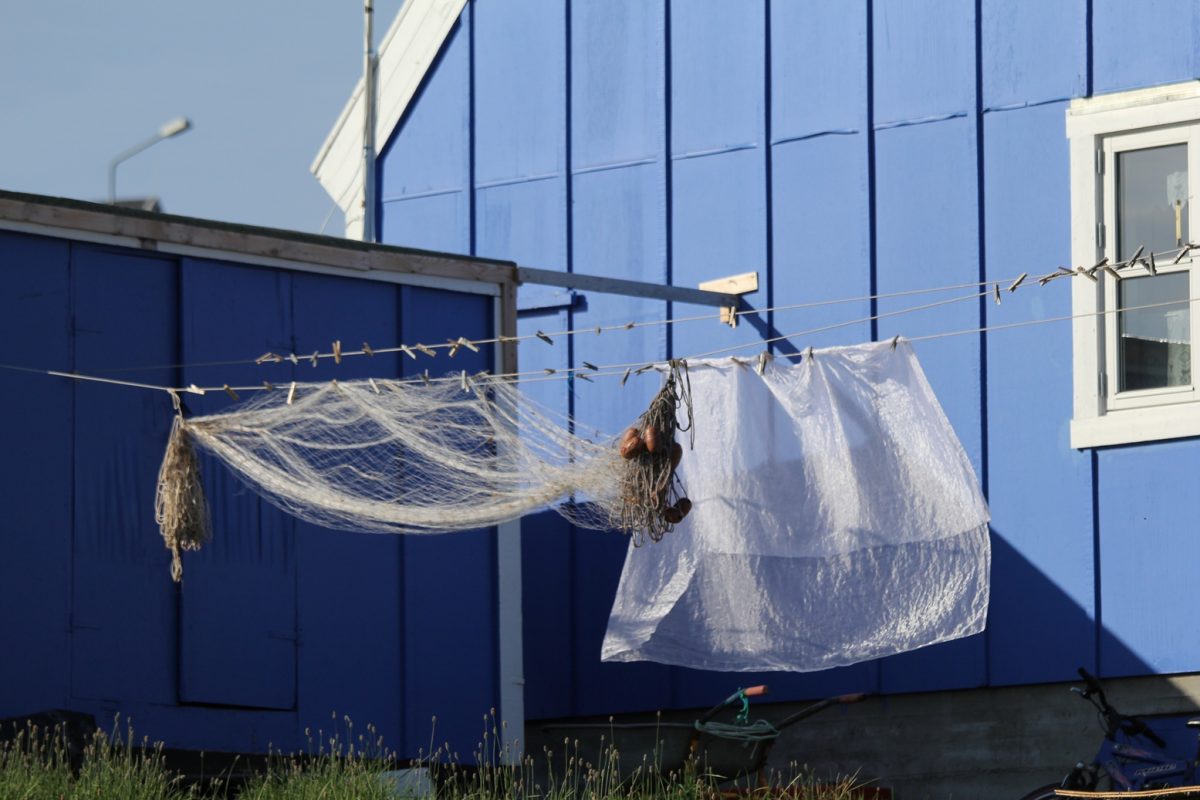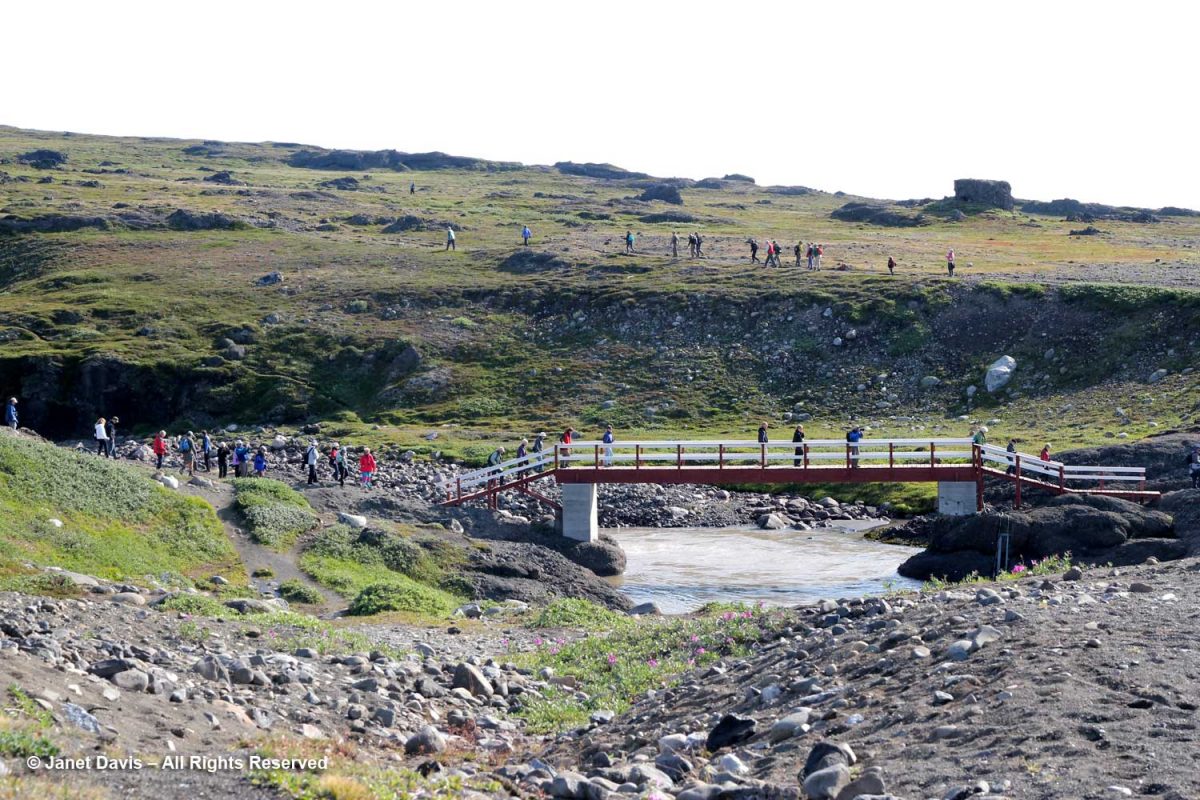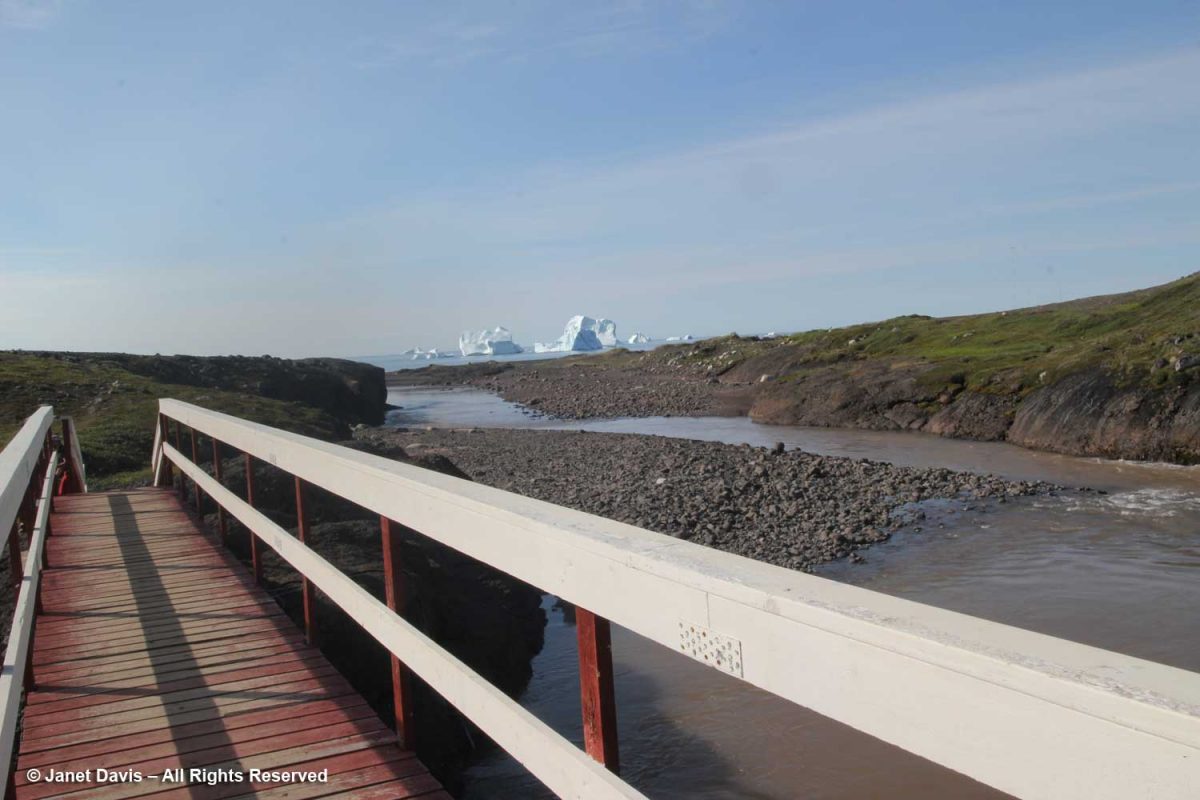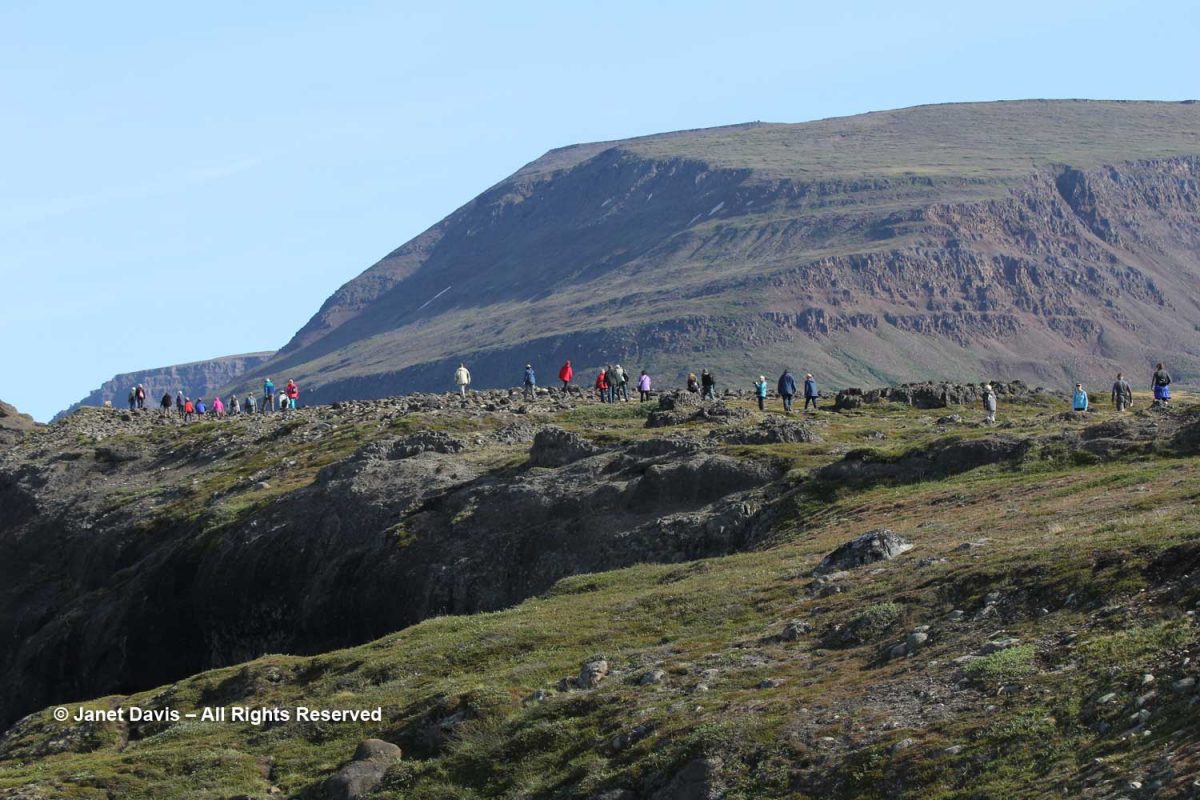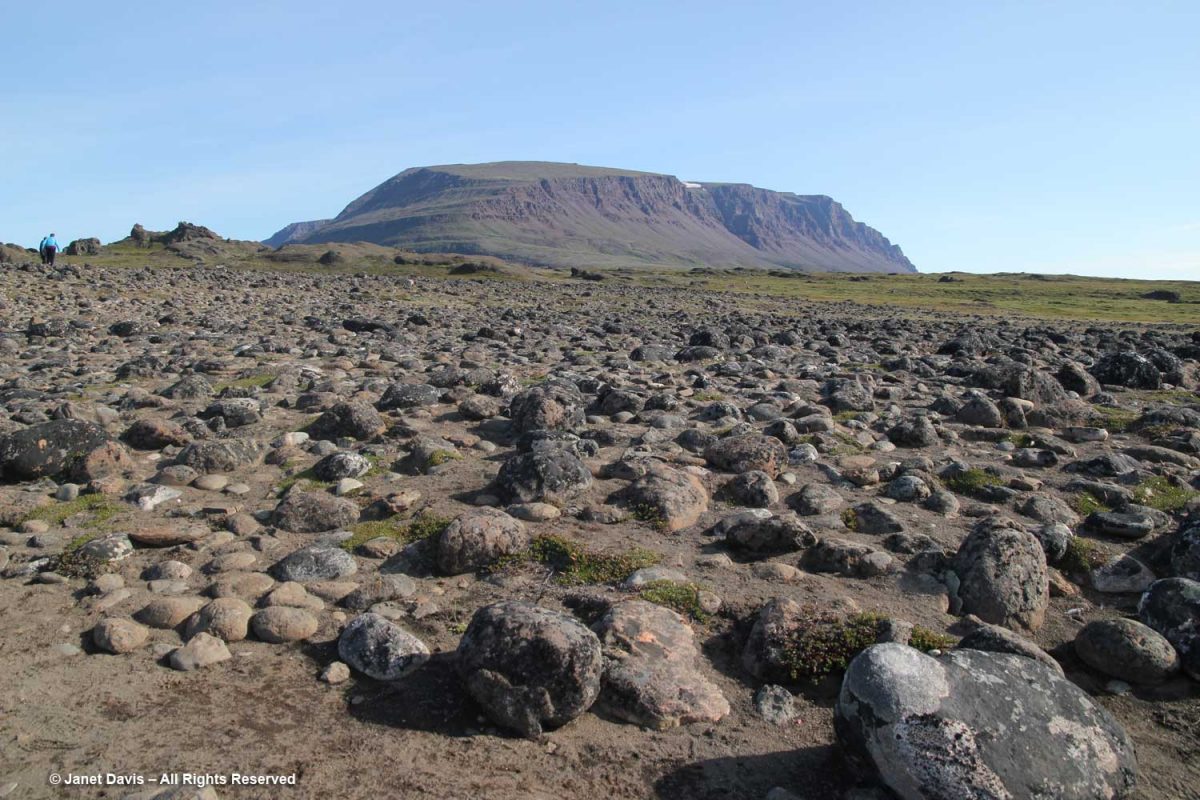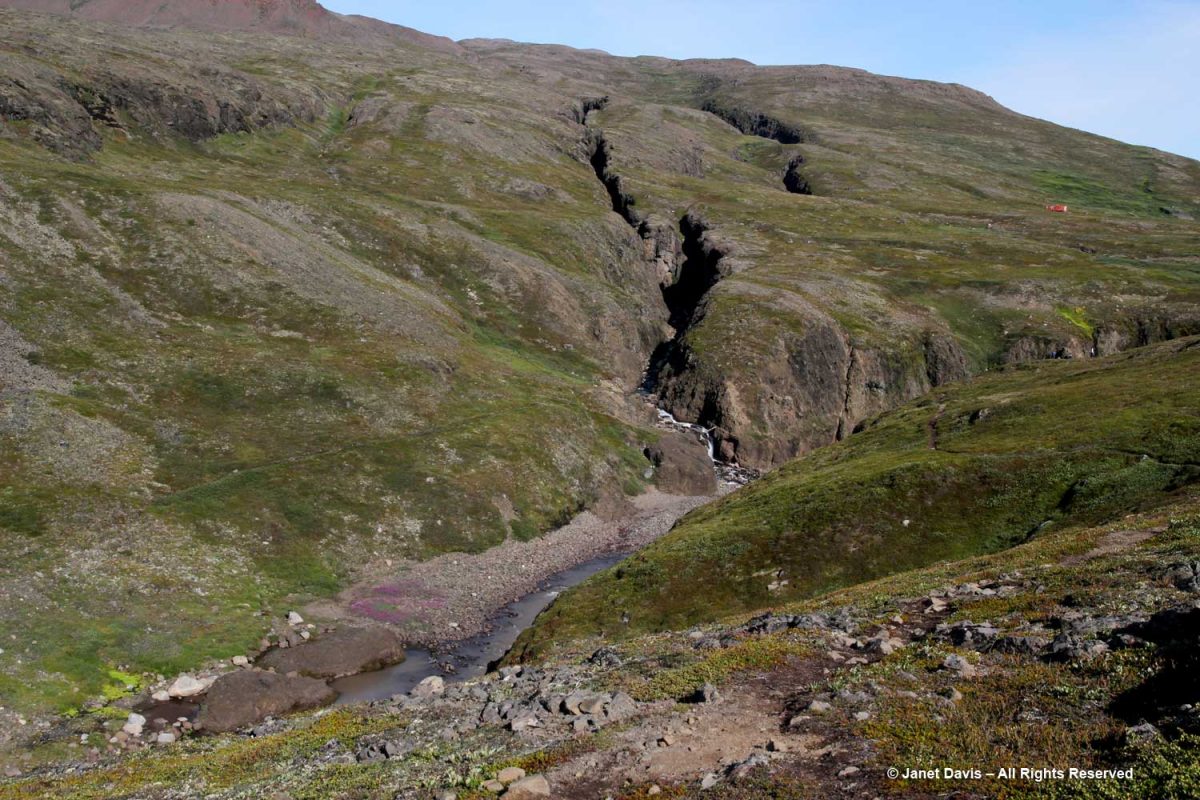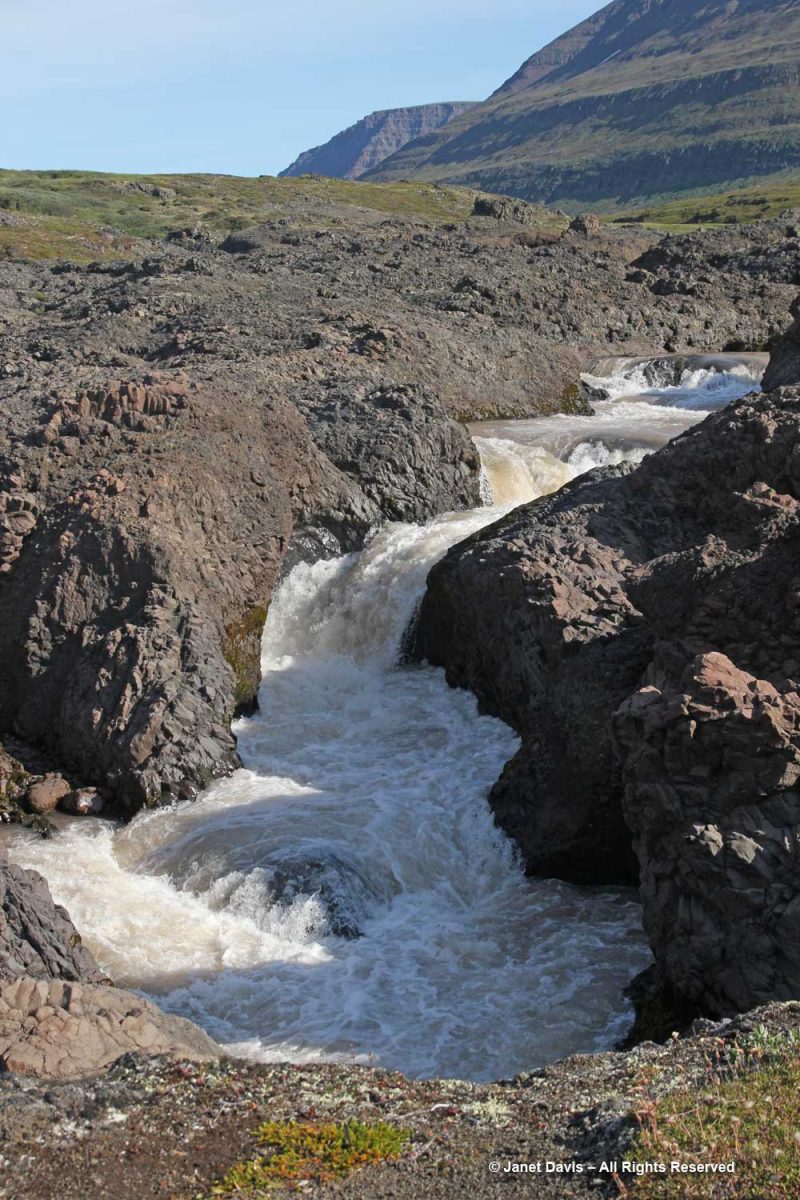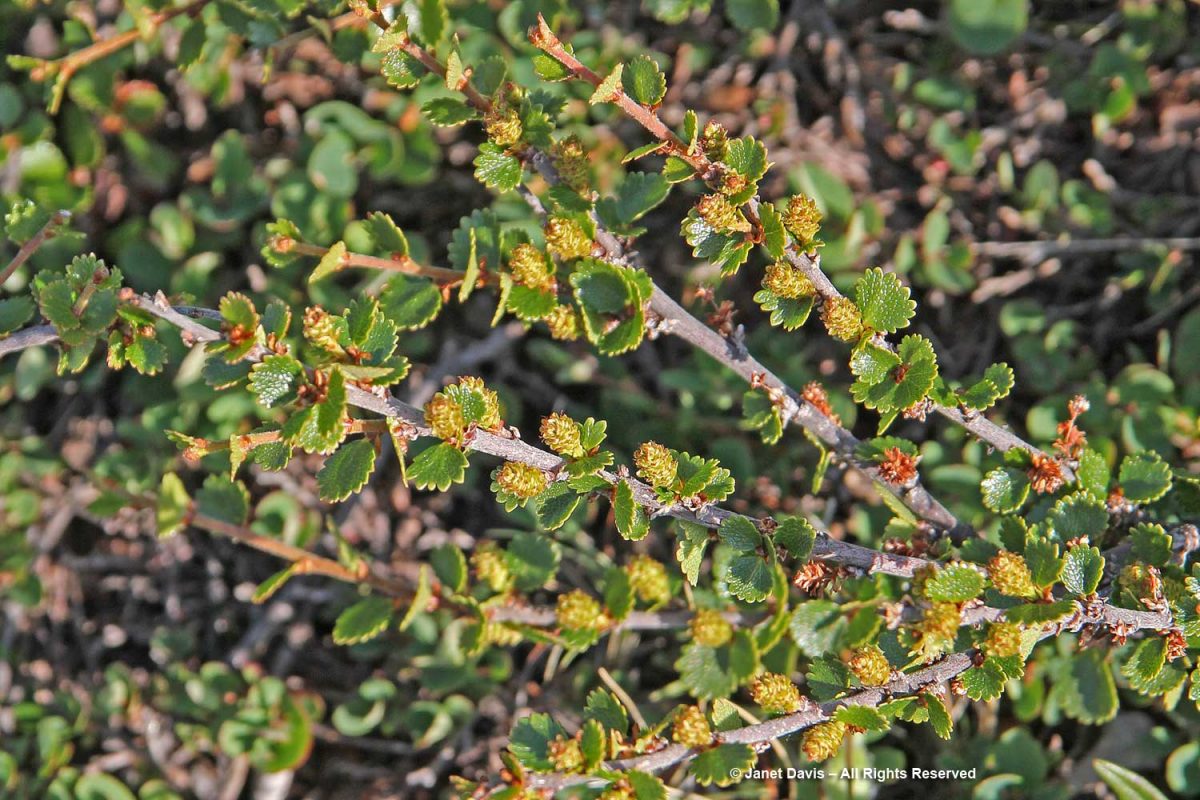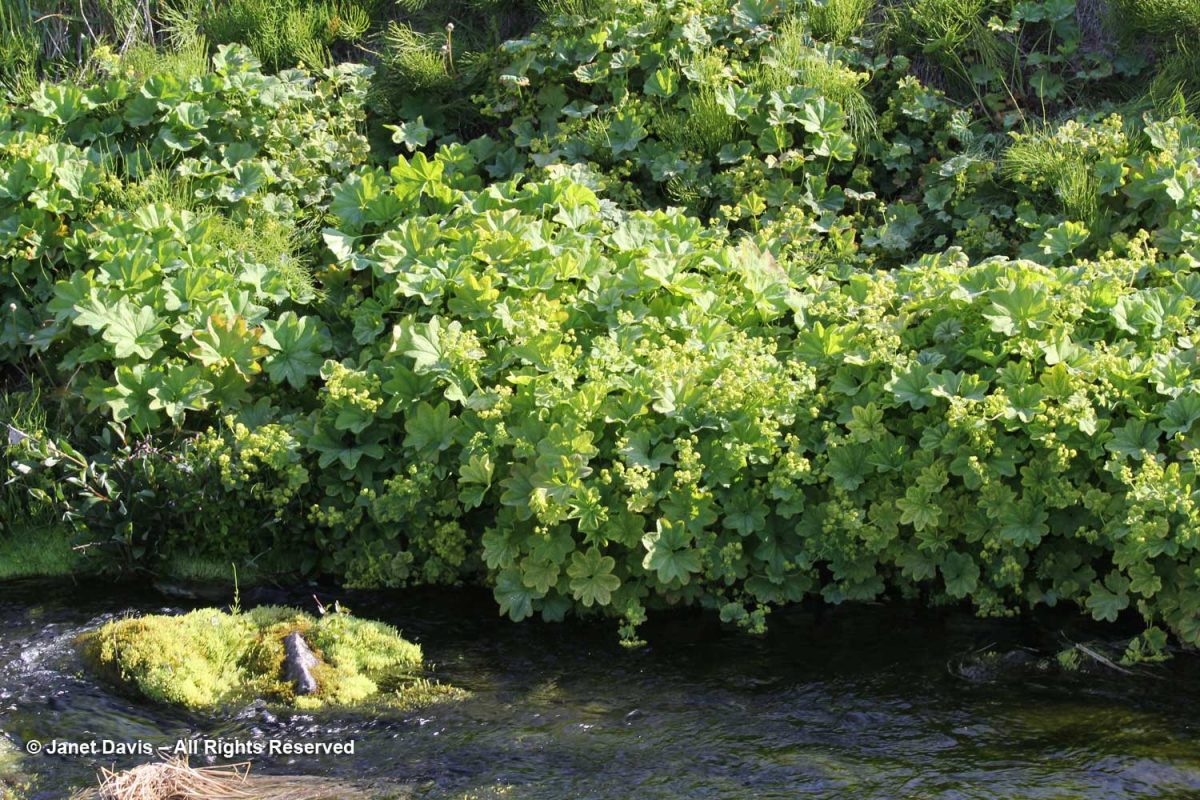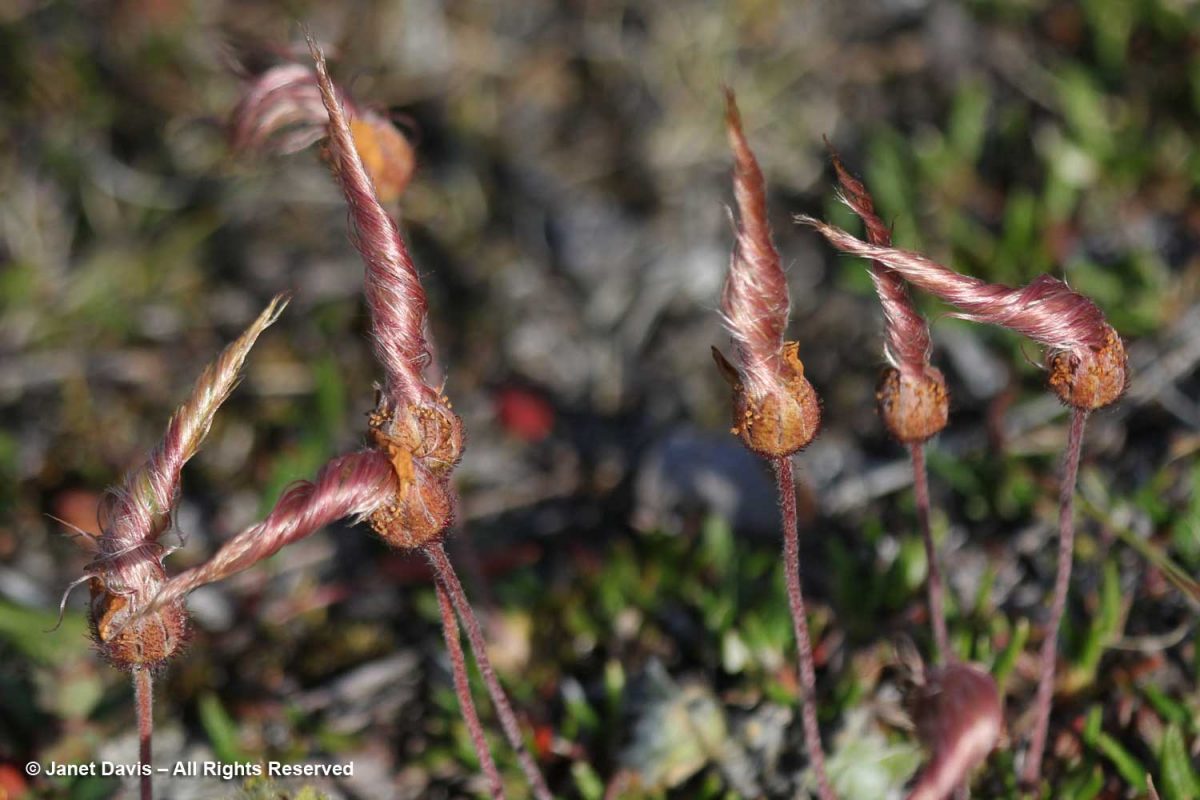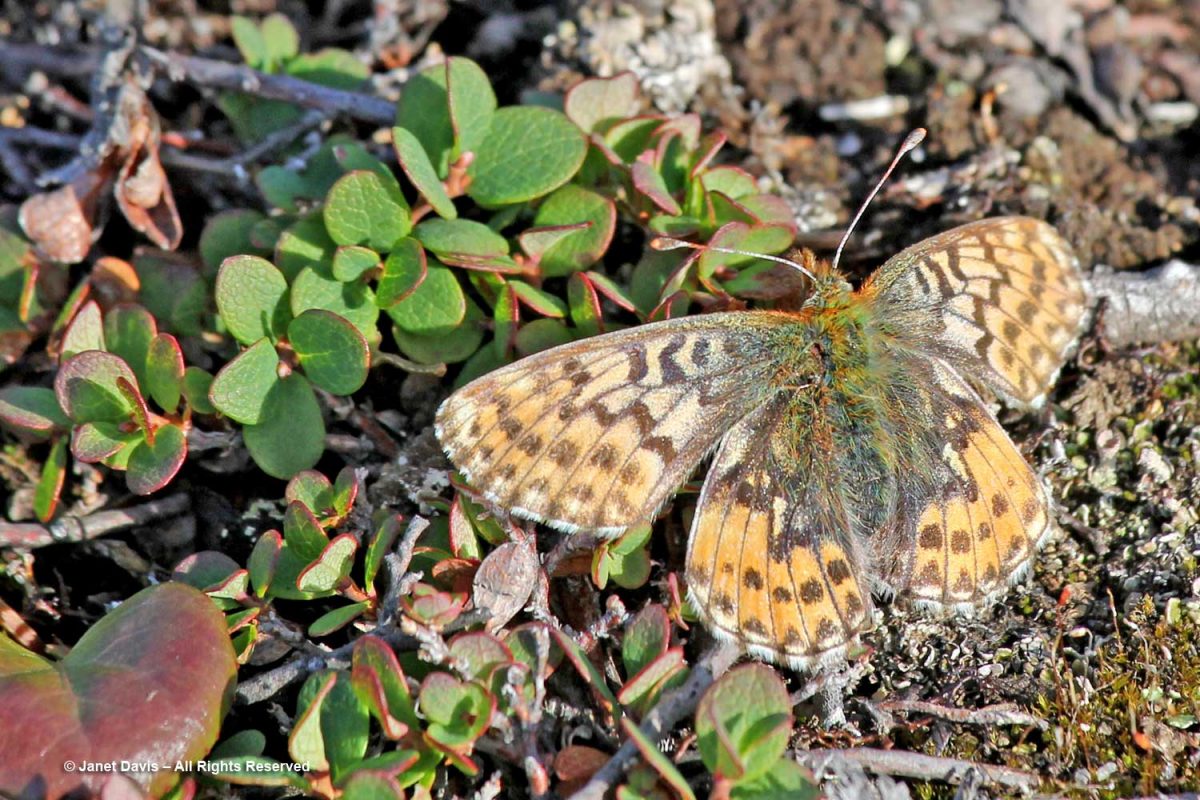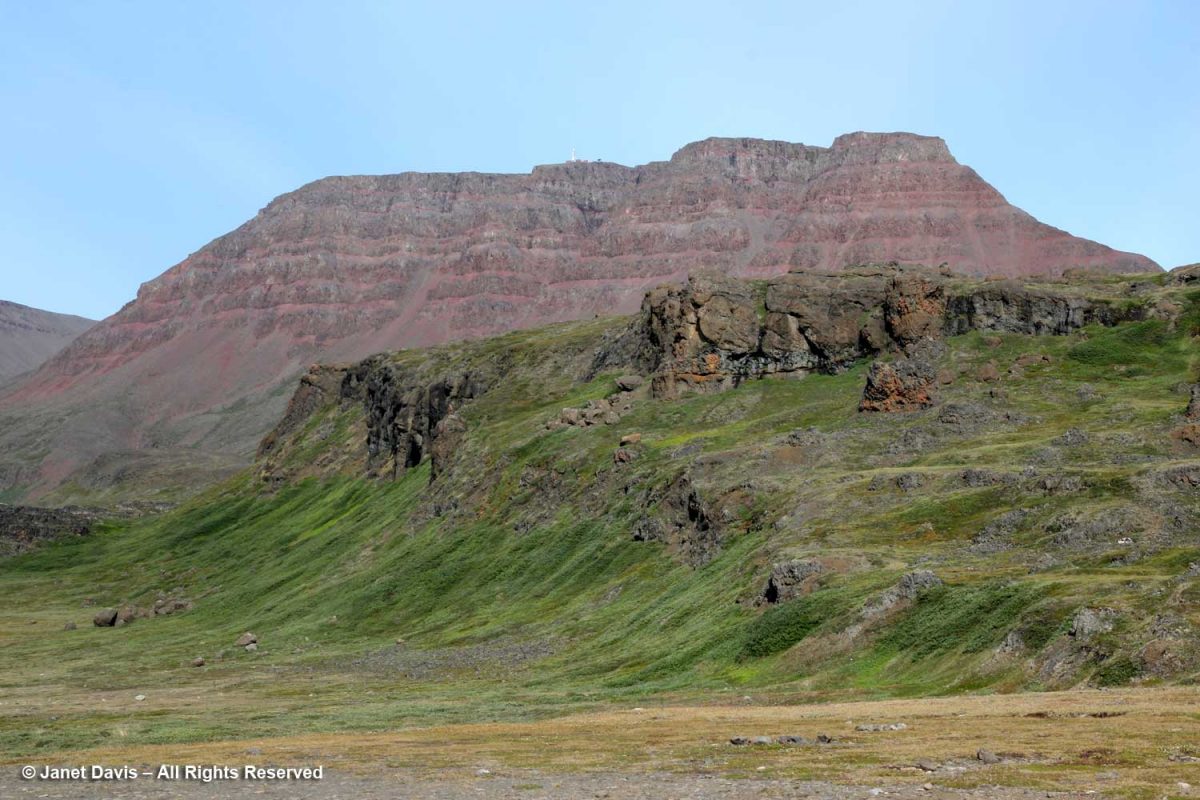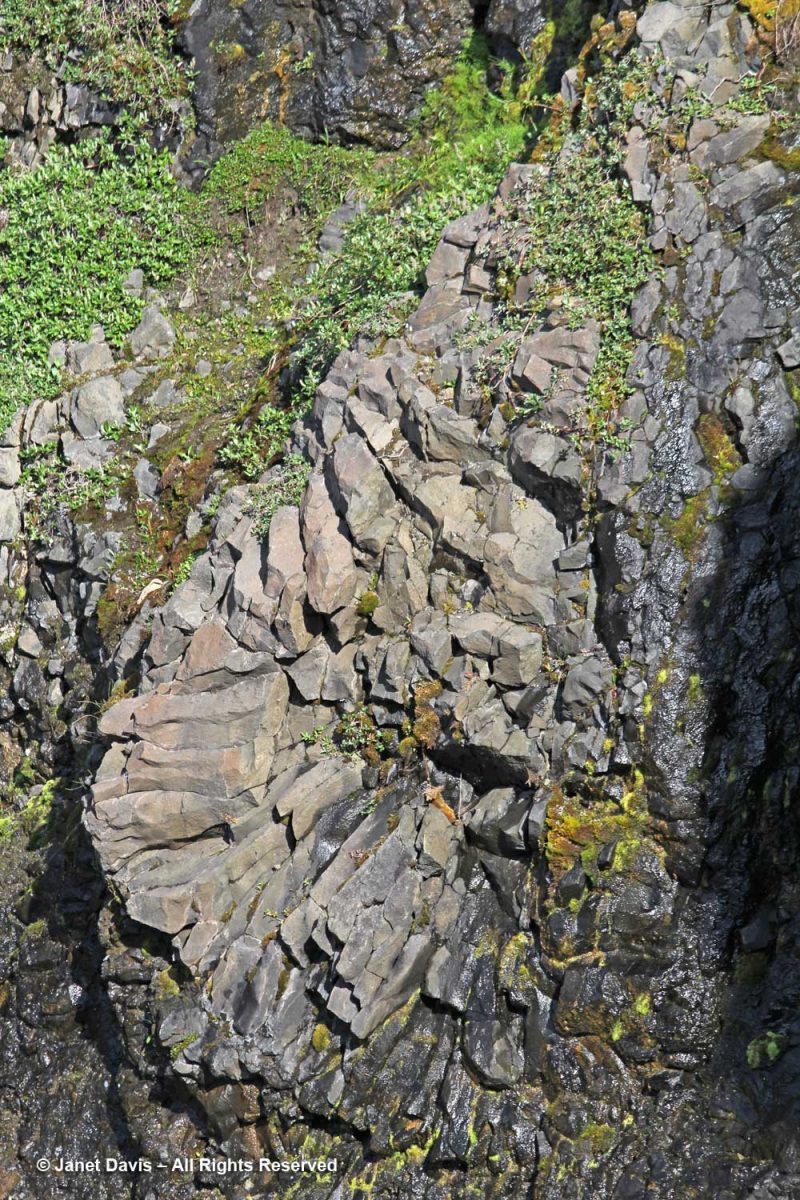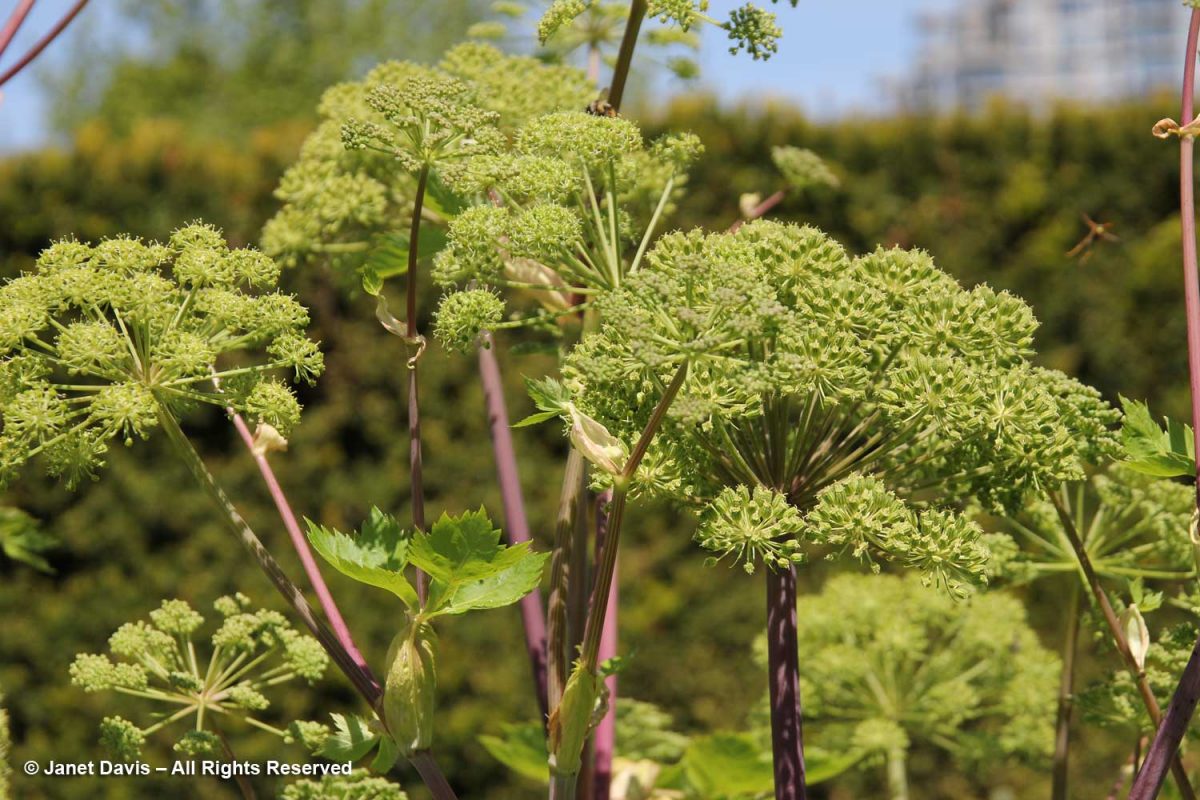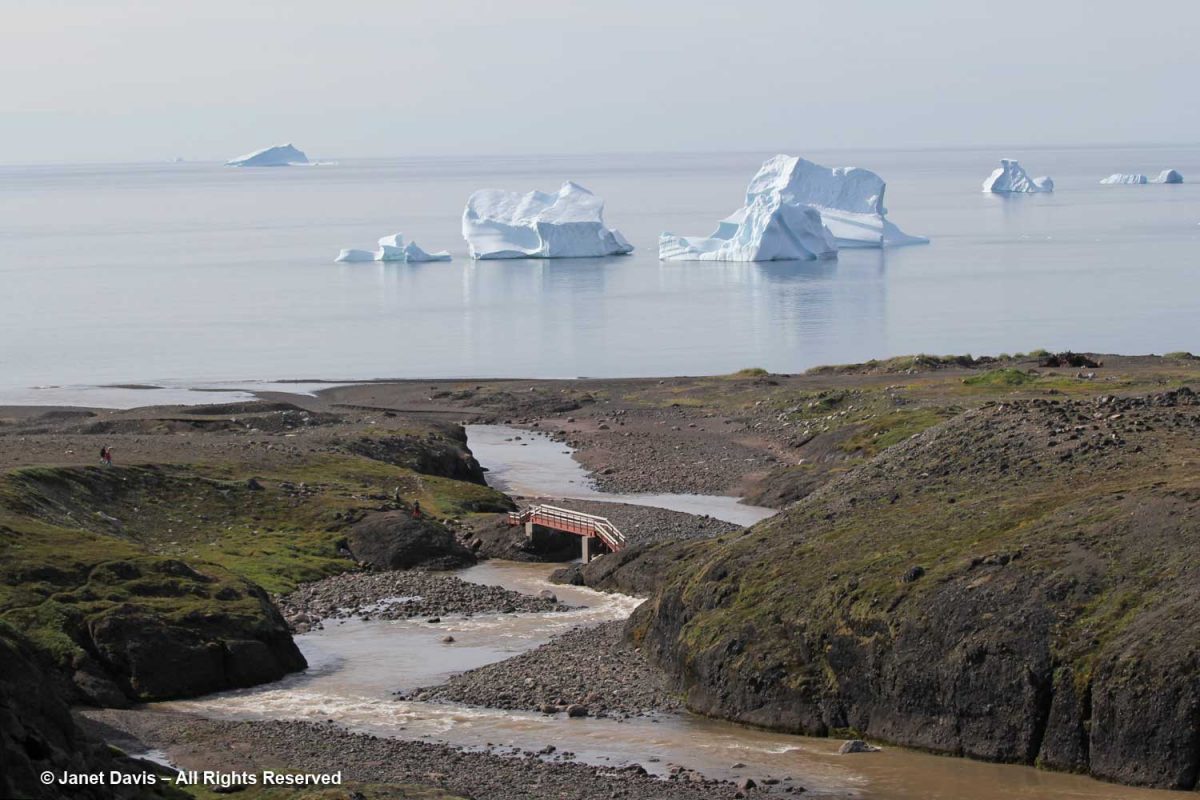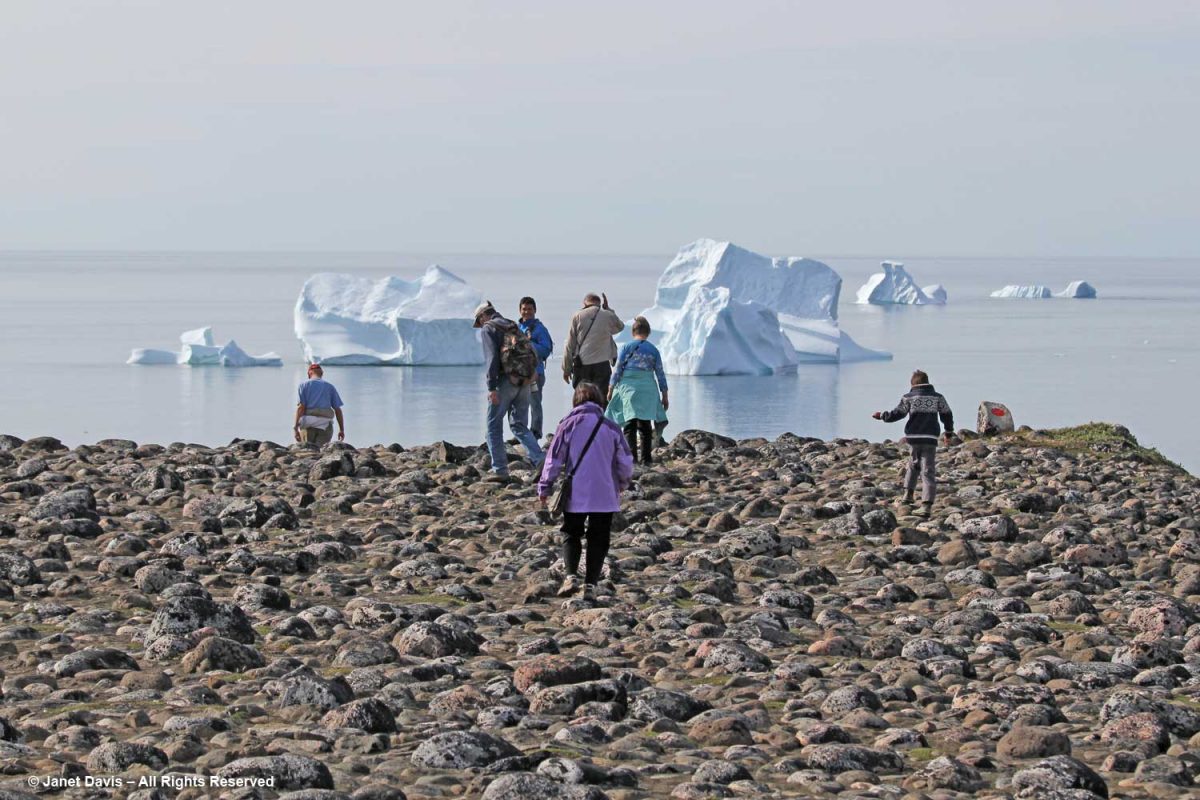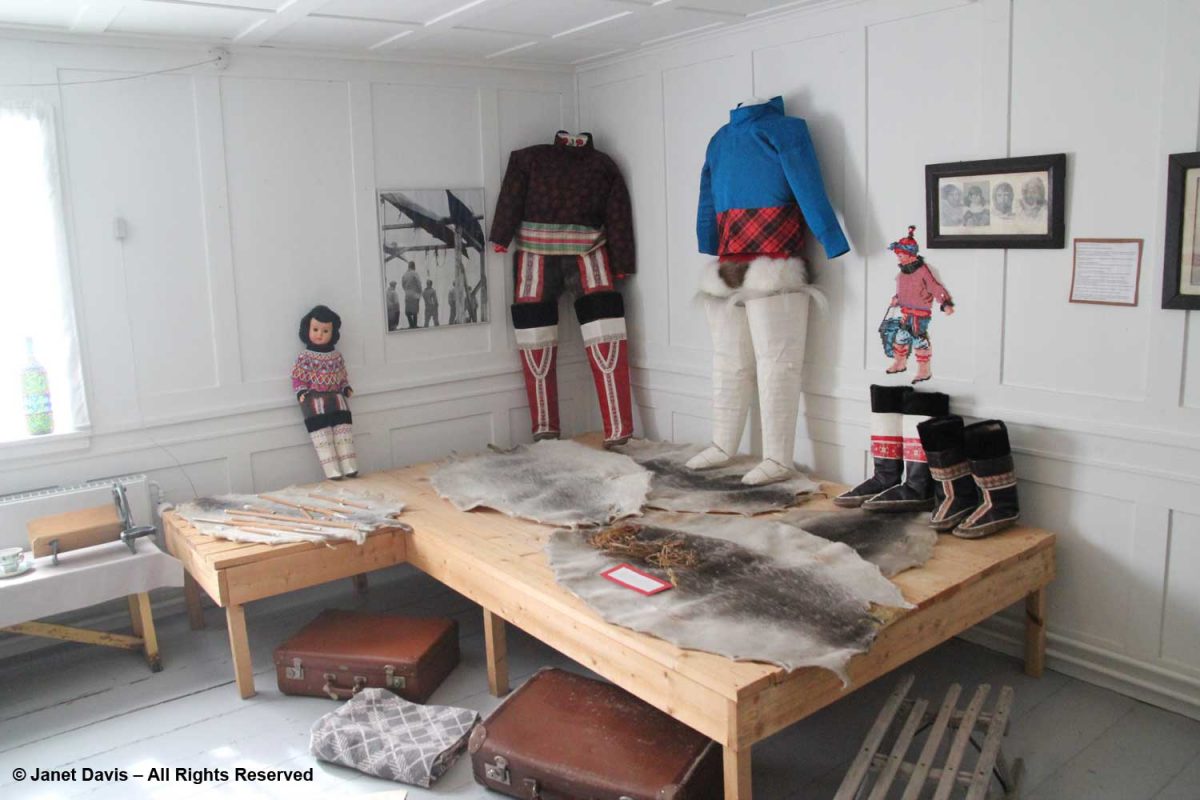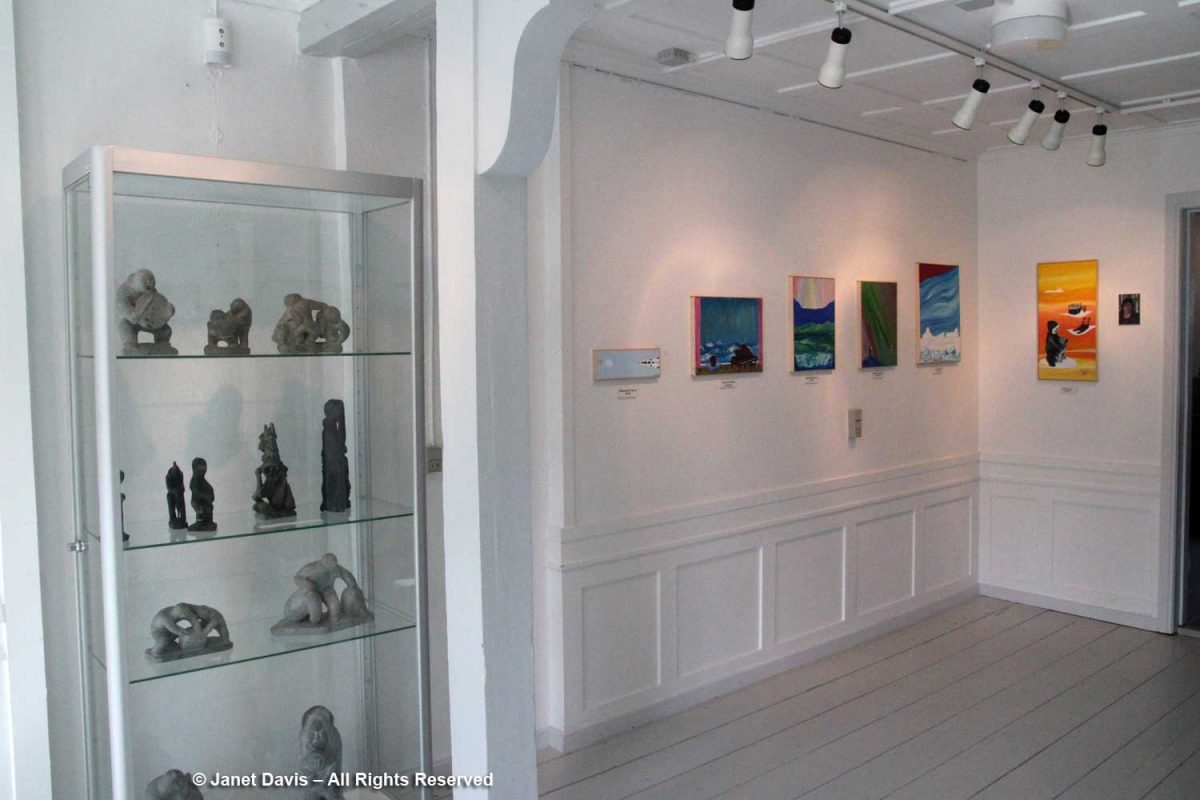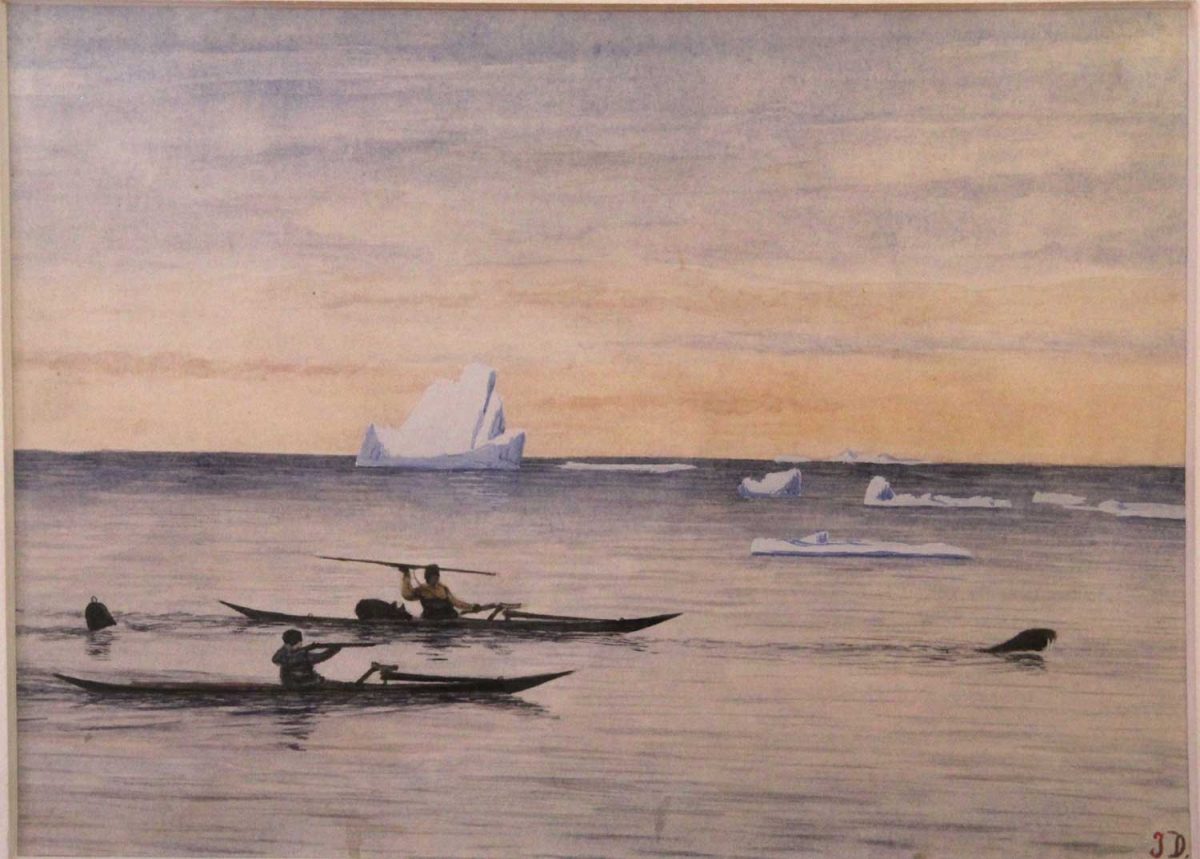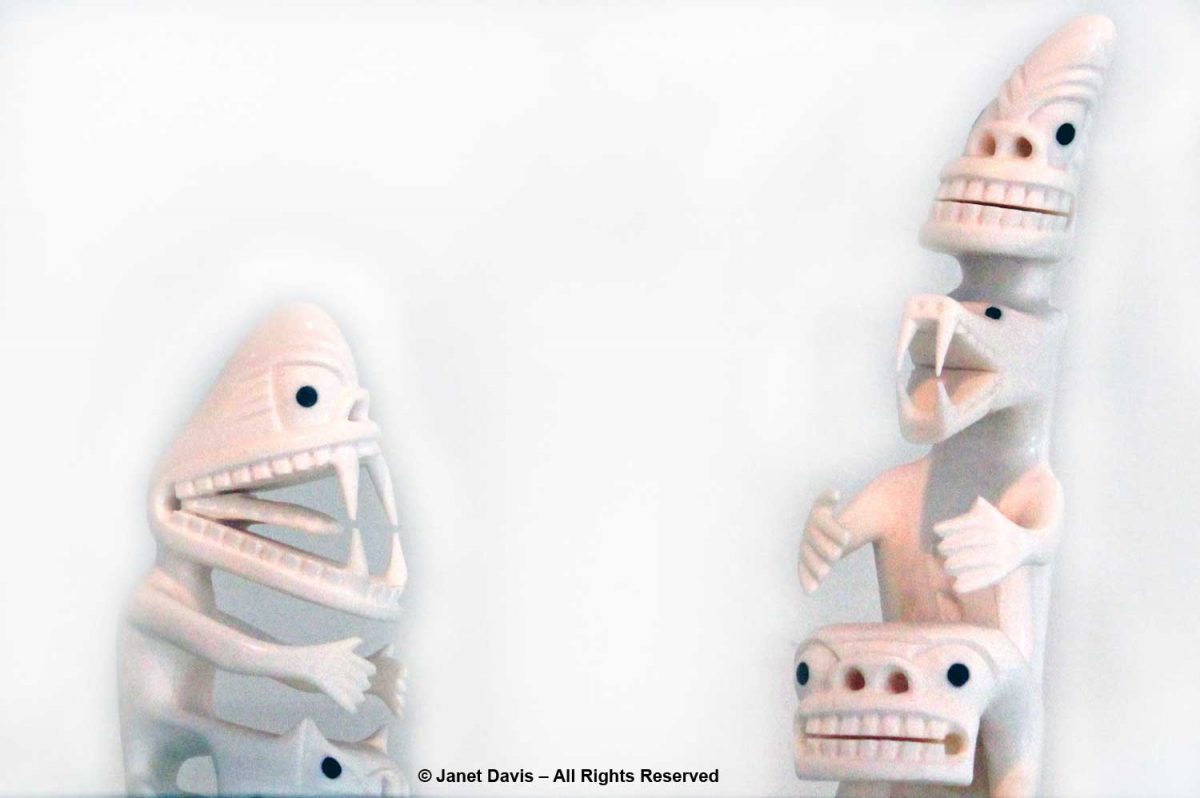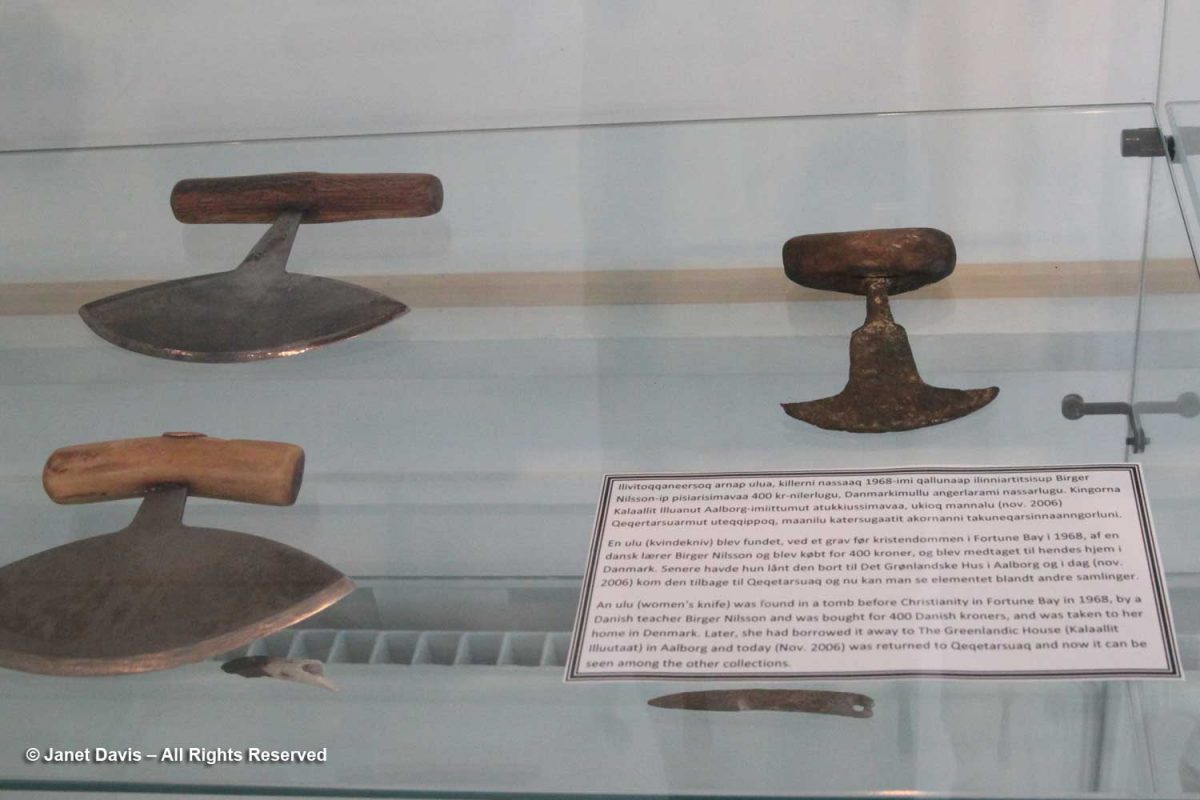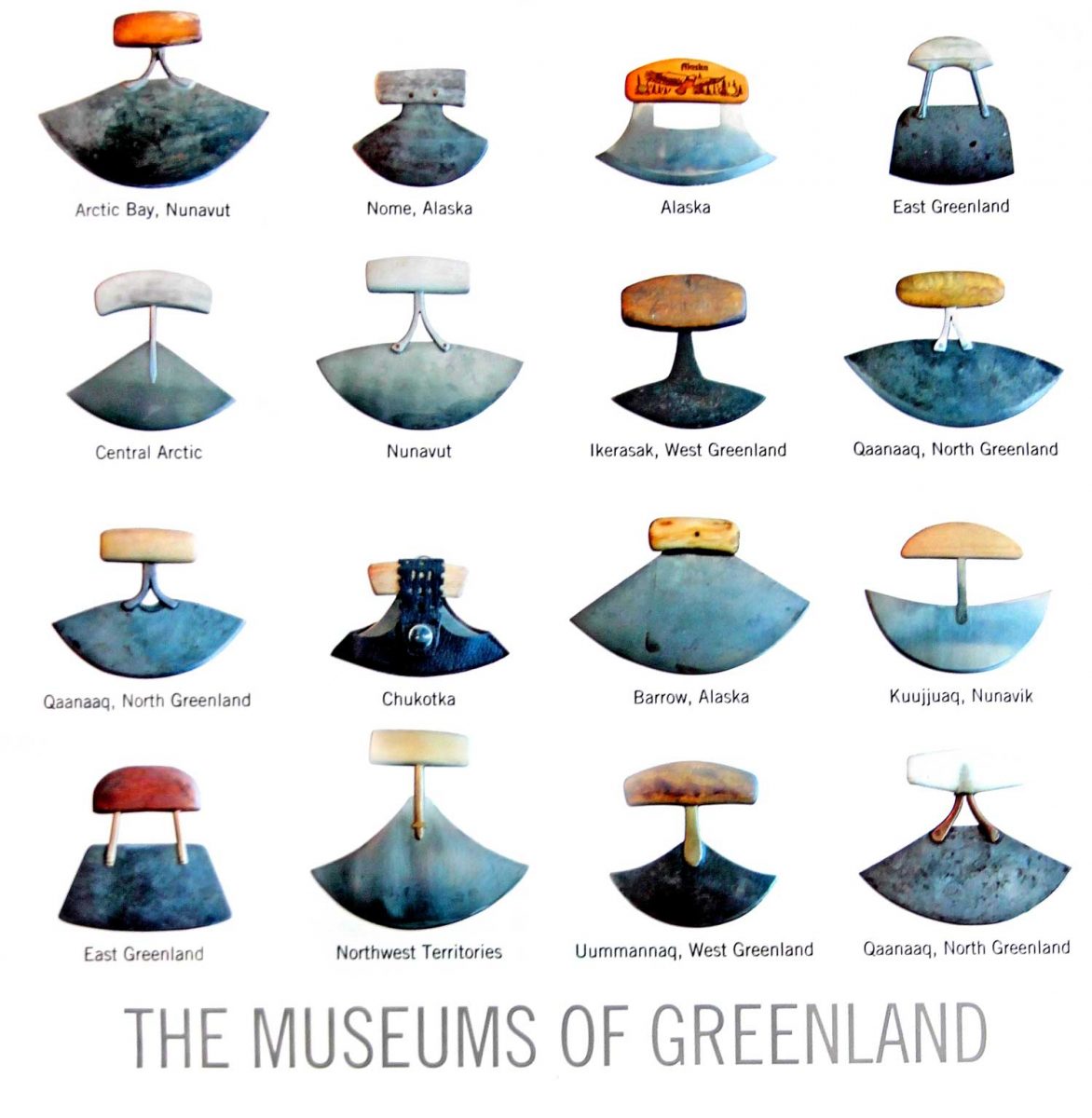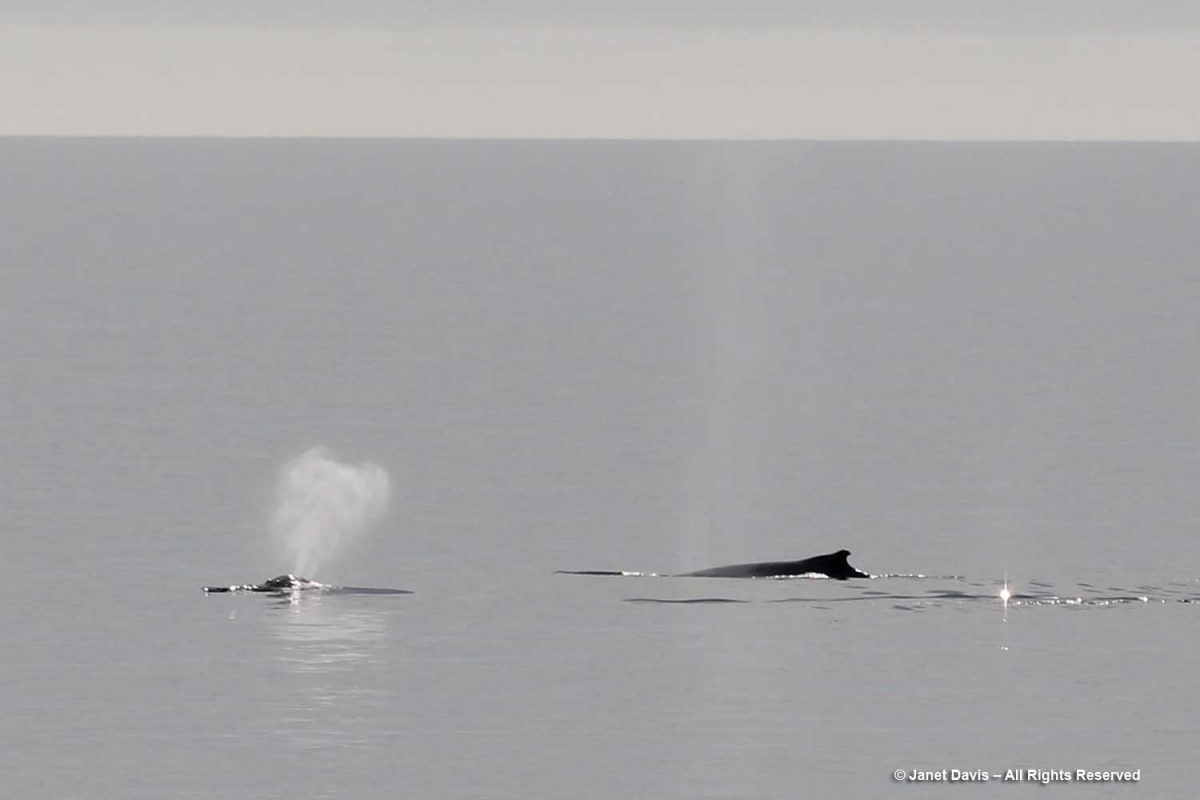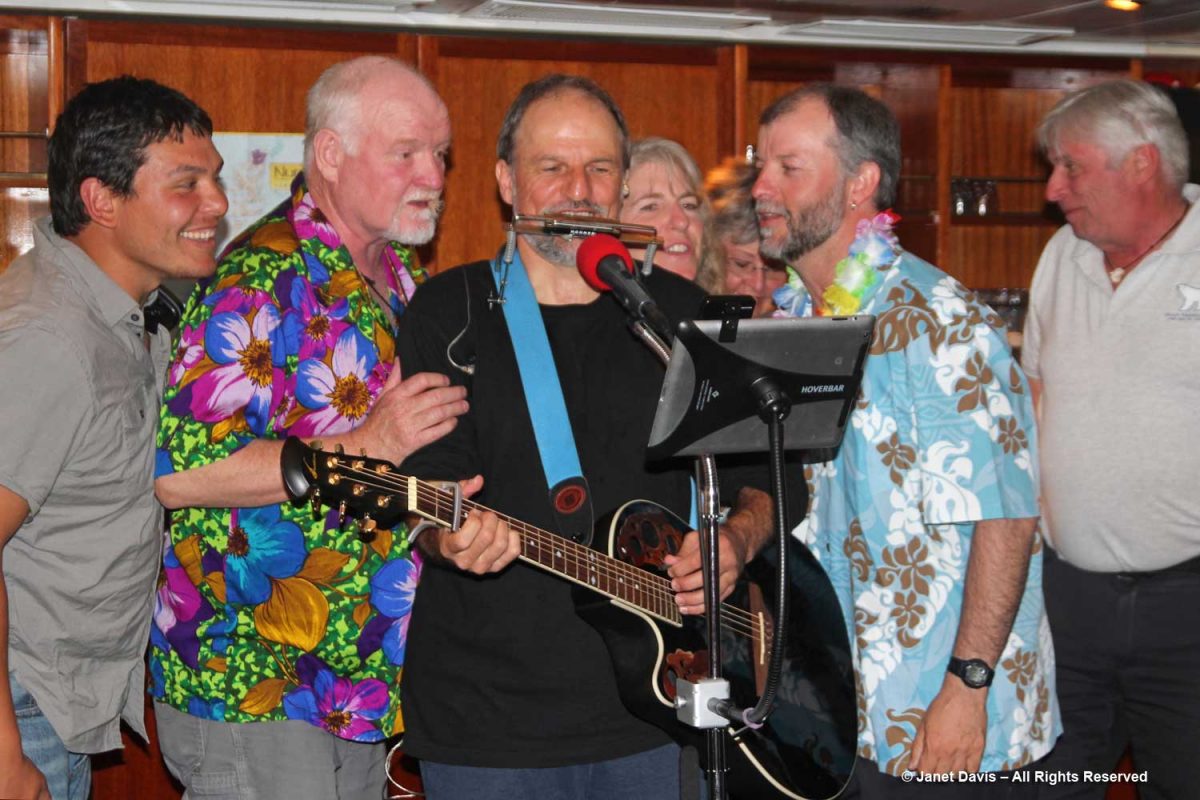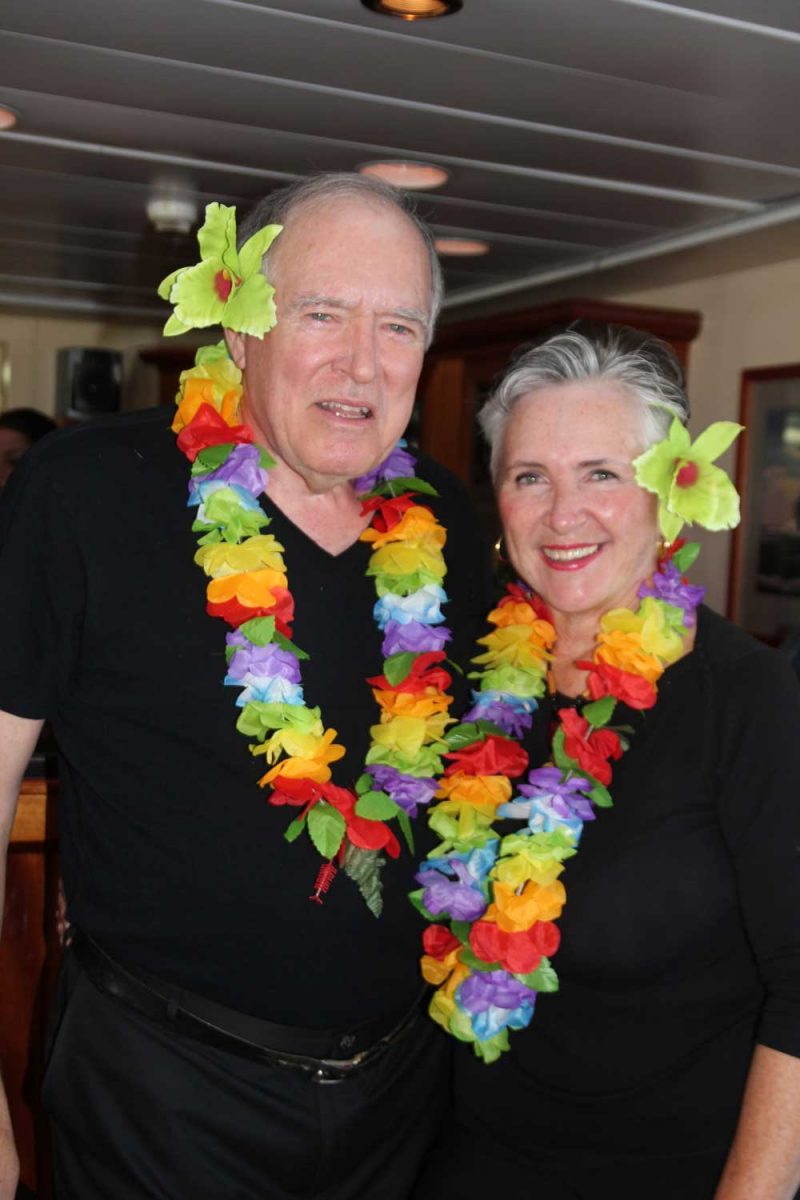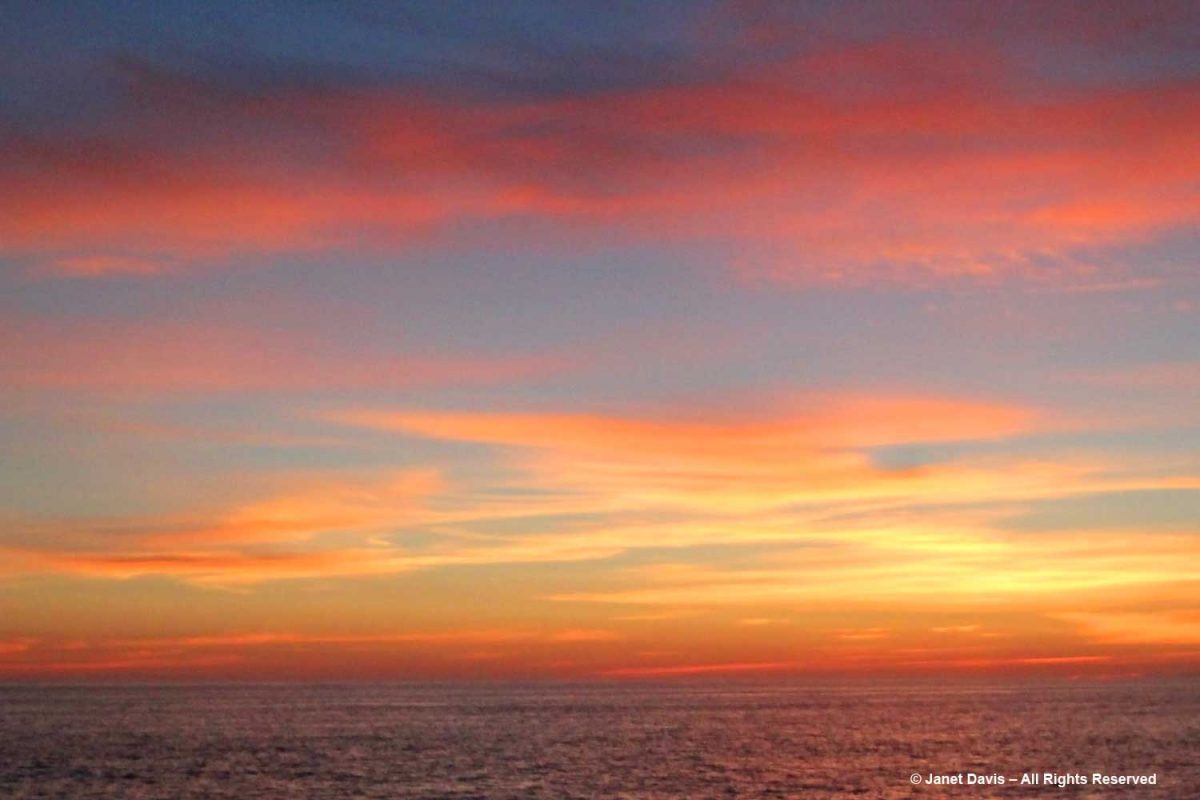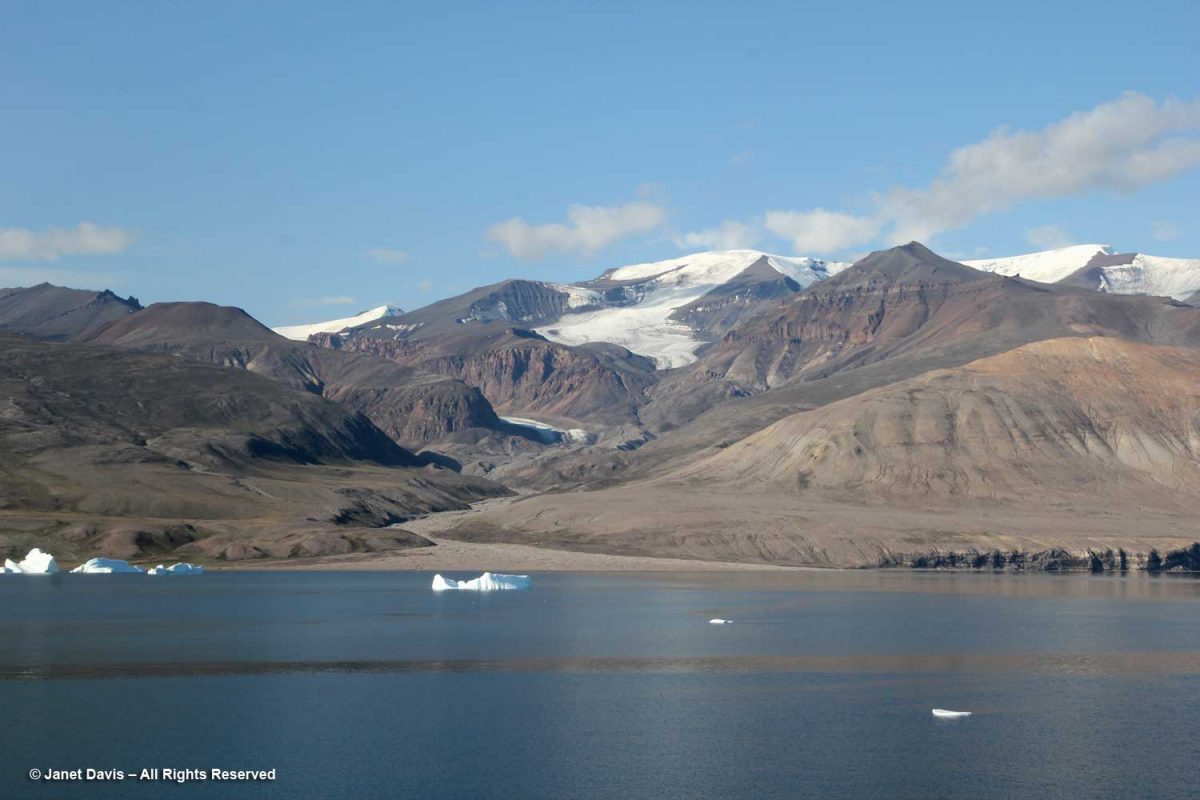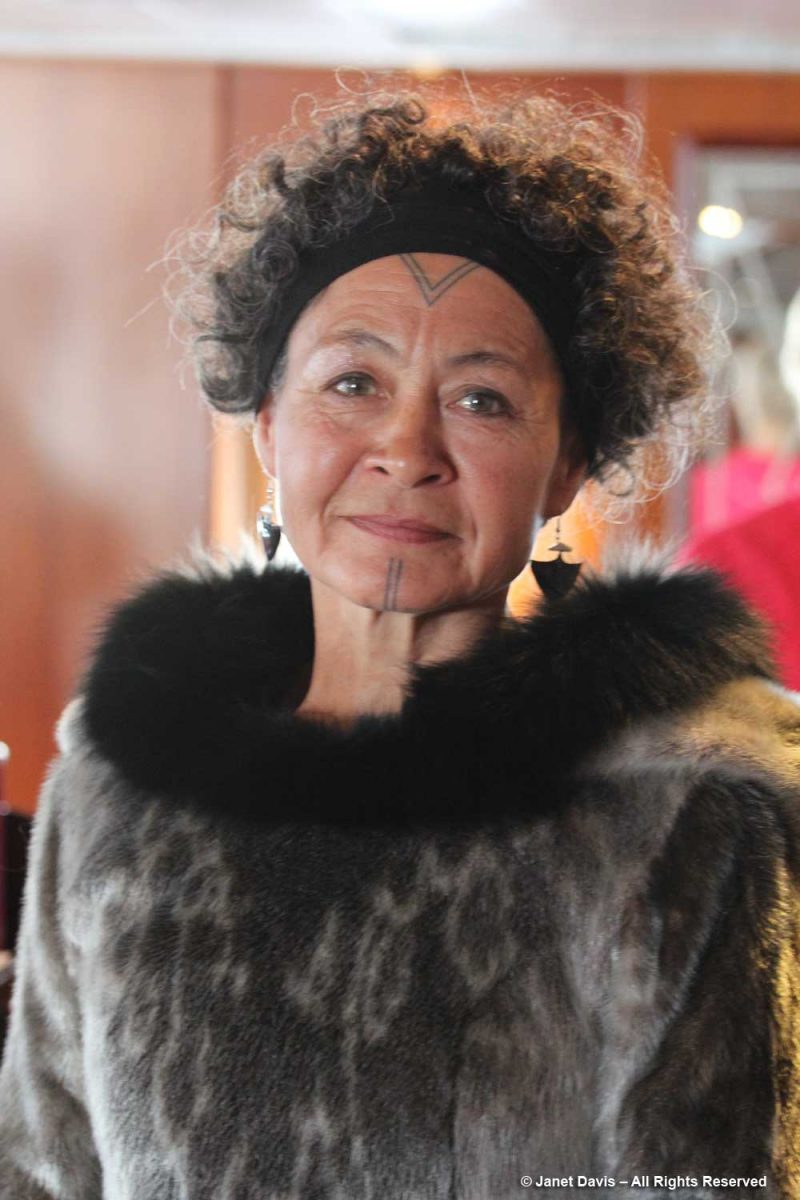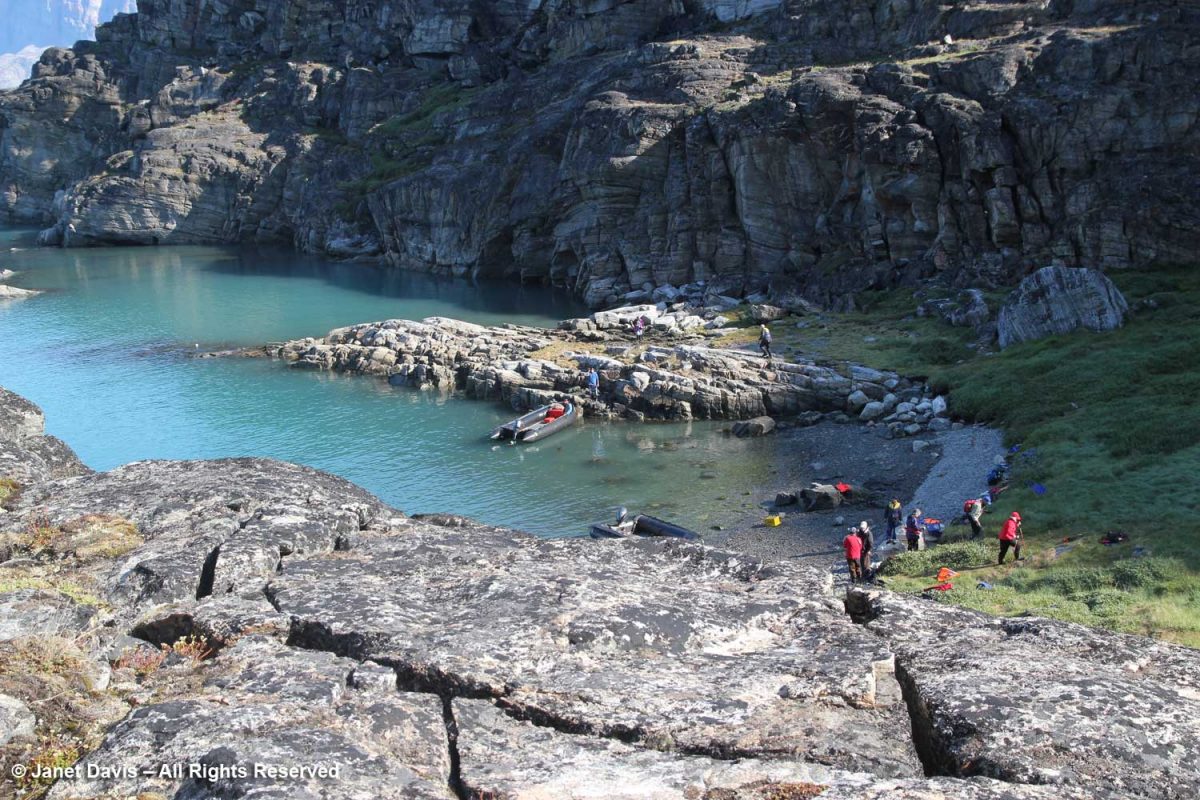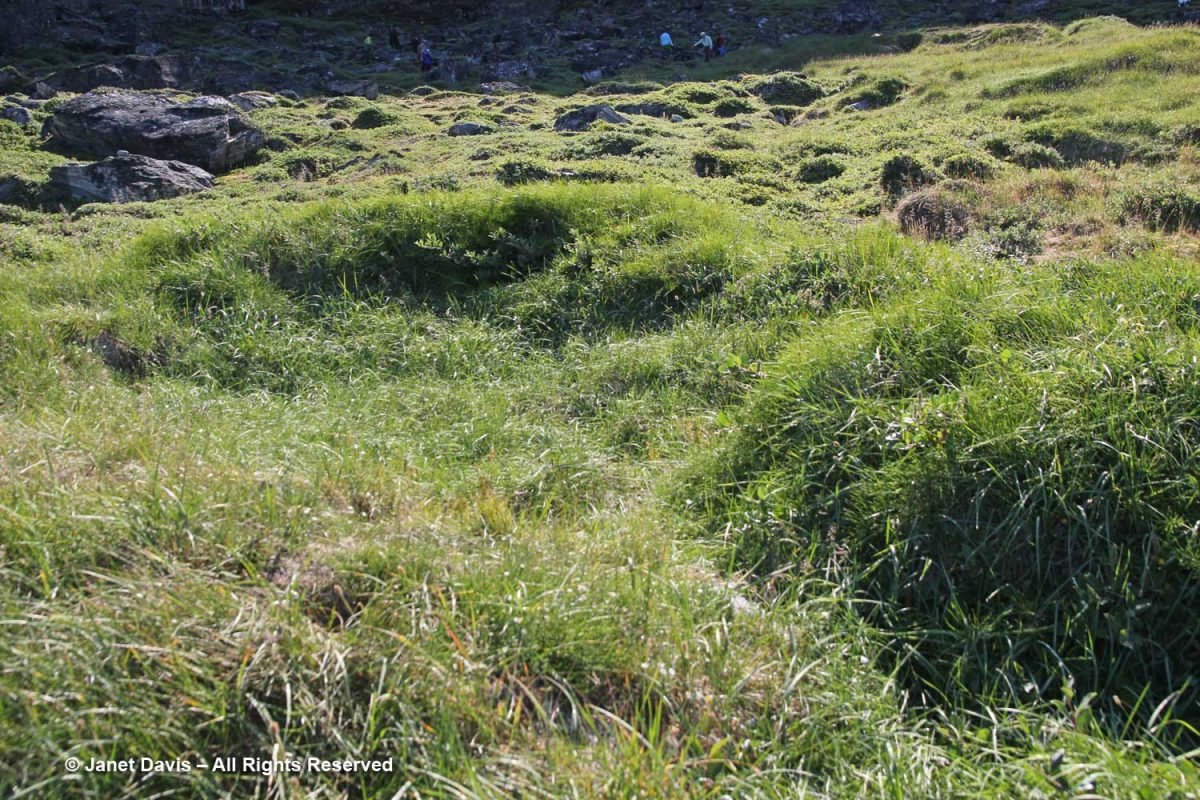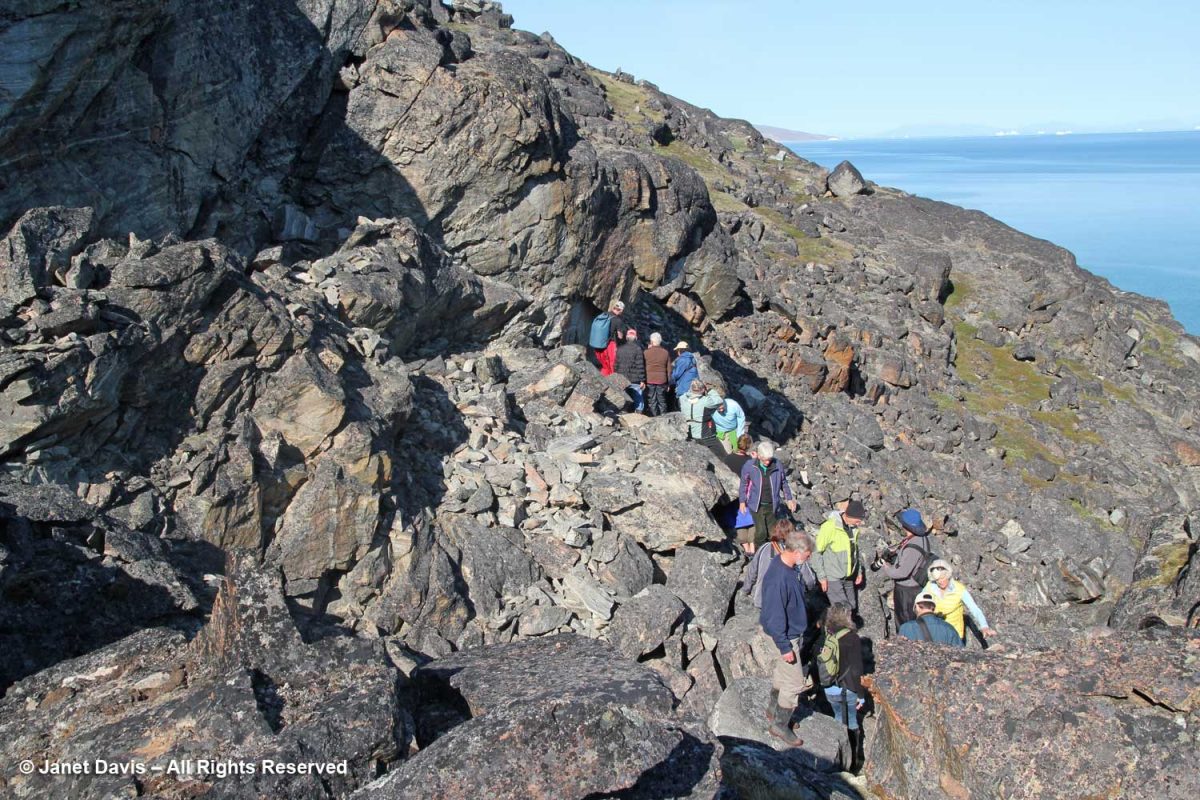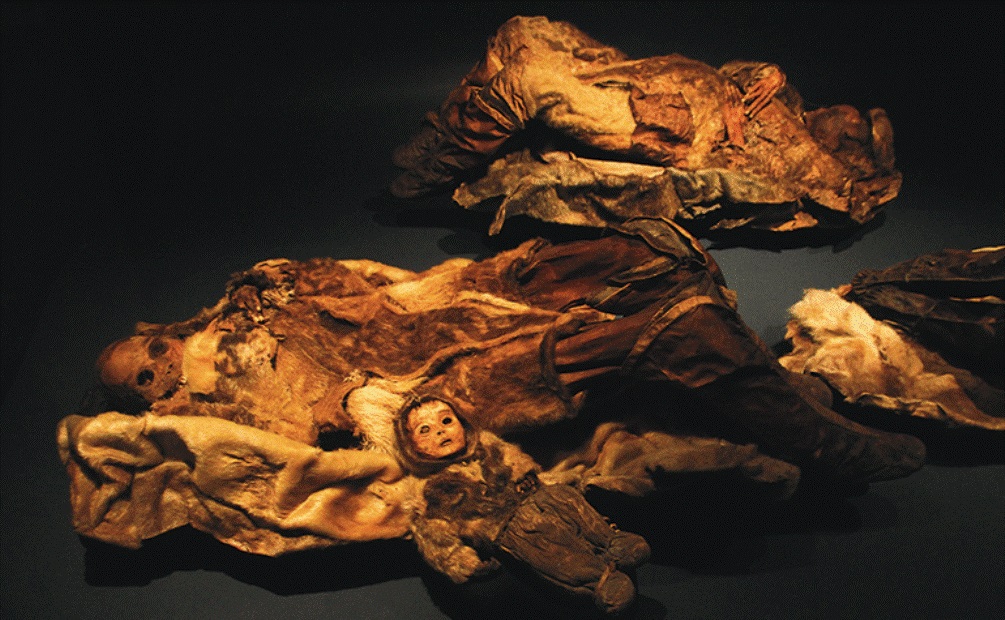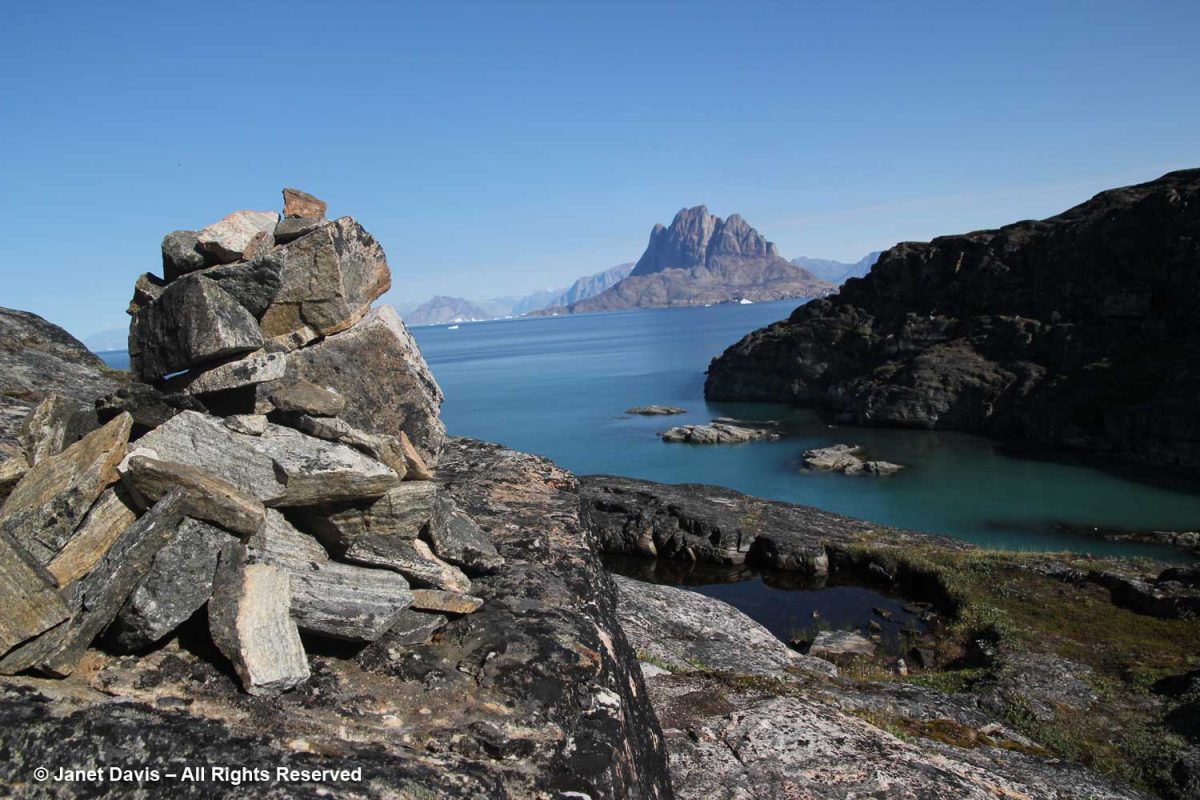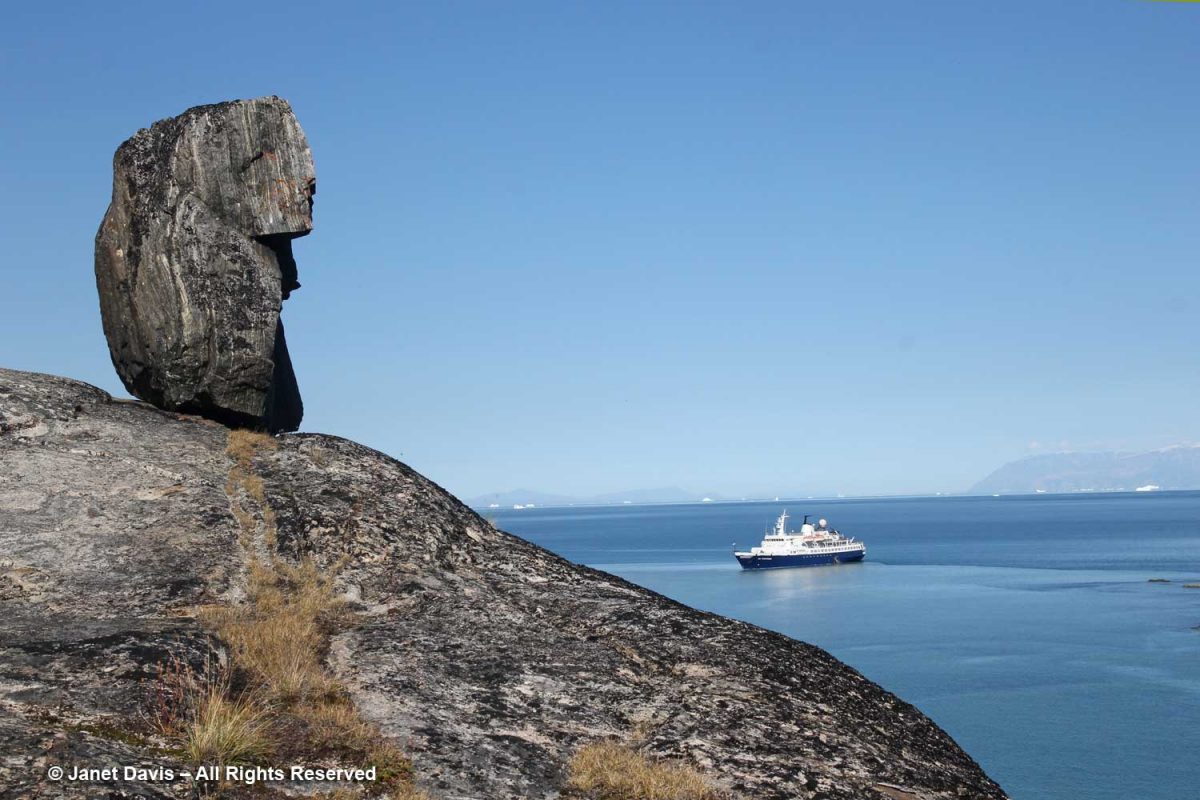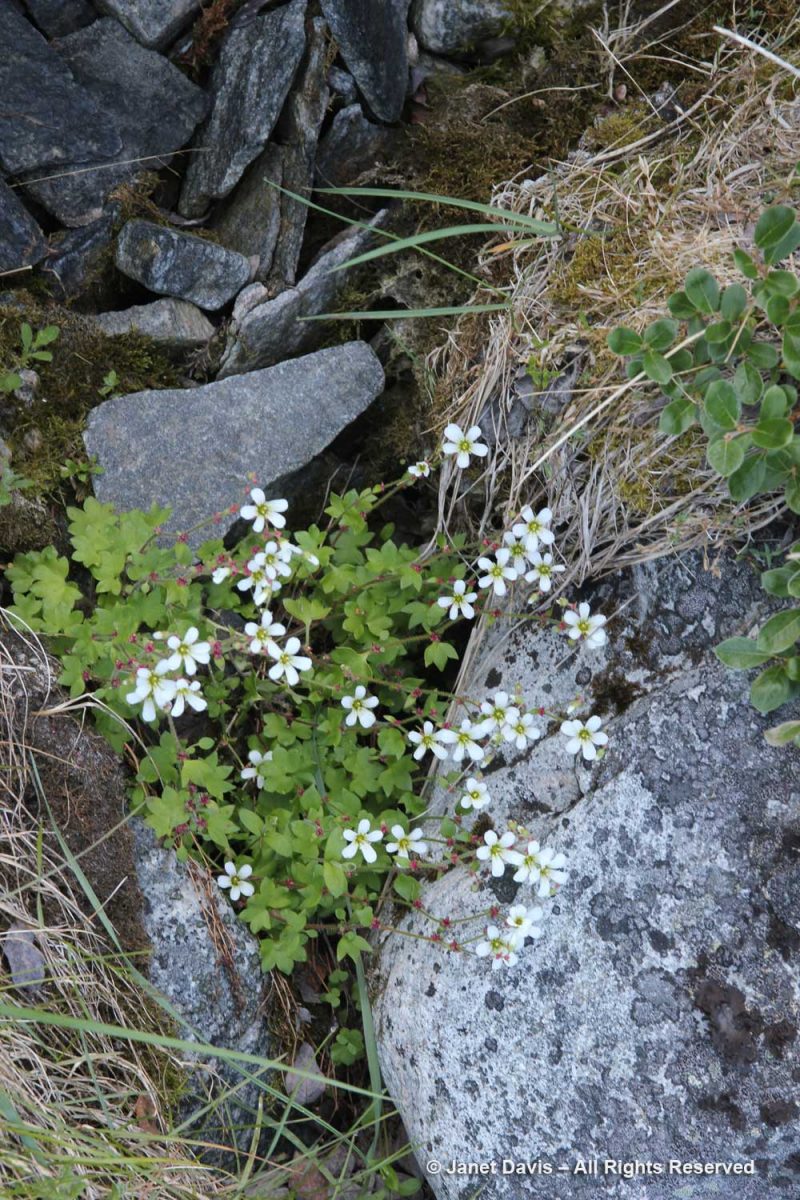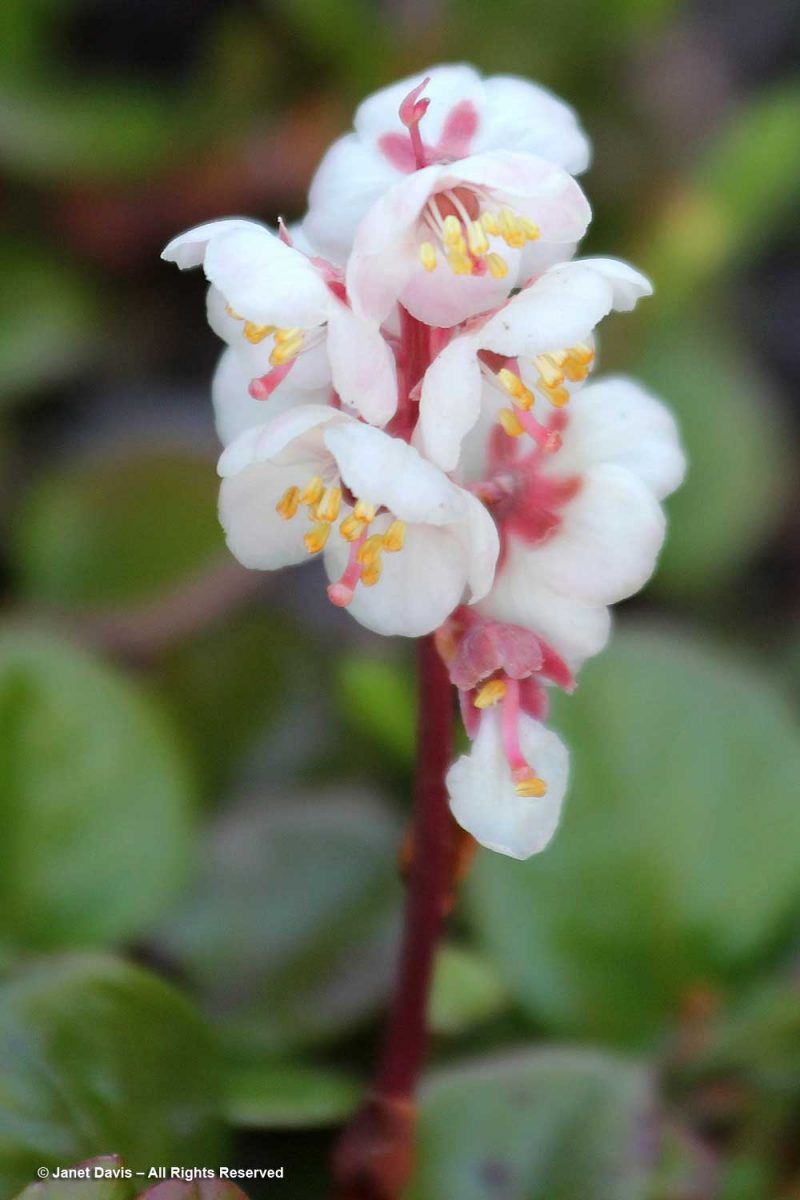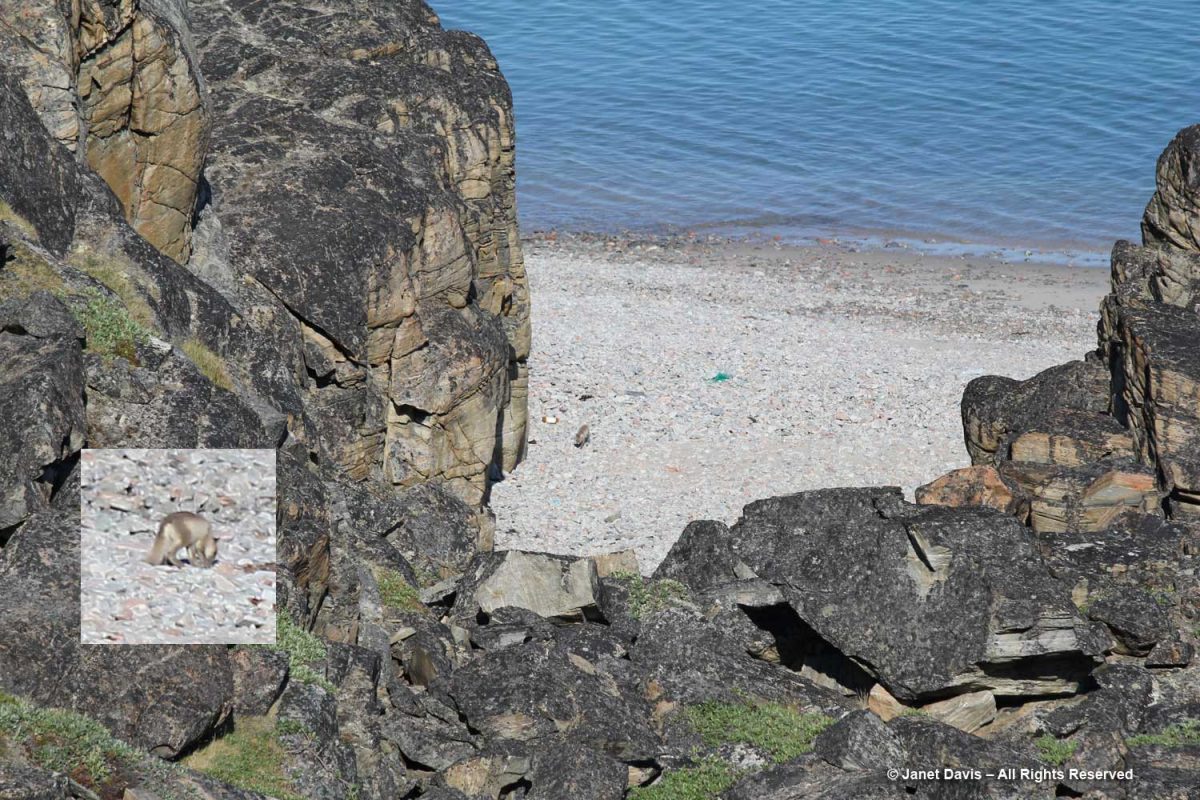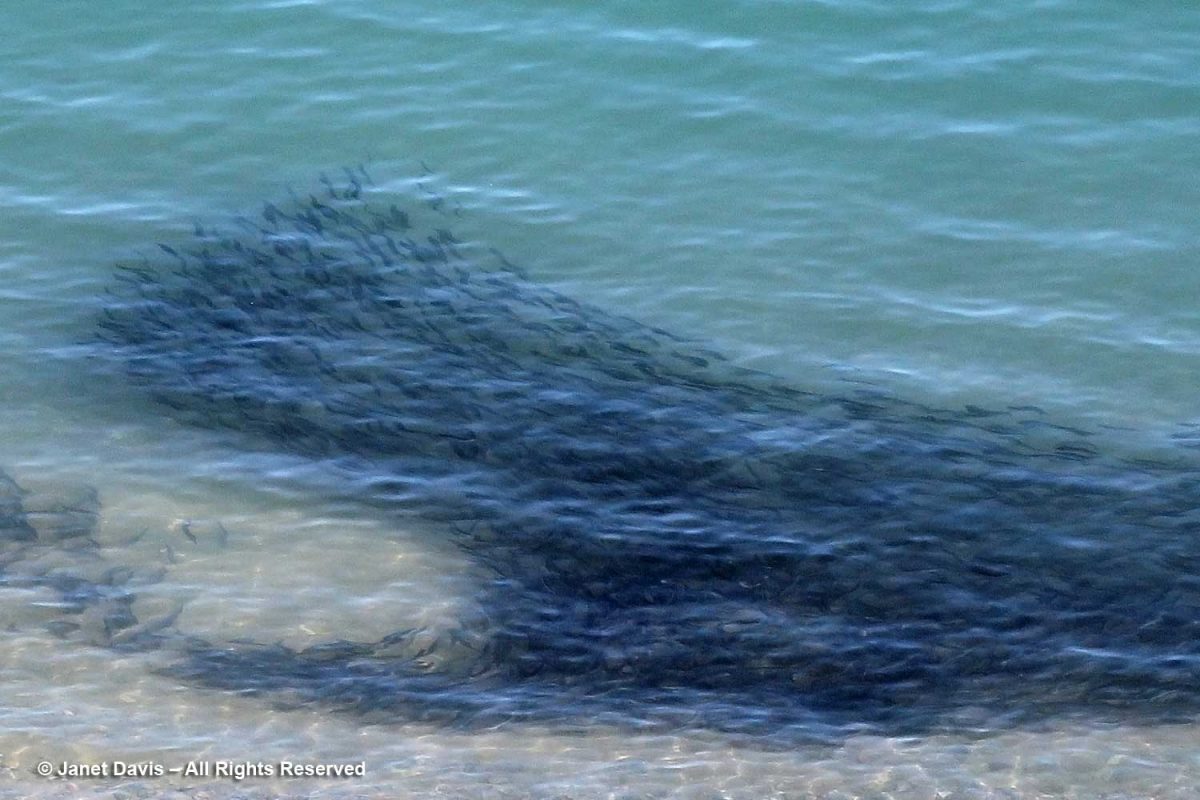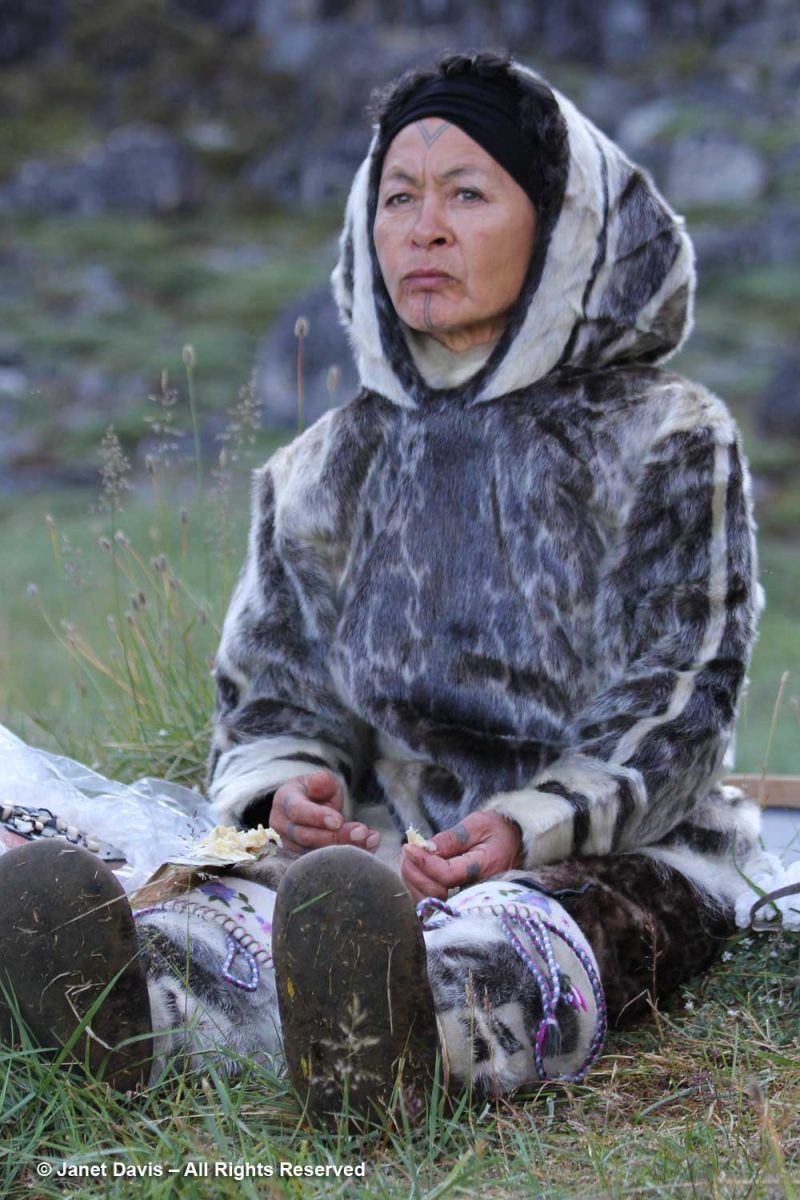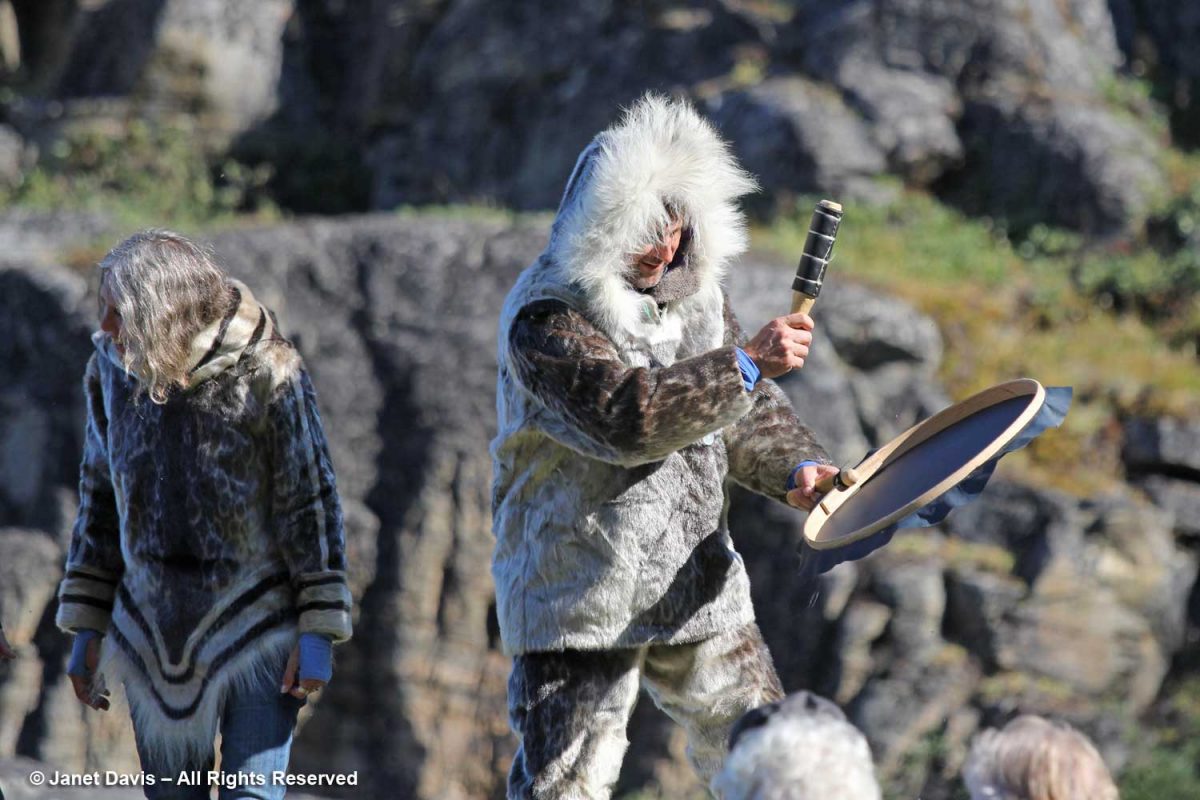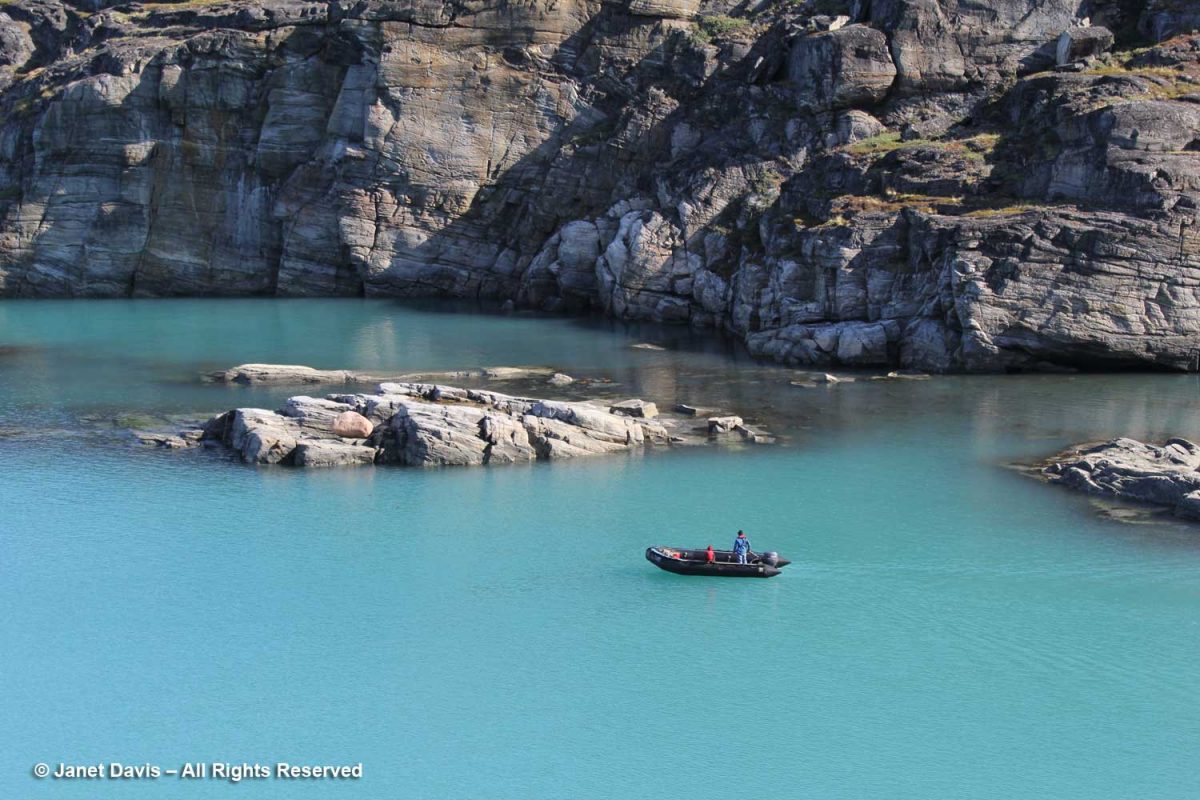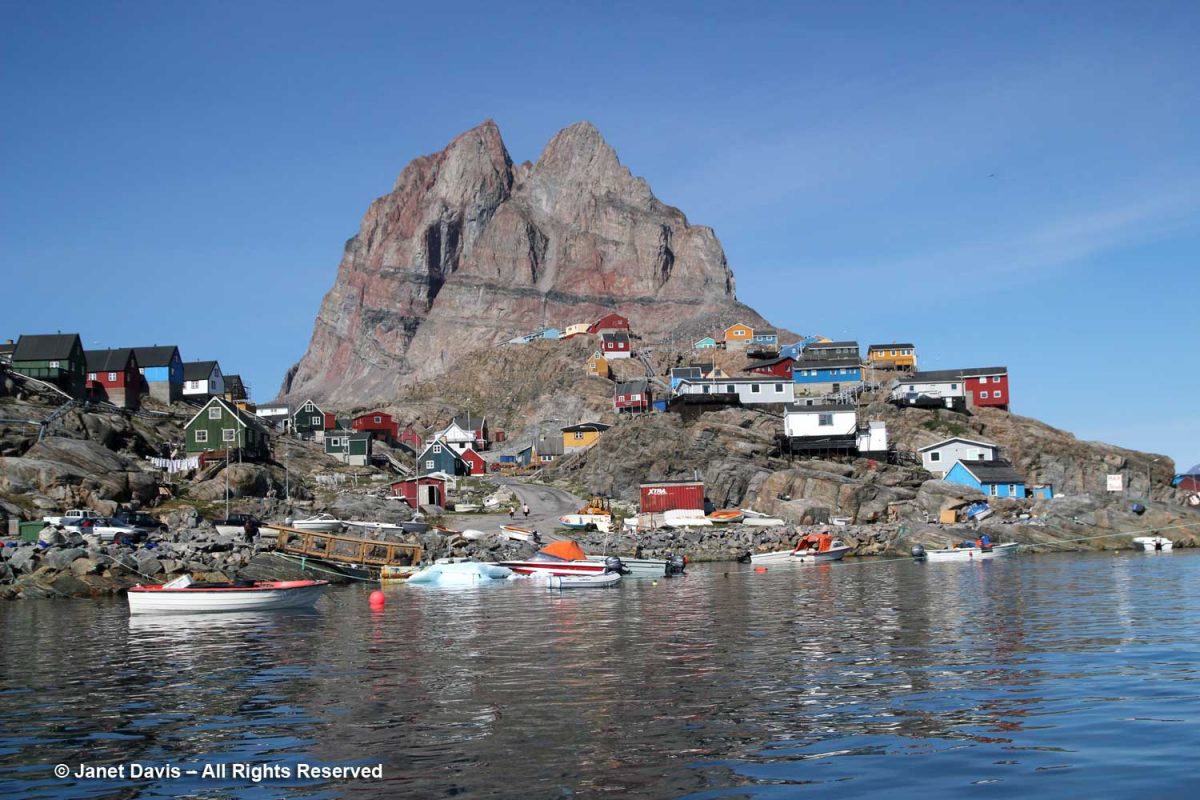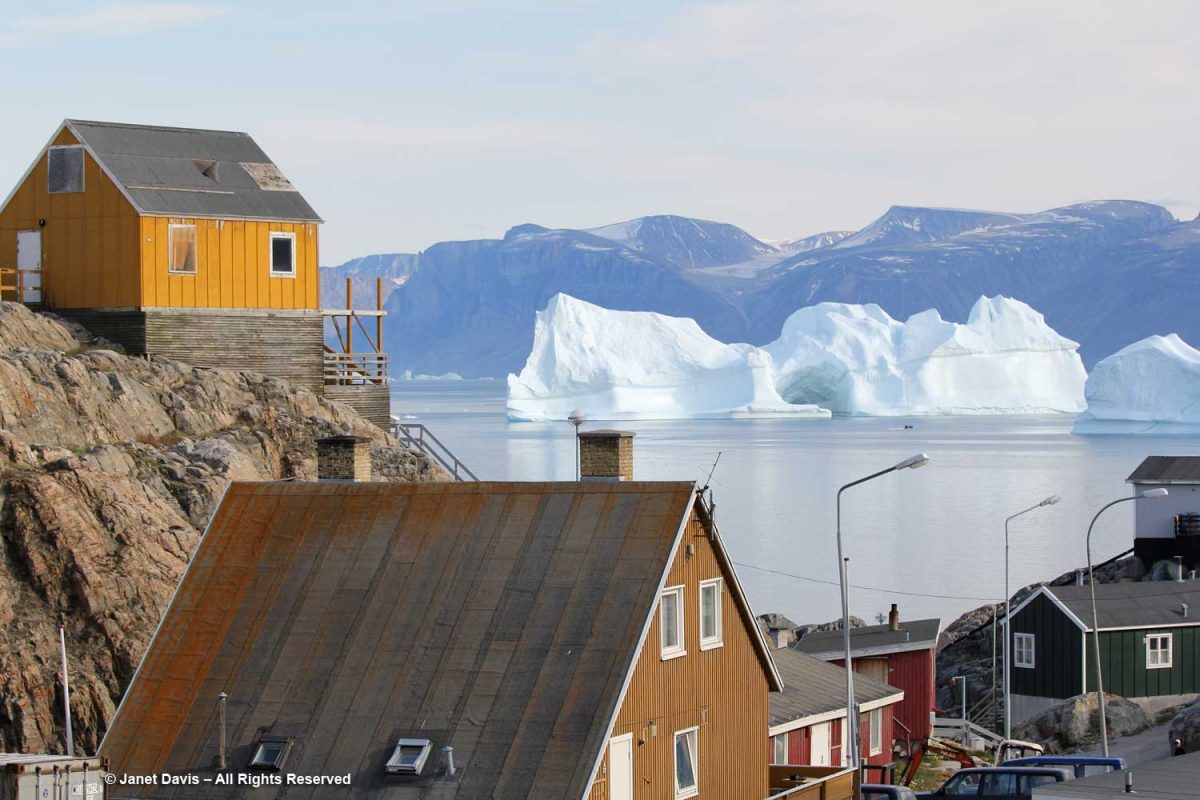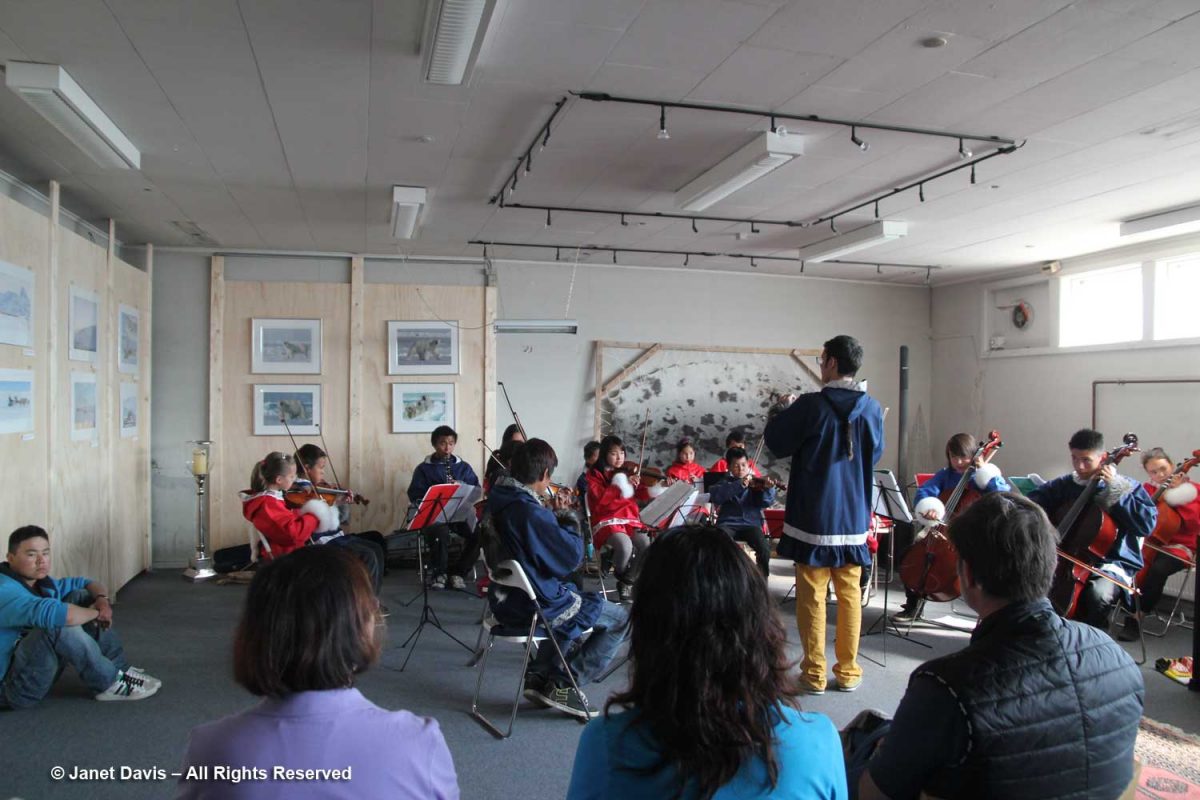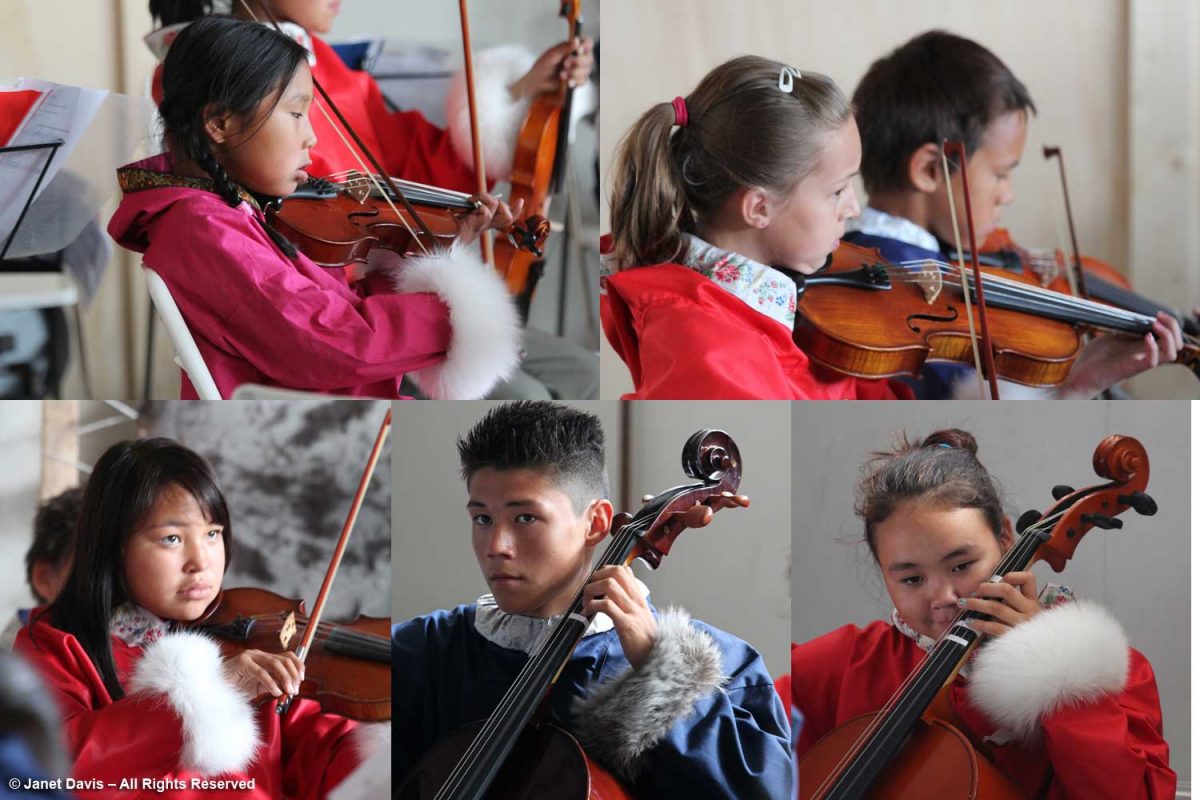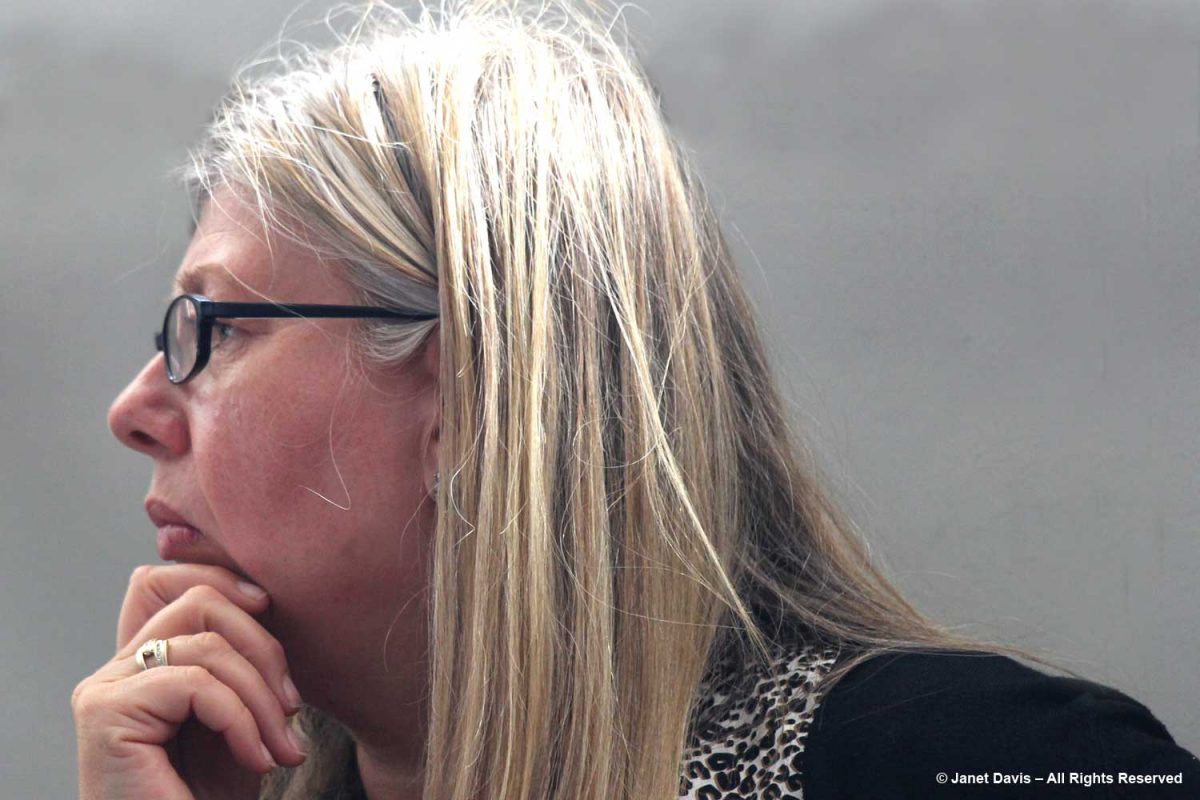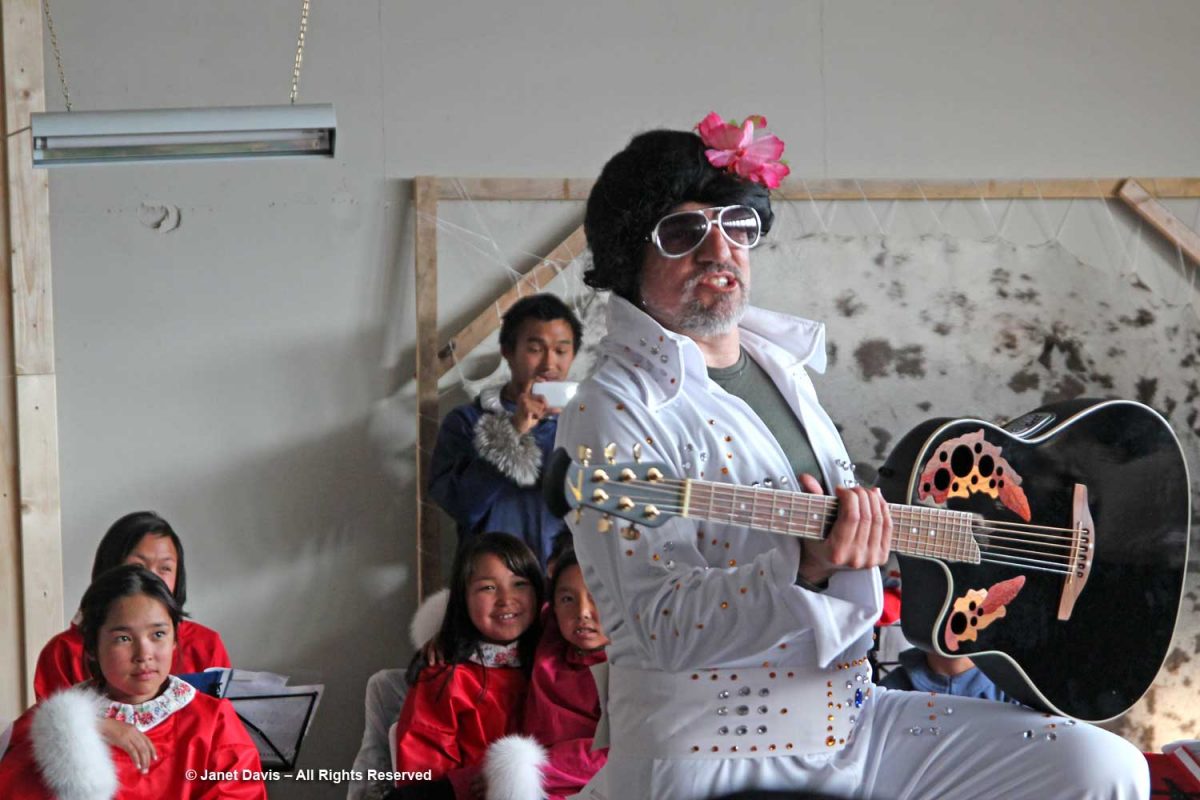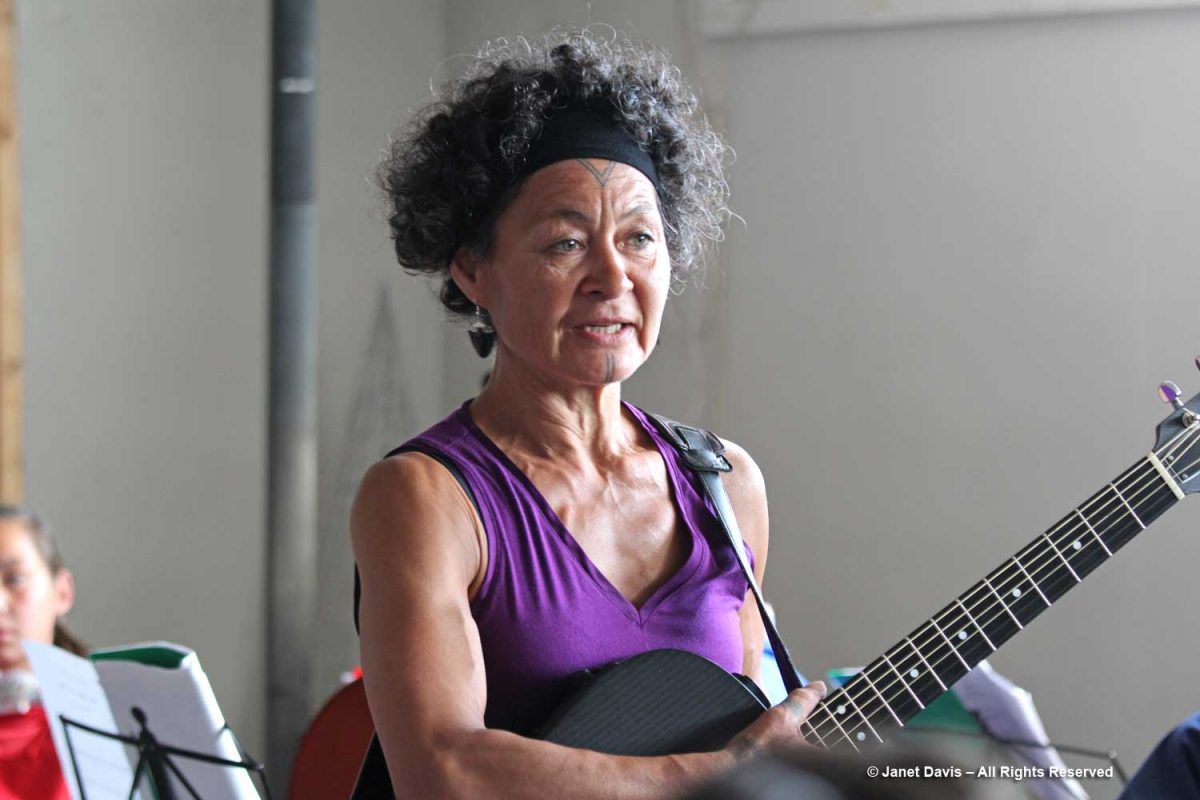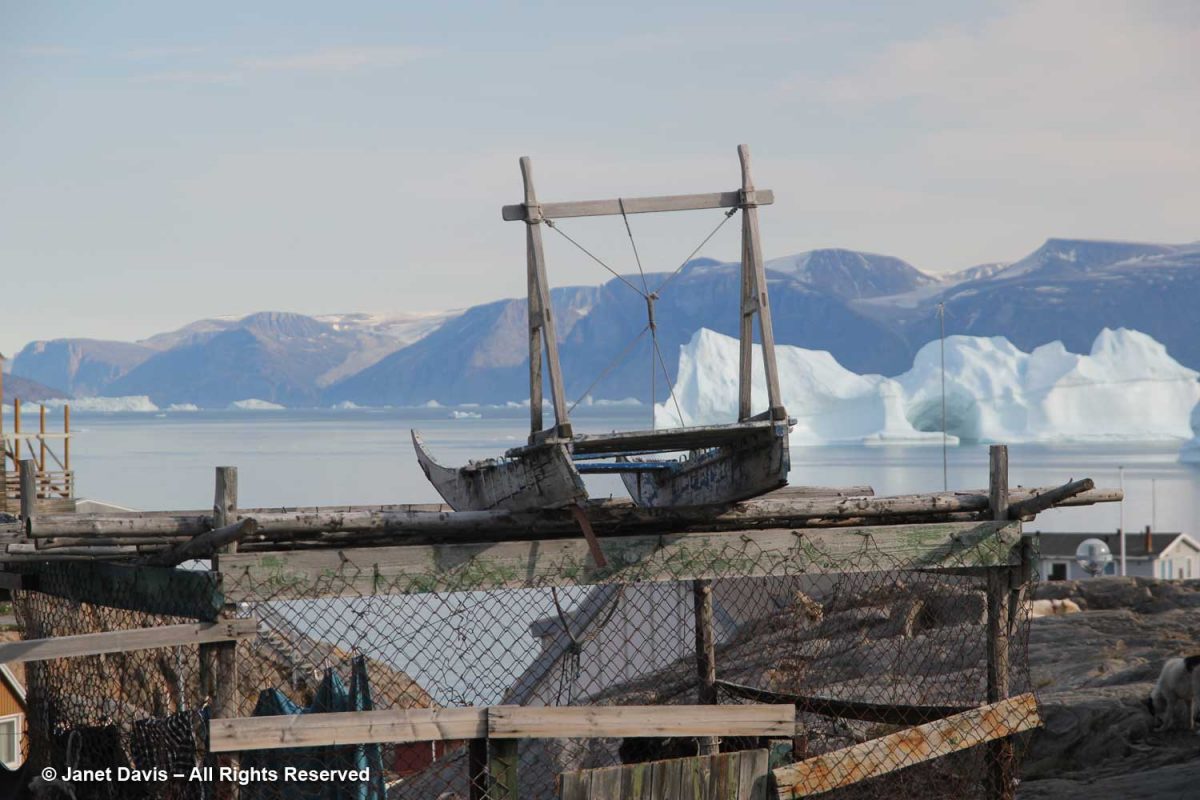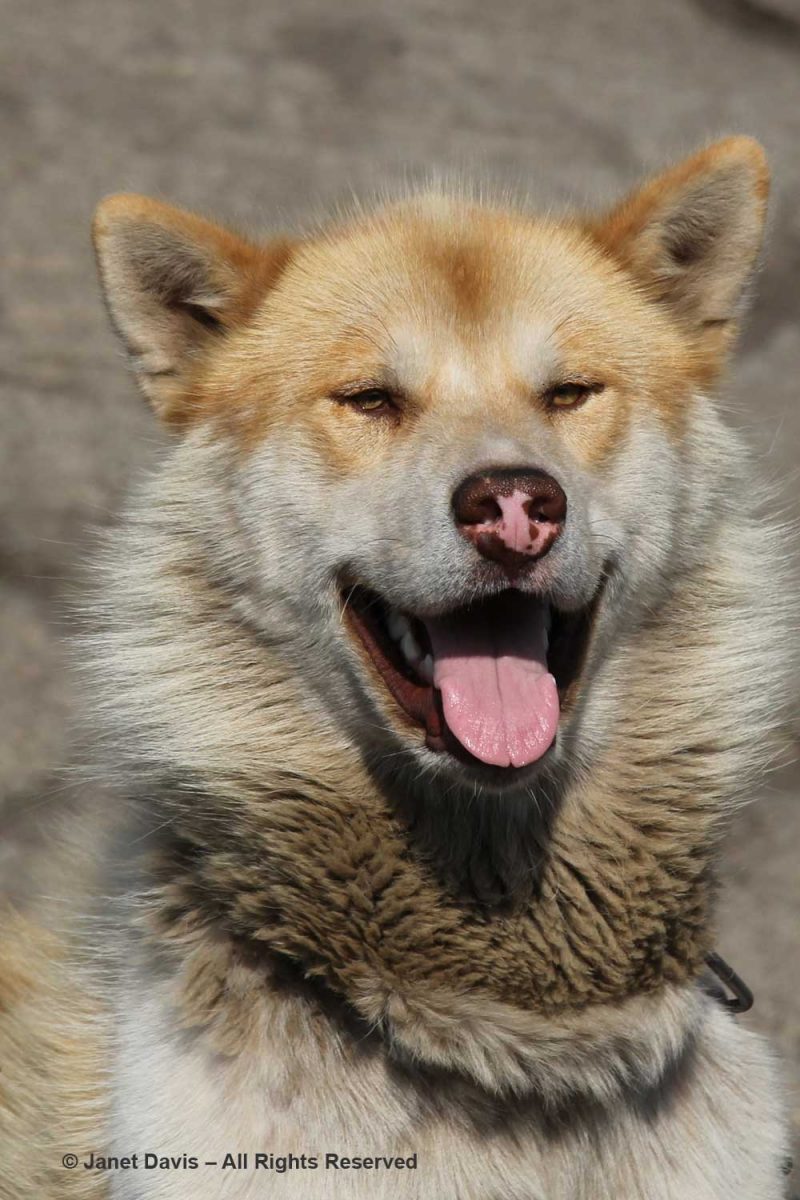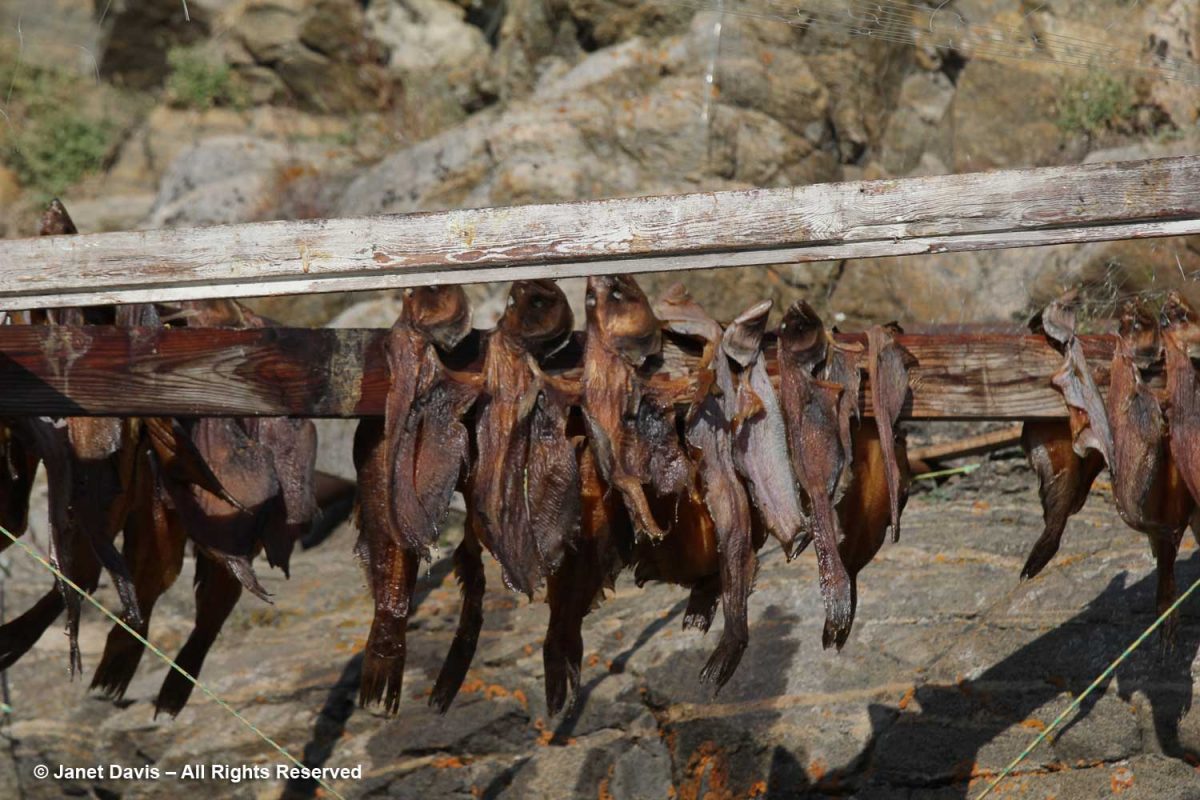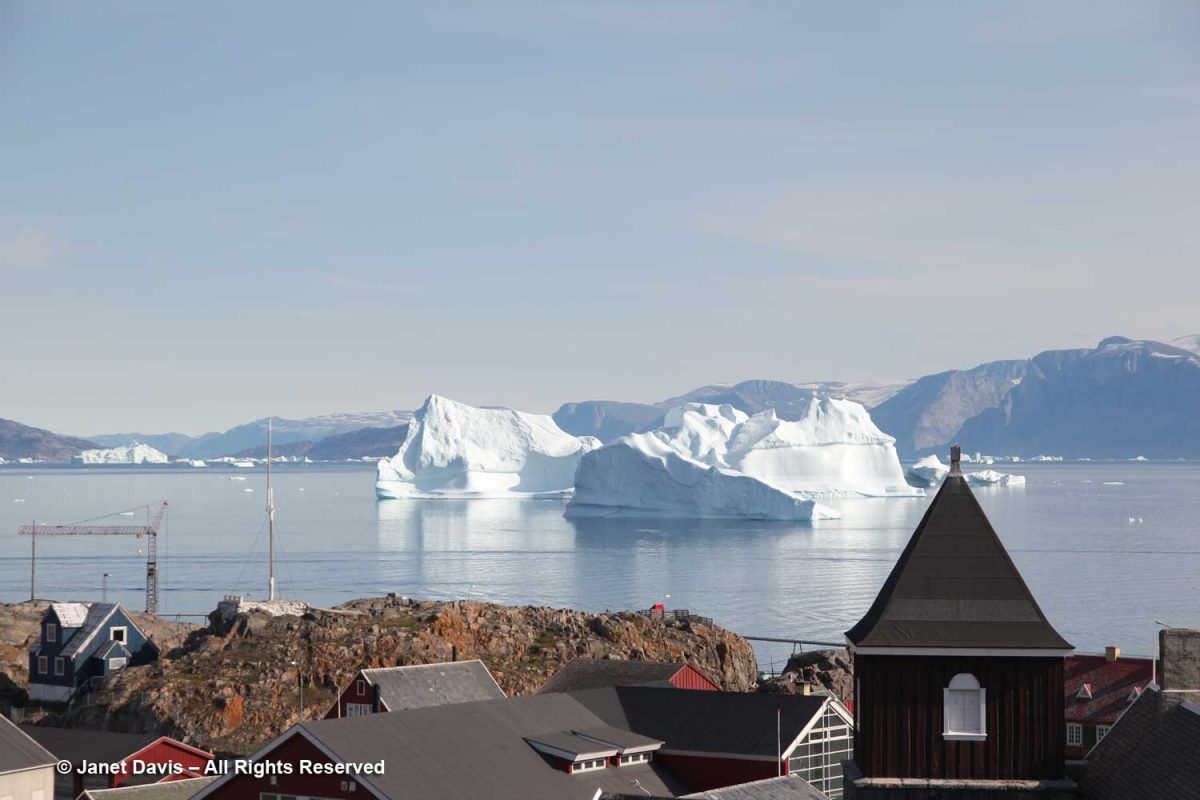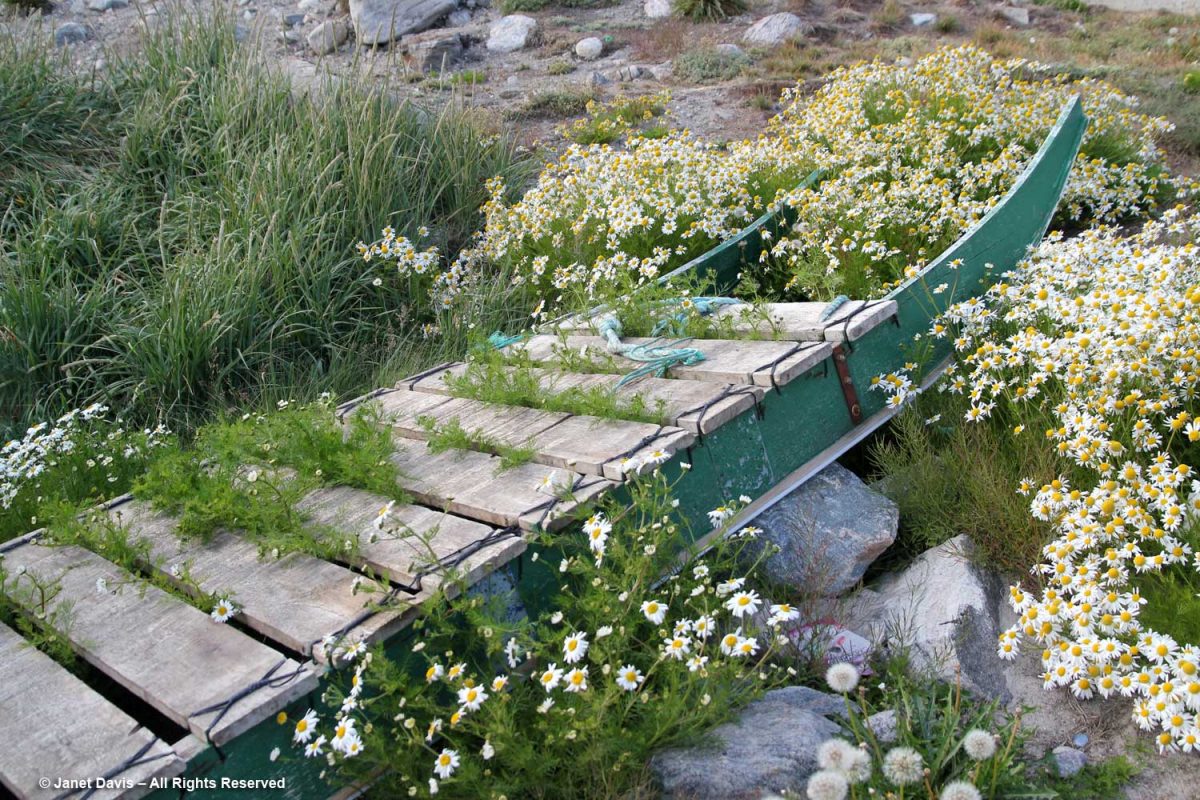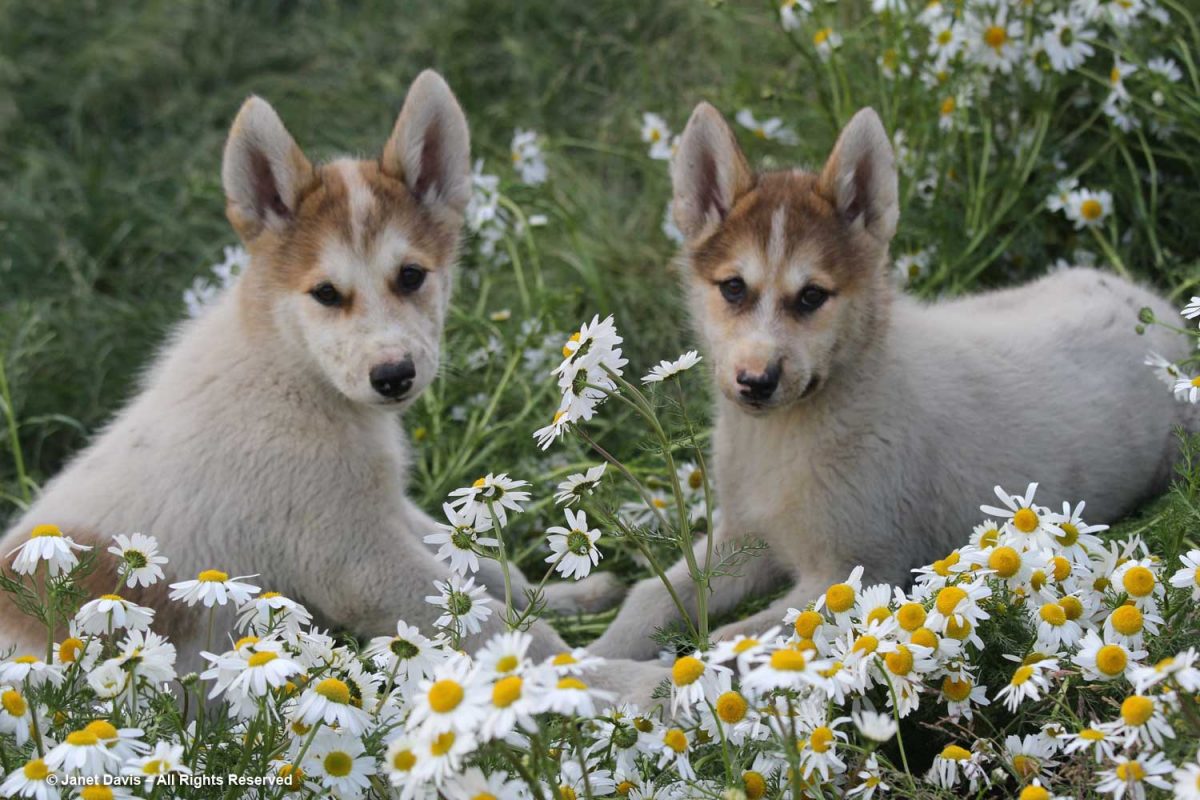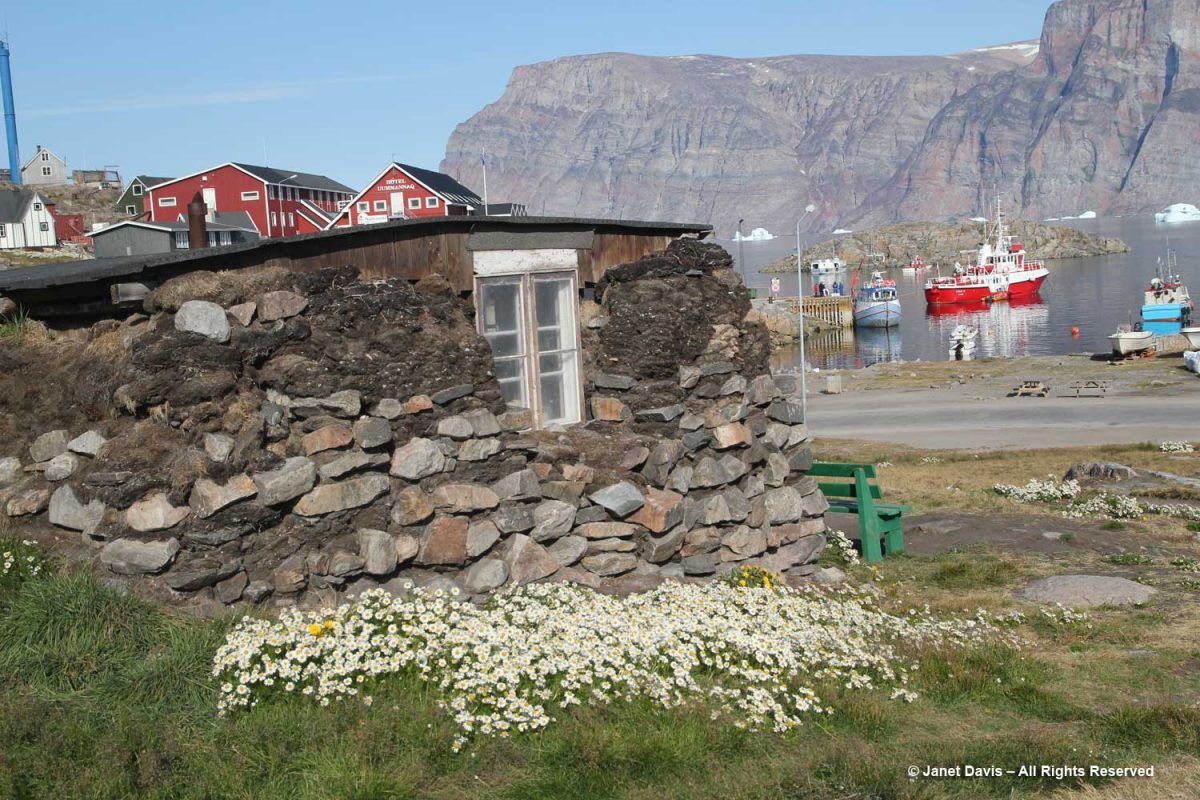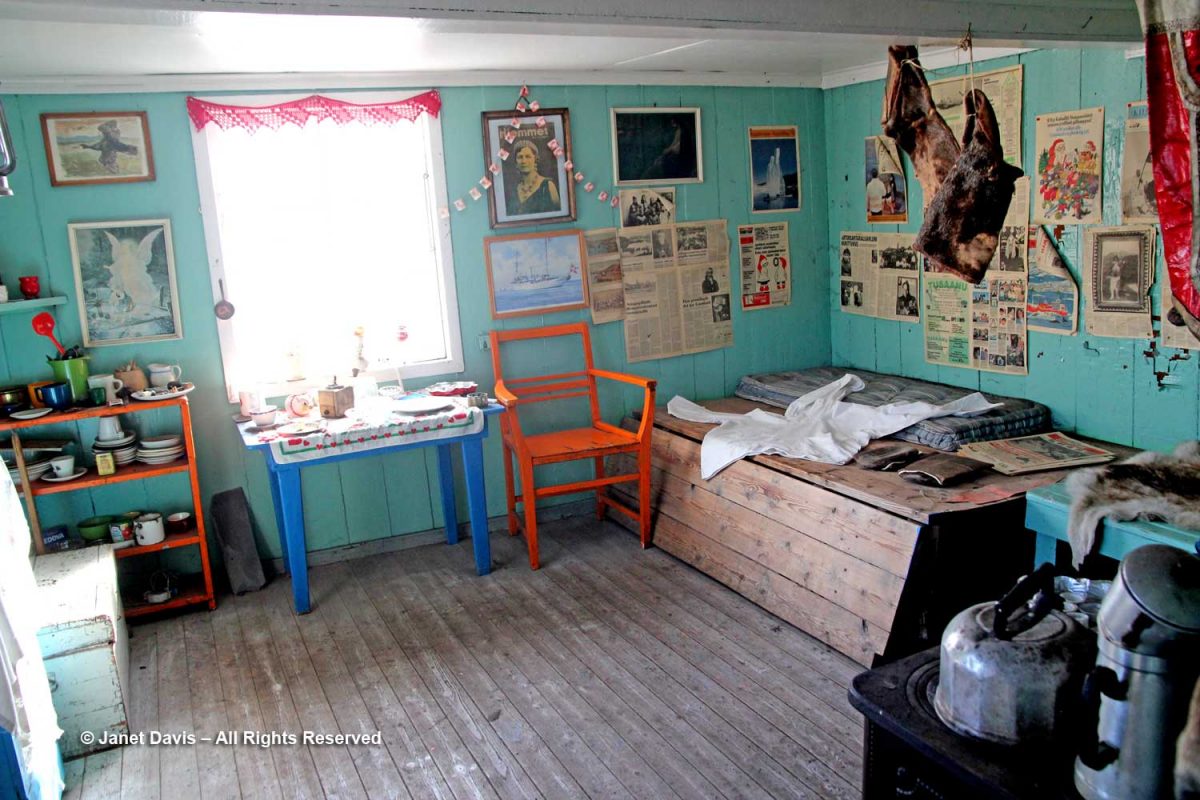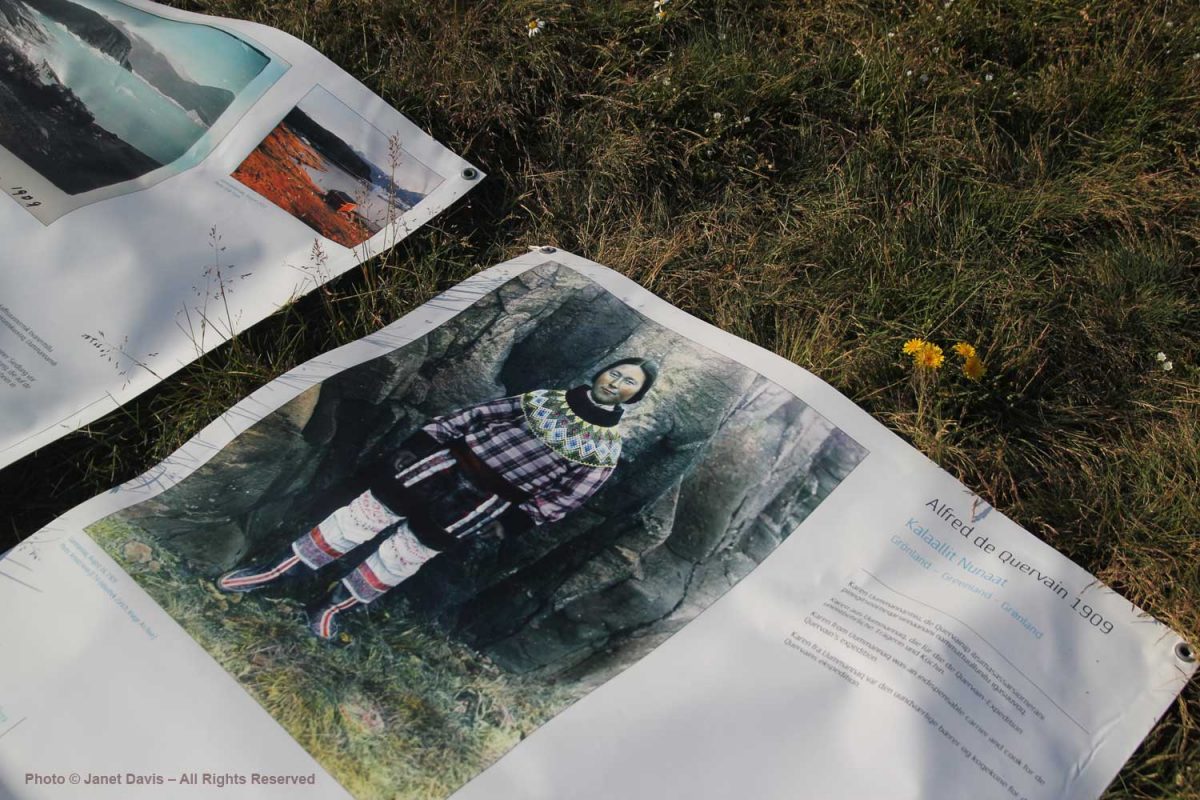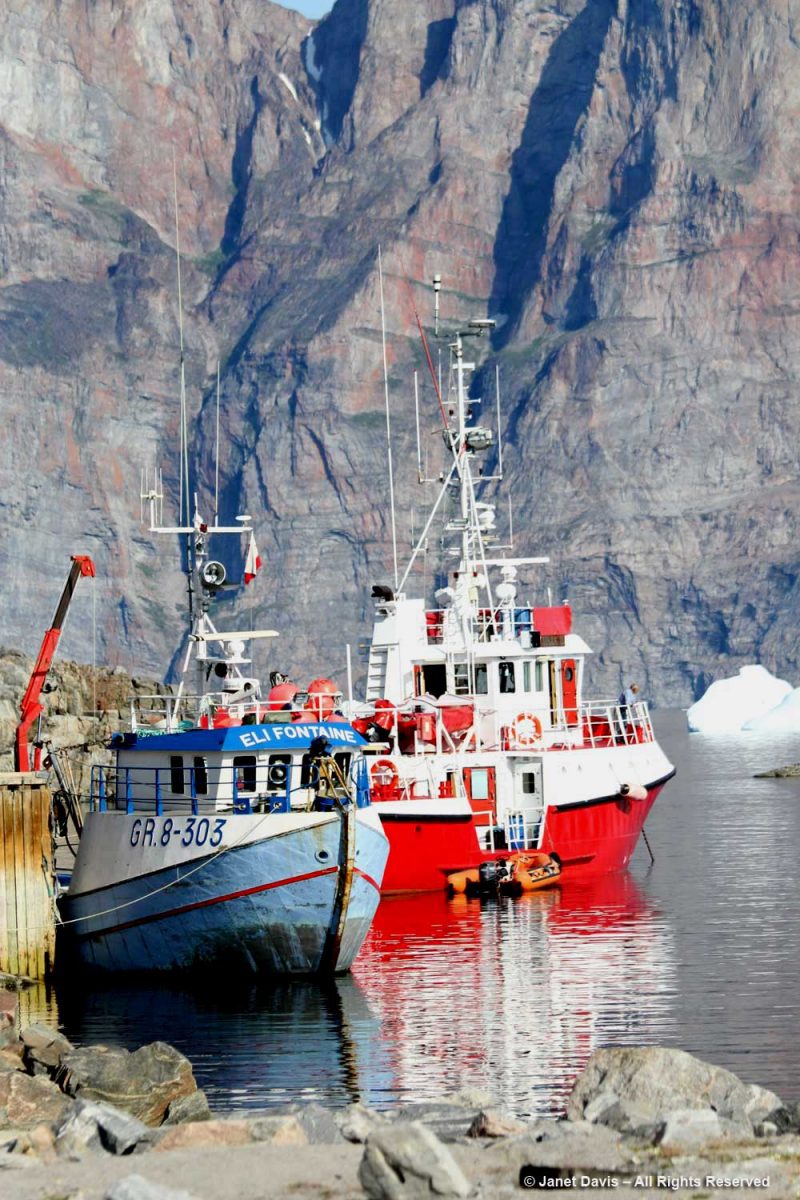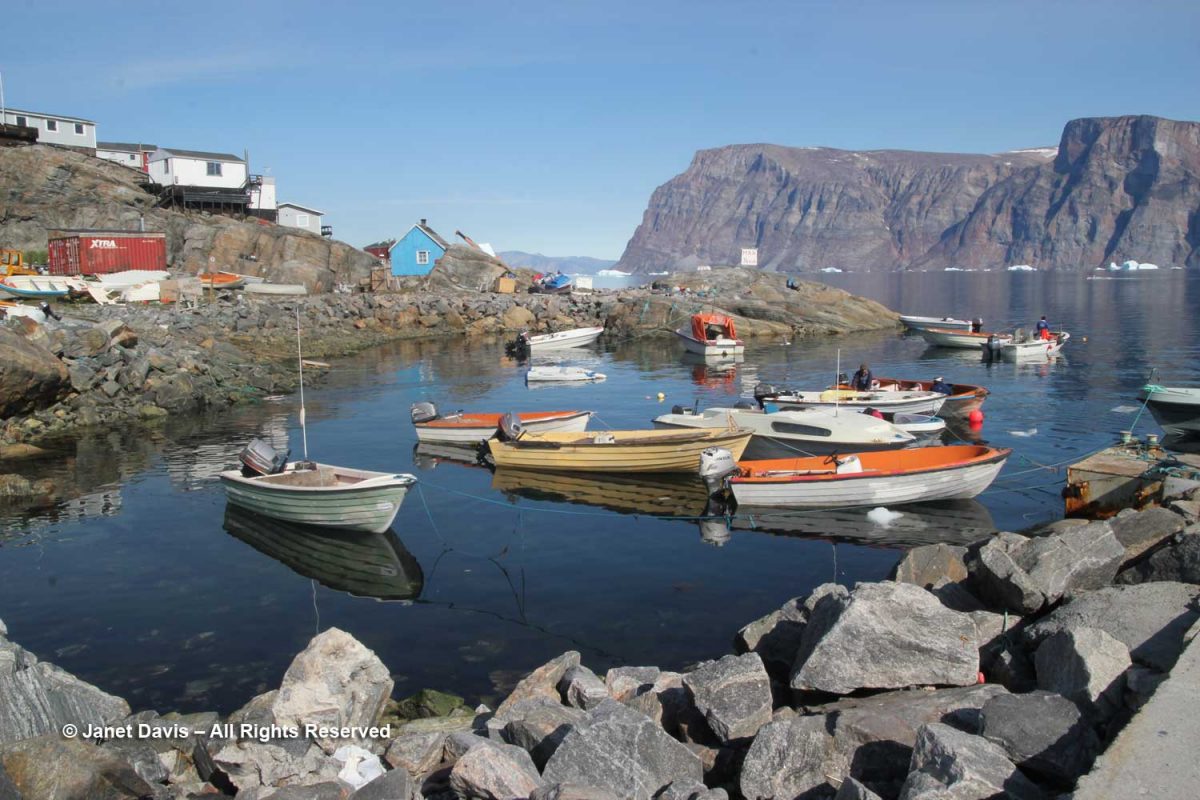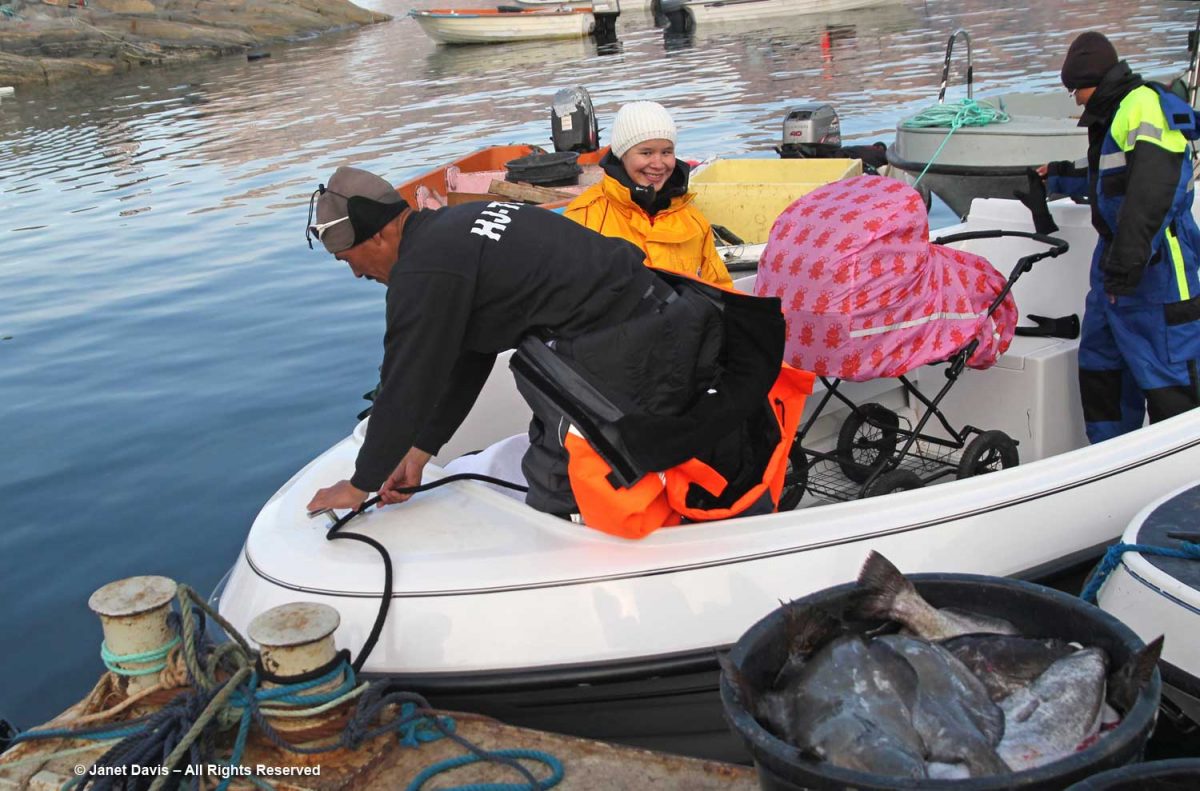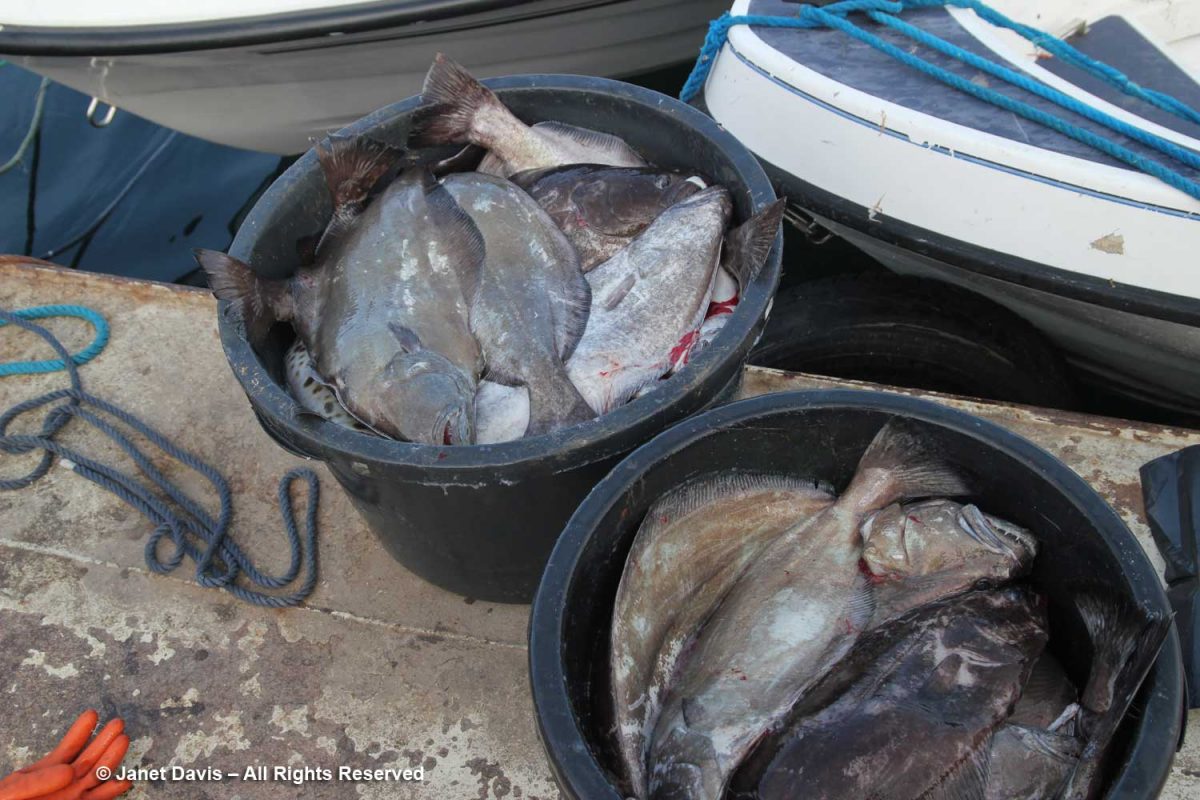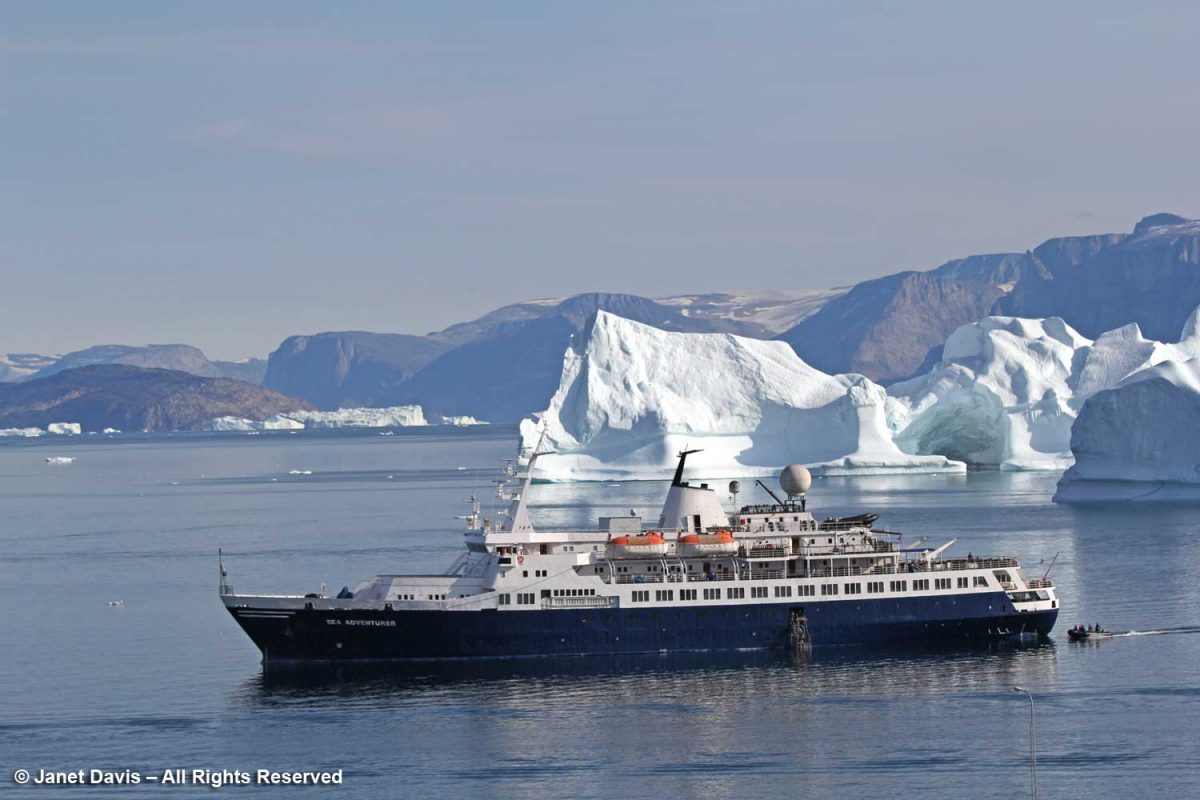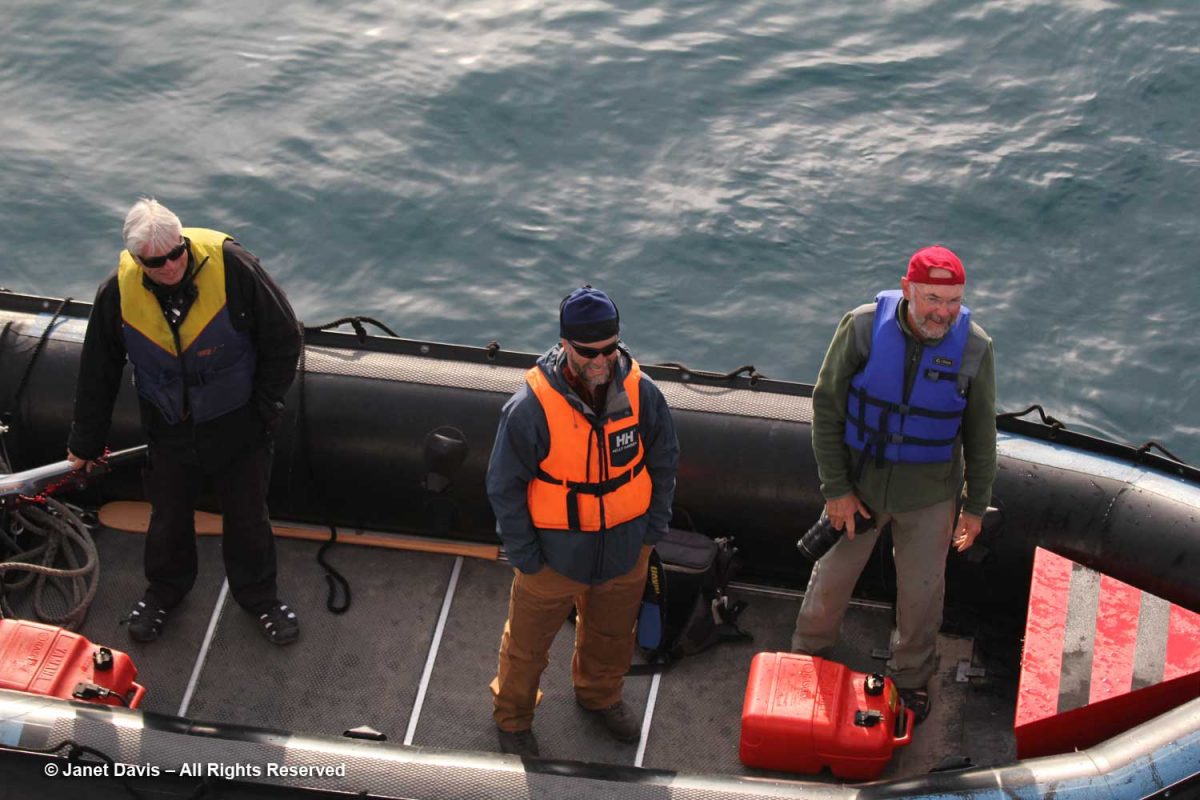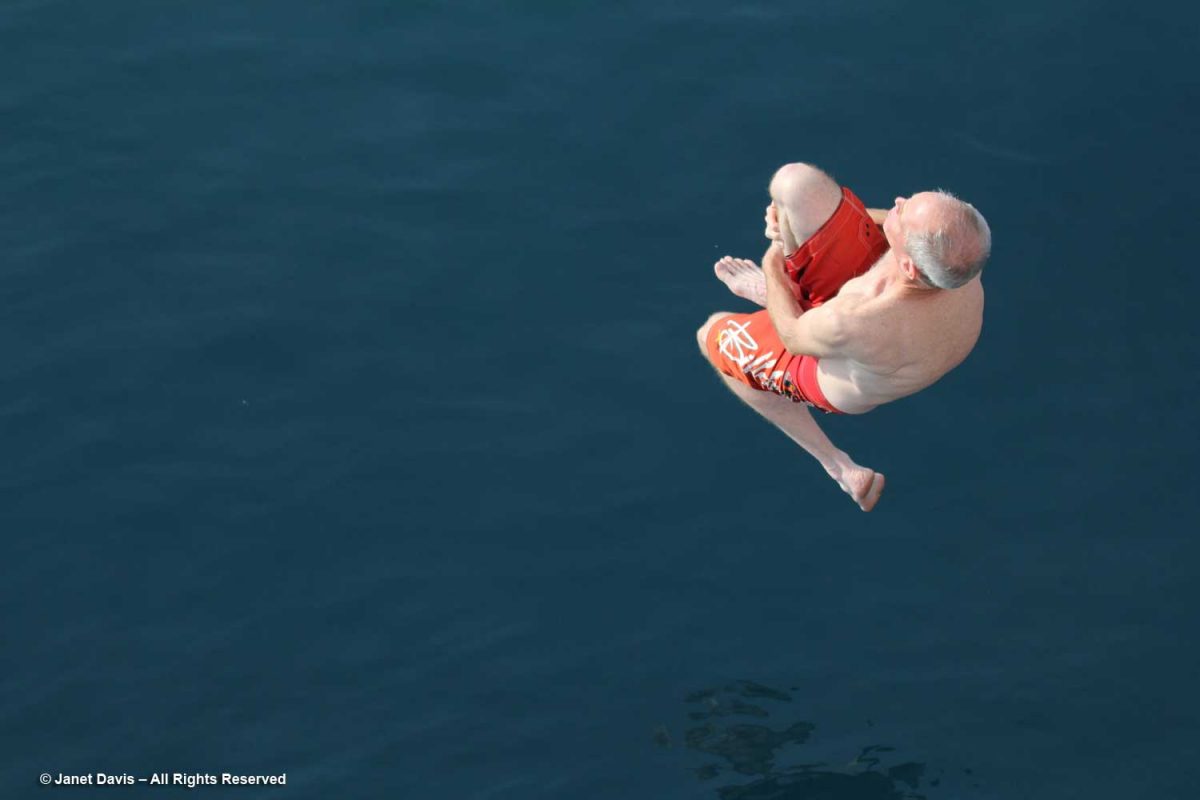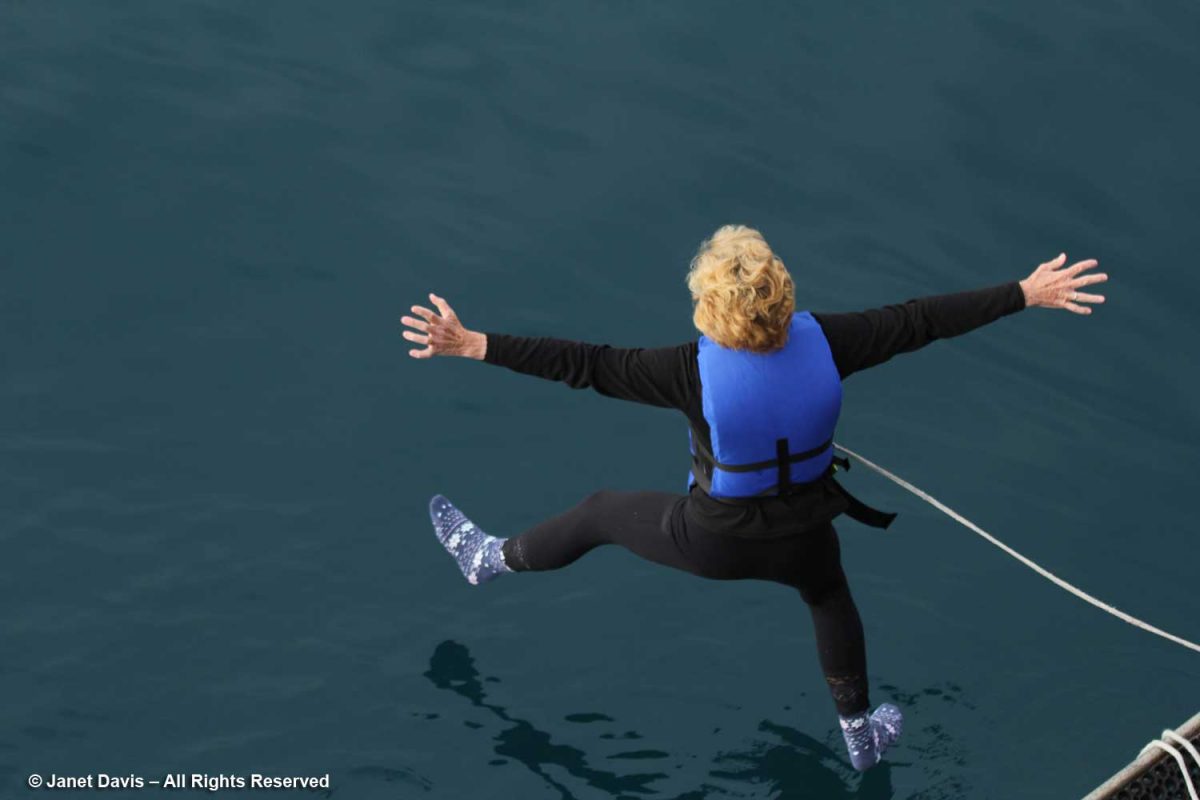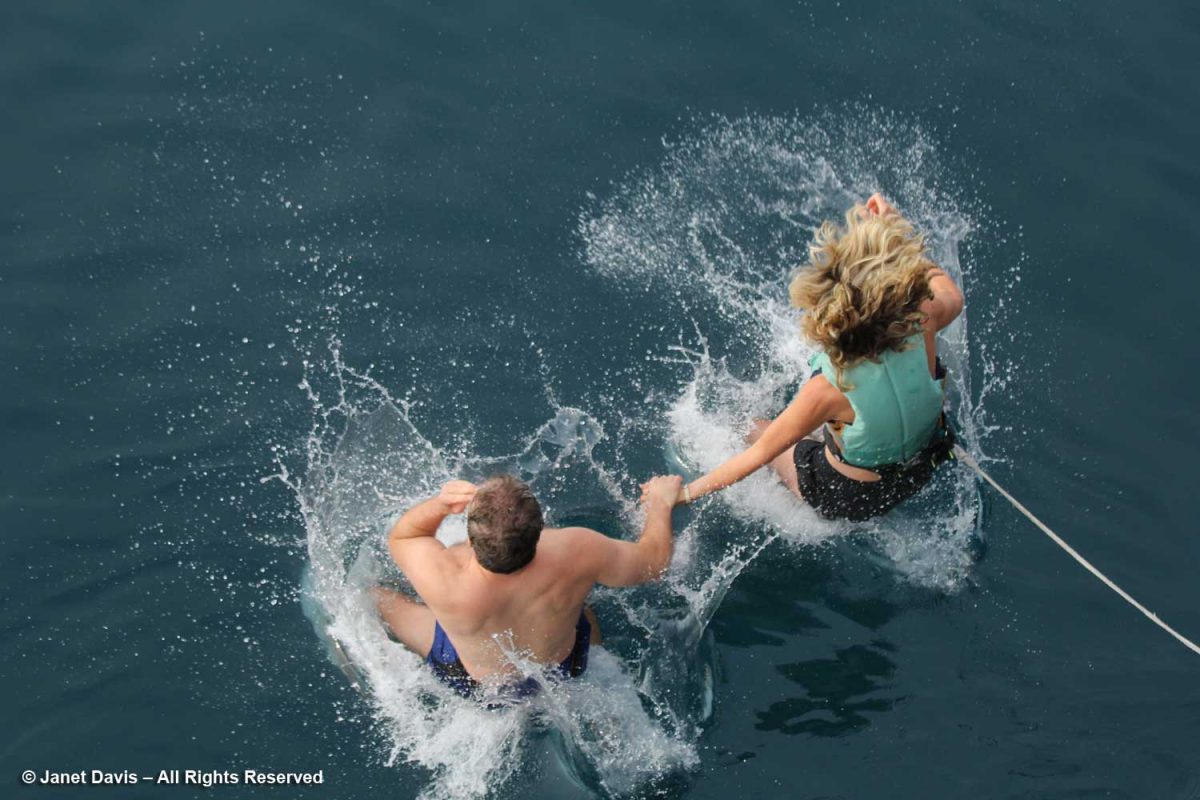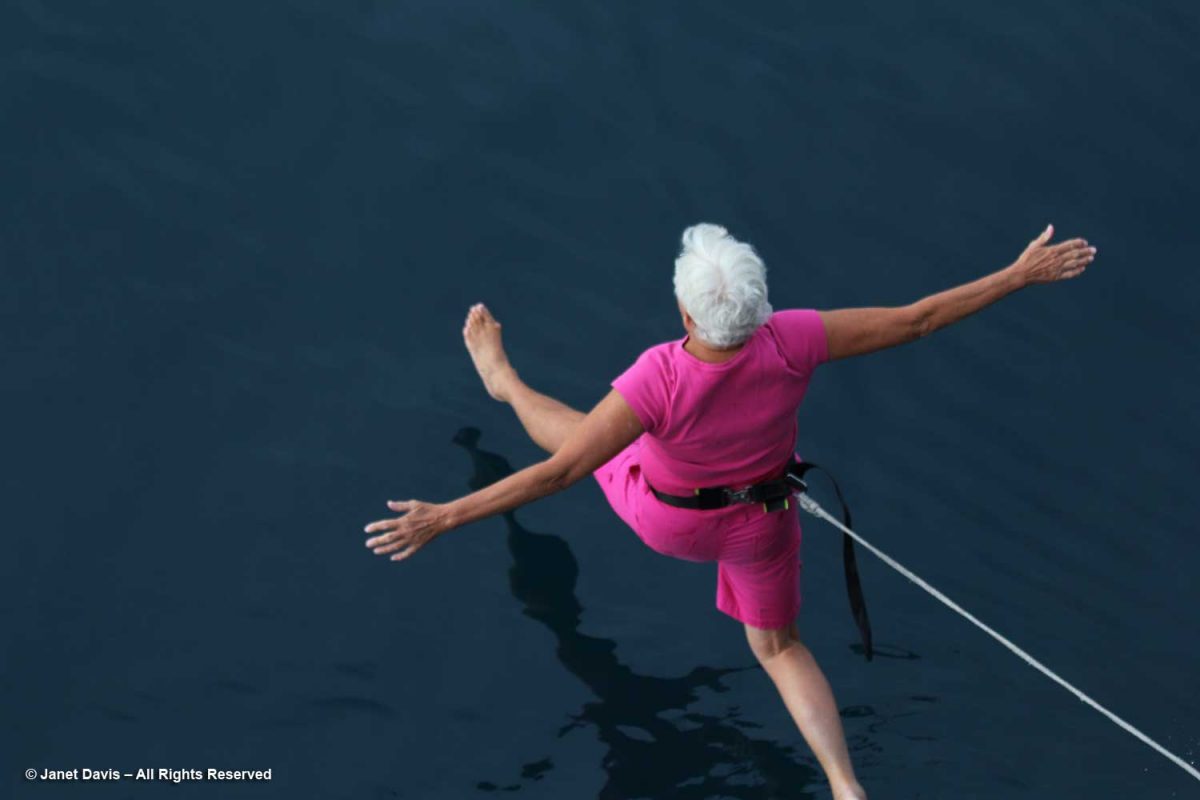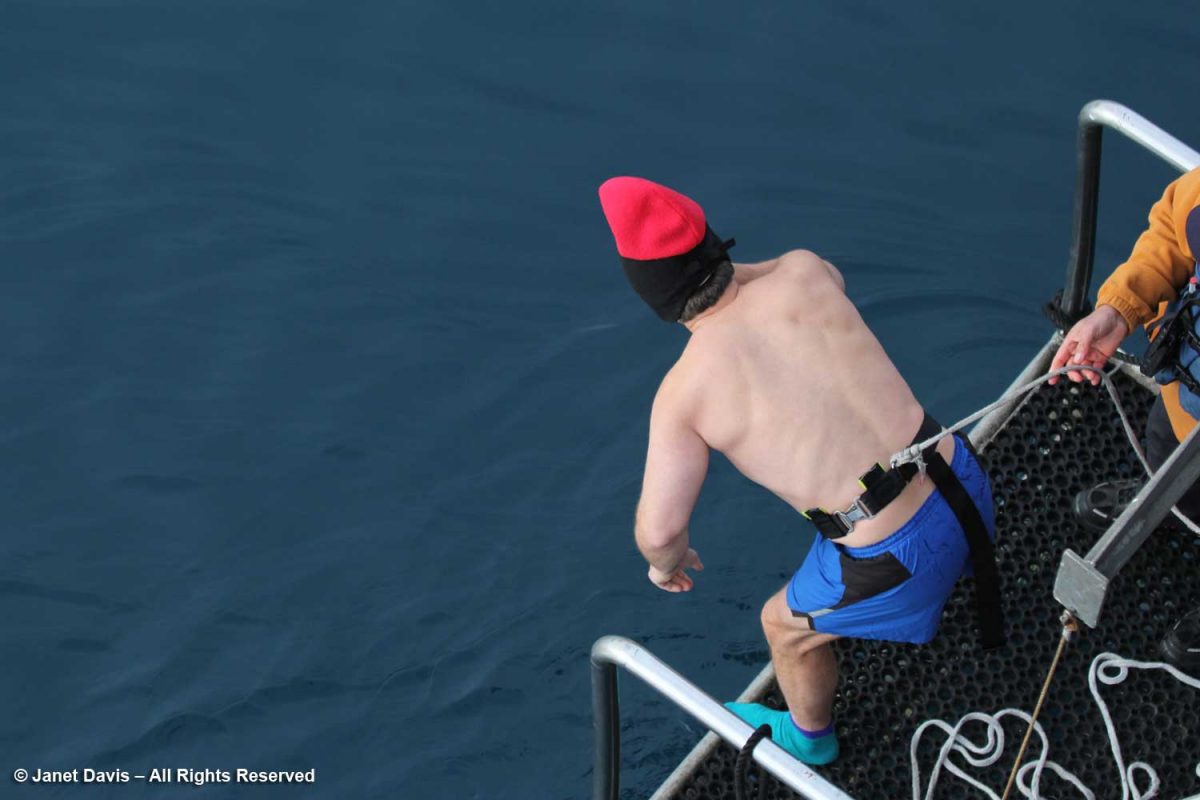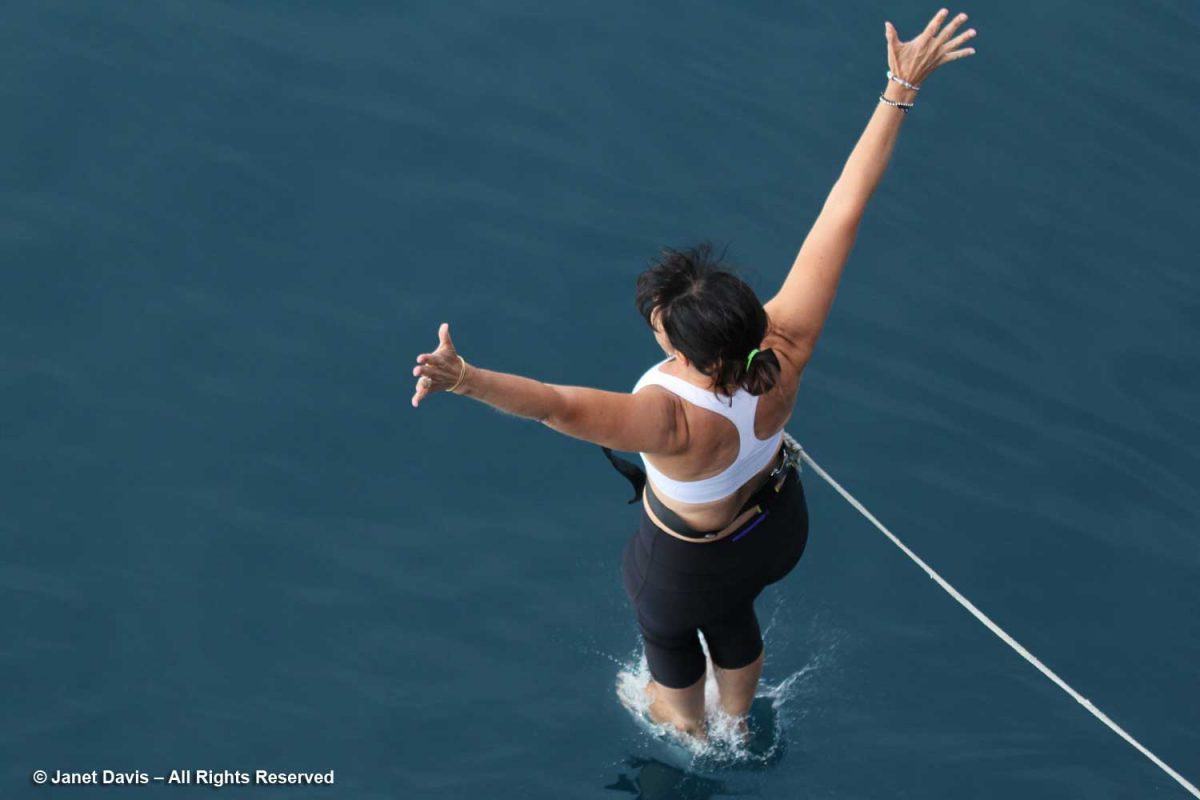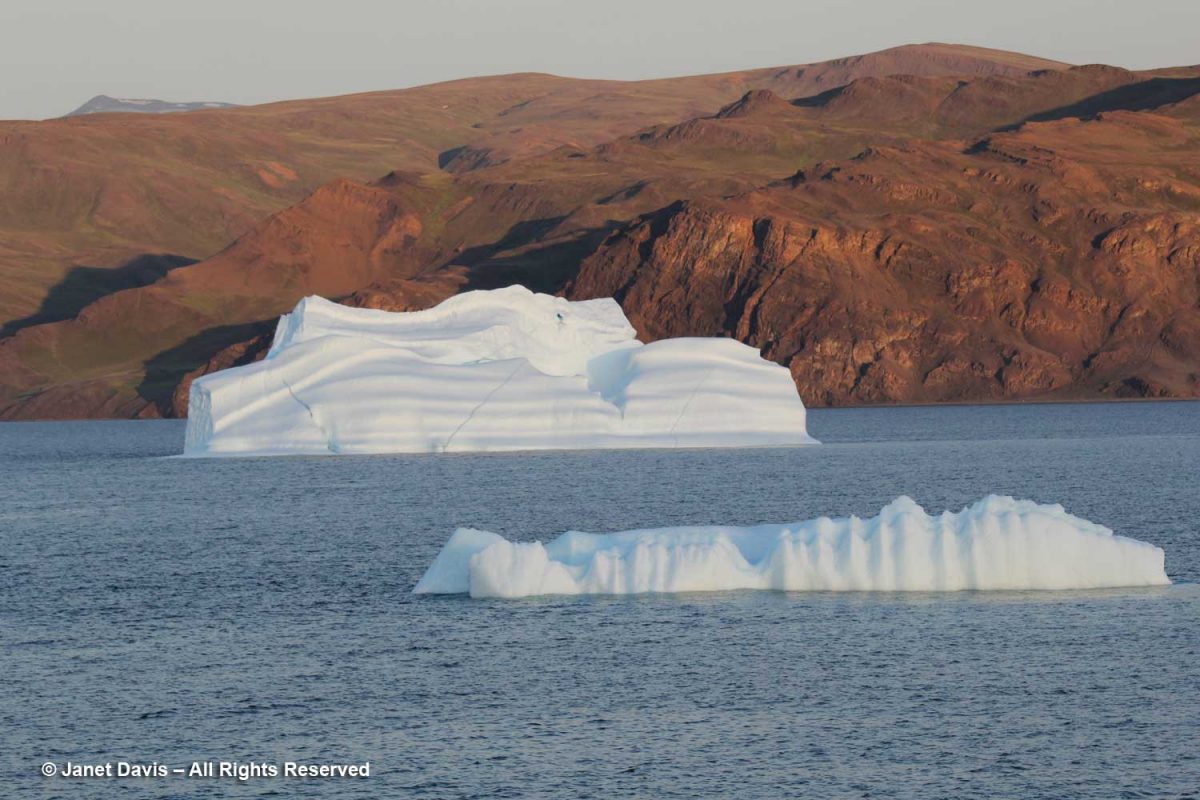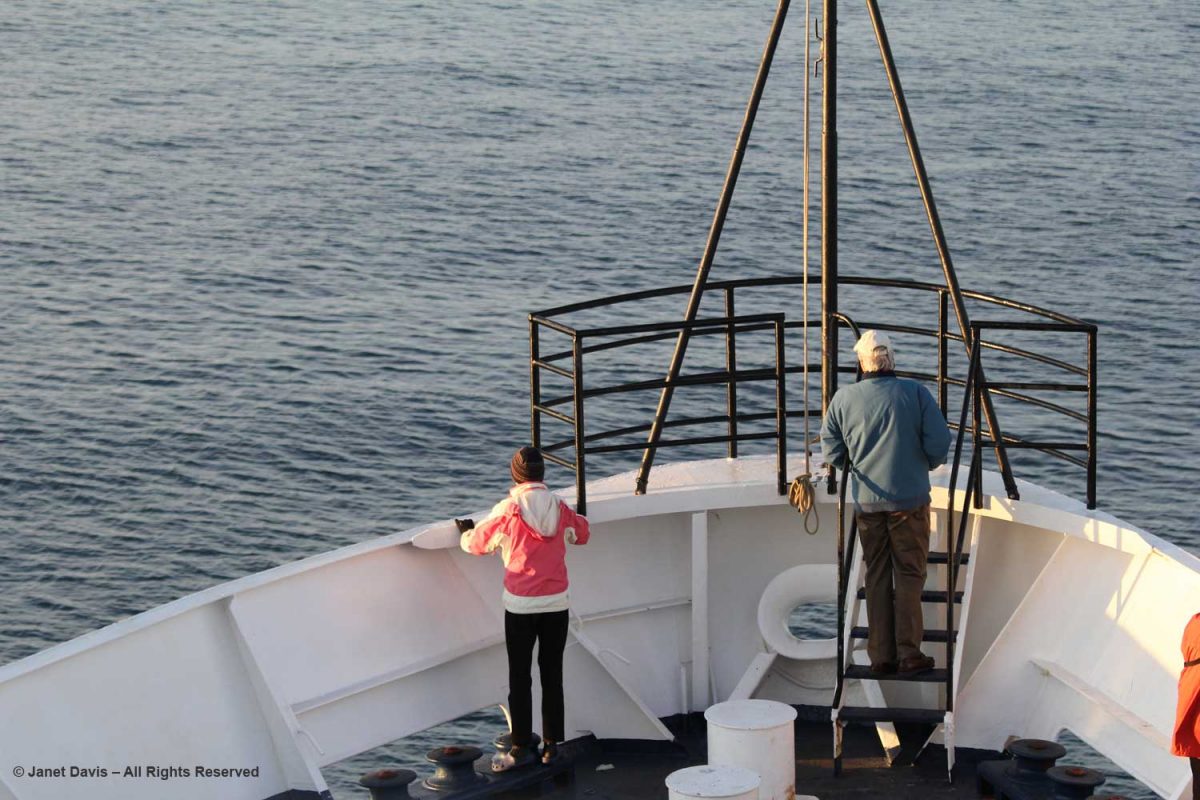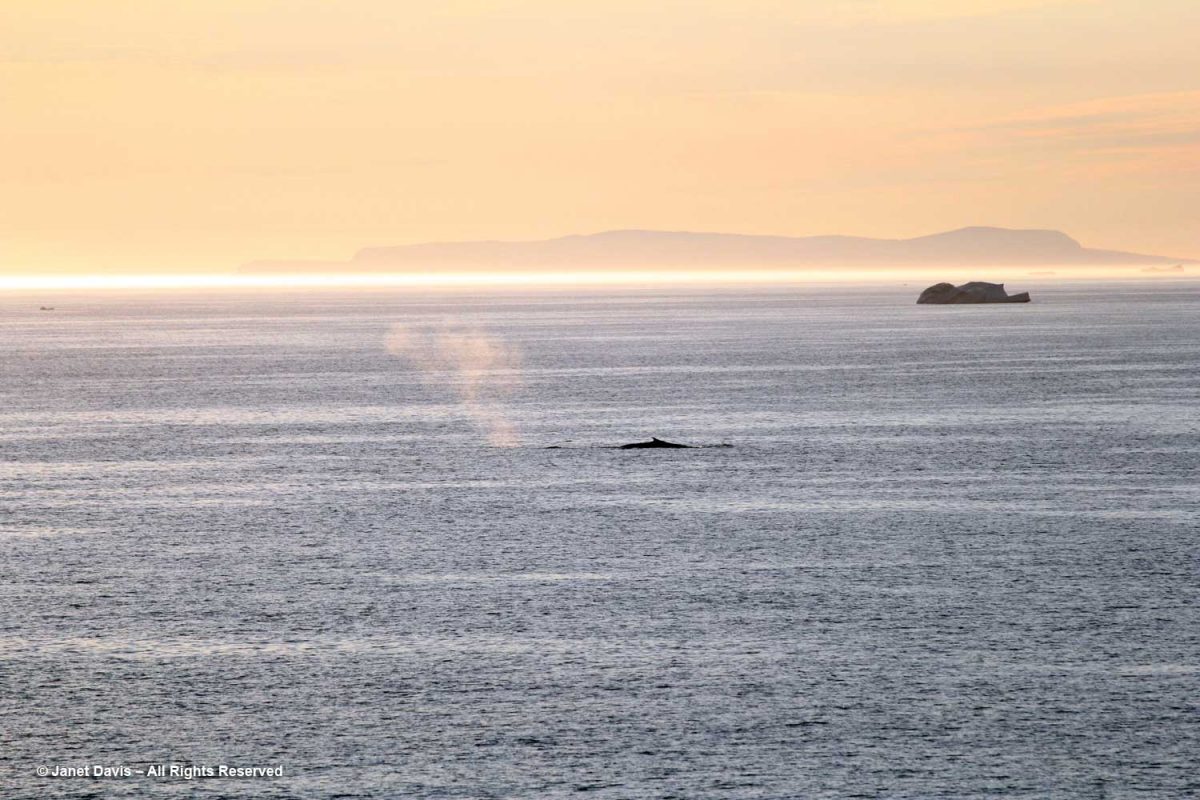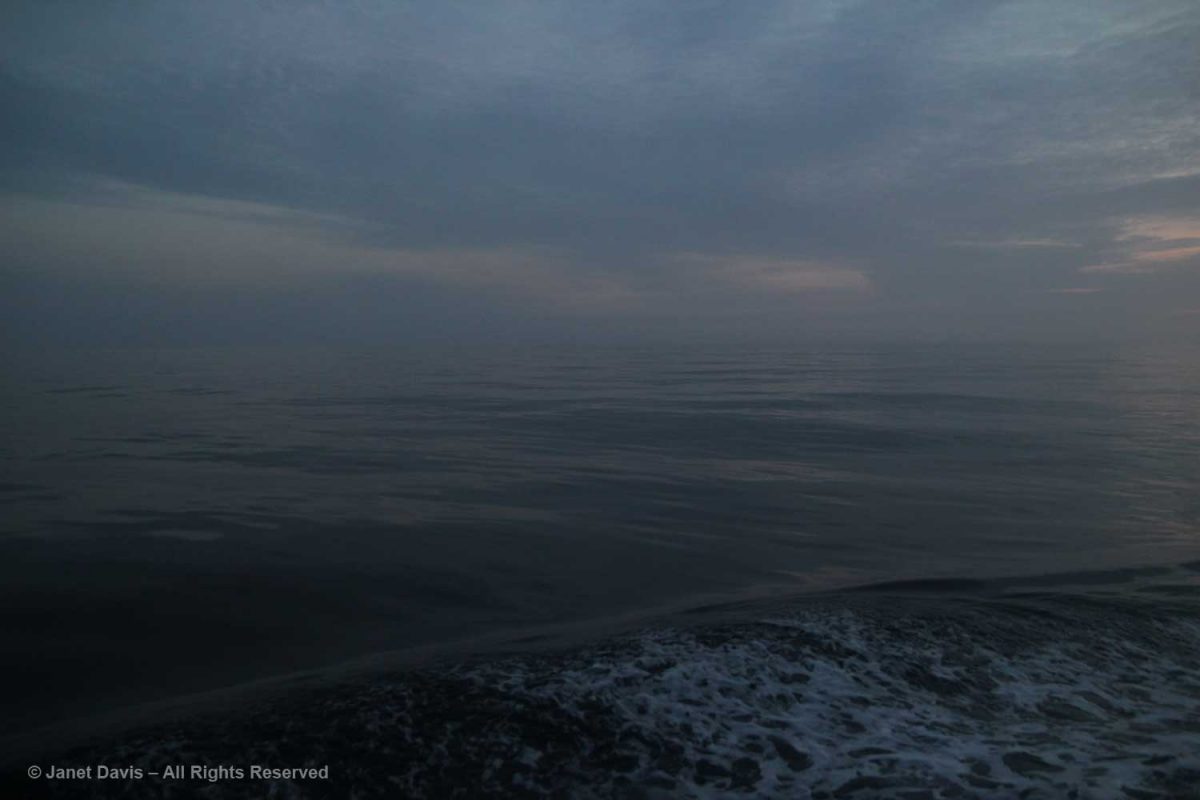With just two days left on our Adventure Canada Arctic expedition in Nunavut and western Greenland, we awoke on August 5th to a thick fog that prevented us from going ashore at our first scheduled stop, the small, abandoned fishing village of Assaqutag. But that didn’t stop a few people from actually fishing off the back deck, with small Greenland cod or ojac jigged two and three to the line, no bait needed. The passengers had fun with expedition leader Stefan Kinberg standing by to untangle their lines.
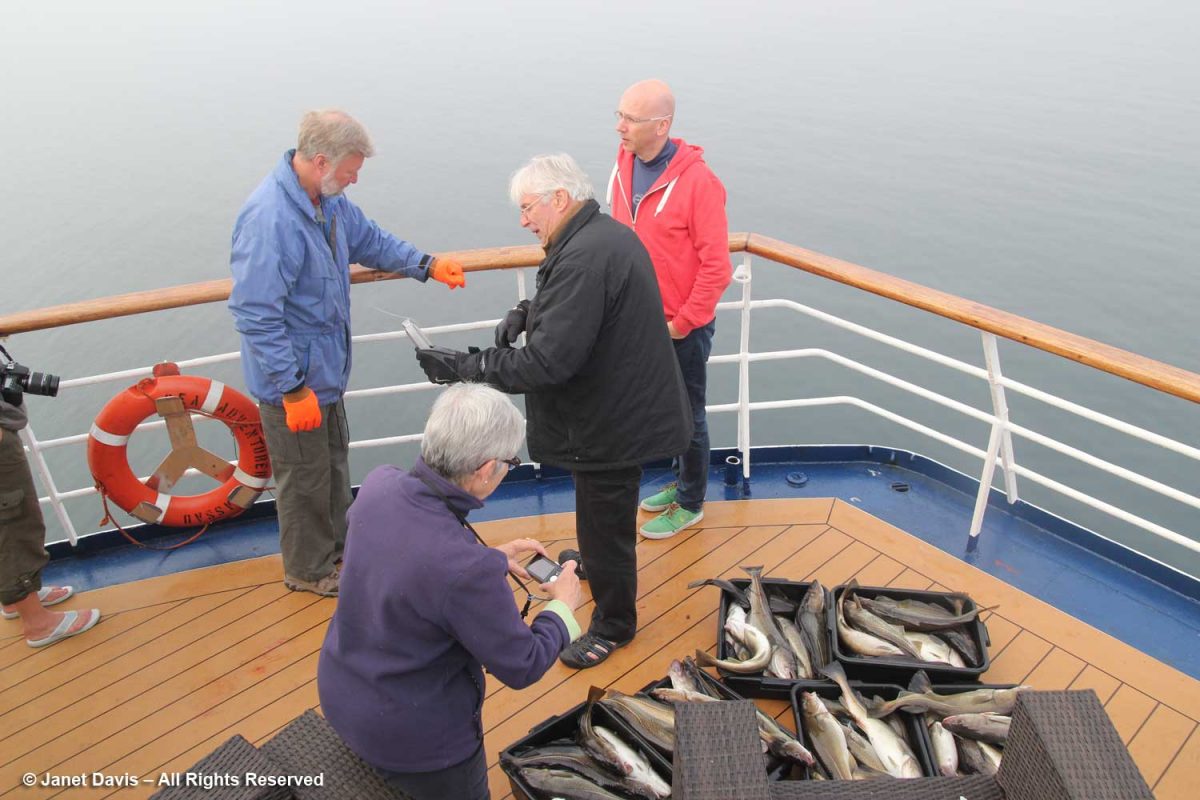
Greenland cod (Gadus ogac) is the principal catch off the coast and a major source of livelihood and food for the inhabitants at our next port of call, the tiny village of Itilleq.
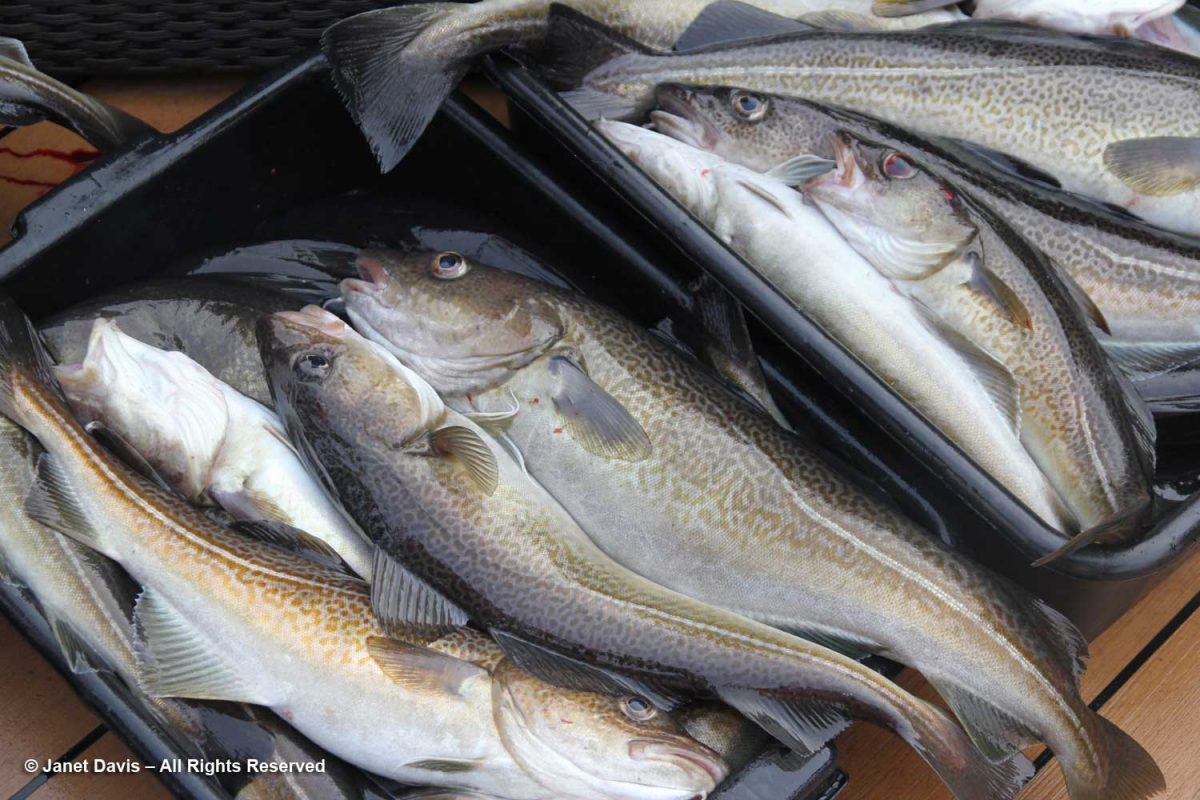
After breakfast, we paid a visit to the ship’s bridge. The helmsman had his binoculars out; between sea ice and fog, an Arctic seafarer has much to consider.
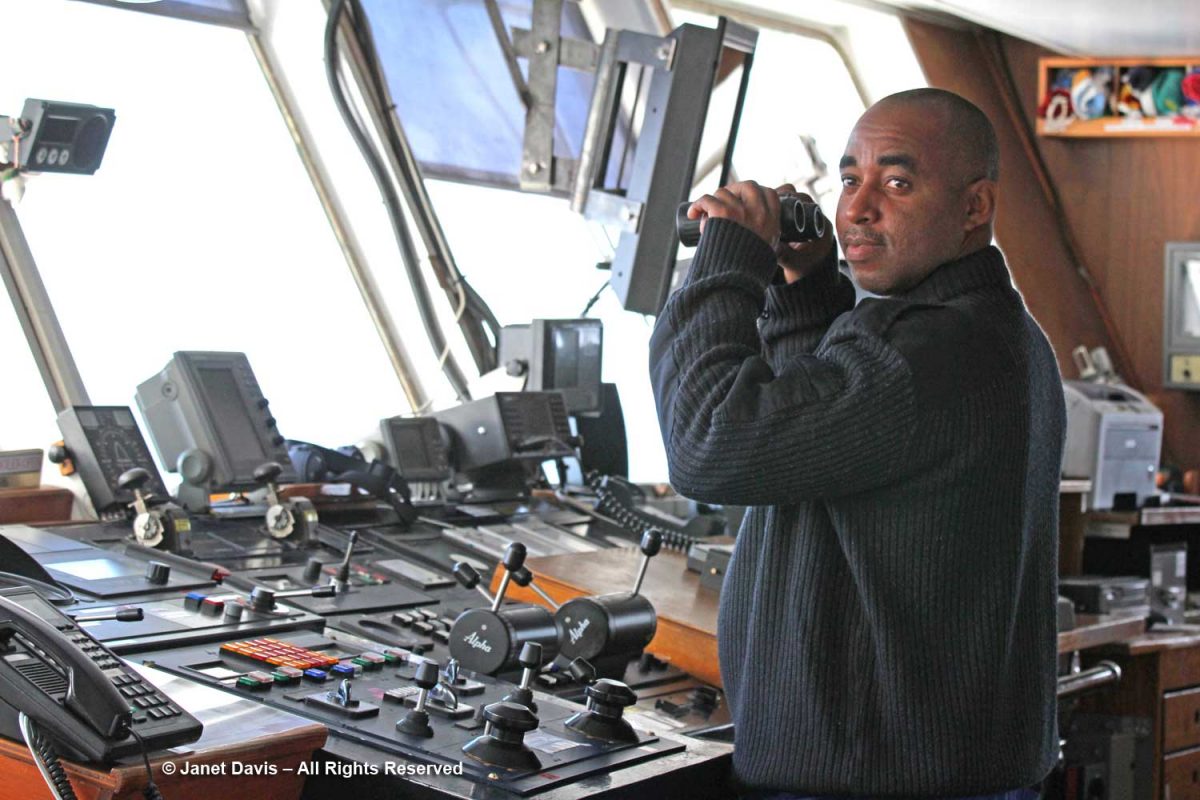
On the table was the nautical chart for tomorrow’s final destination, Kangerlussuag or Søndre Strømfjord These paper charts are combined with GPS, electronic chart display, sonar and radar to ensure safe passage.
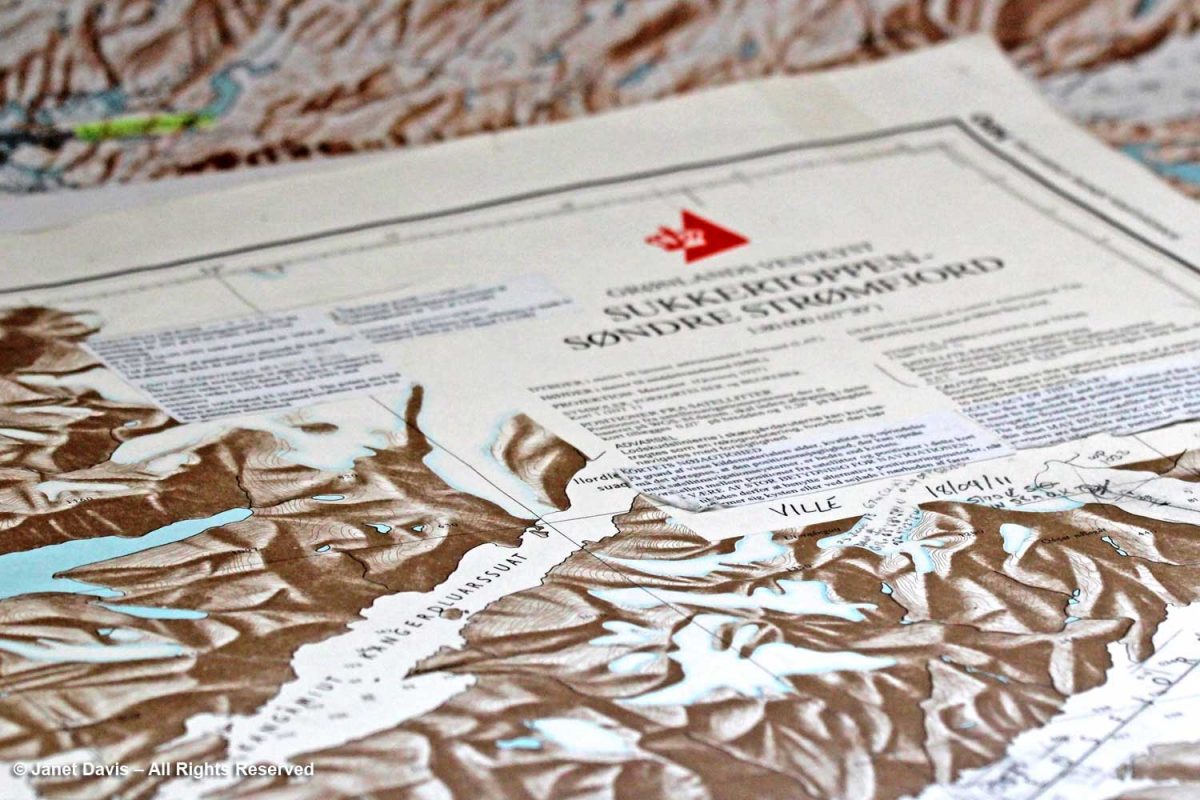
As we sailed towards Itilleq, a pair of pomarine jaegers flew overhead (Sterecorarius pomarinus). Like its cousin the parasitic jaeger, “It robs gulls, terns and even gannets of their catches. Like most other jaeger species, it continues this piratical behaviour throughout the year, showing great agility as it harasses its victims.” (Wiki)
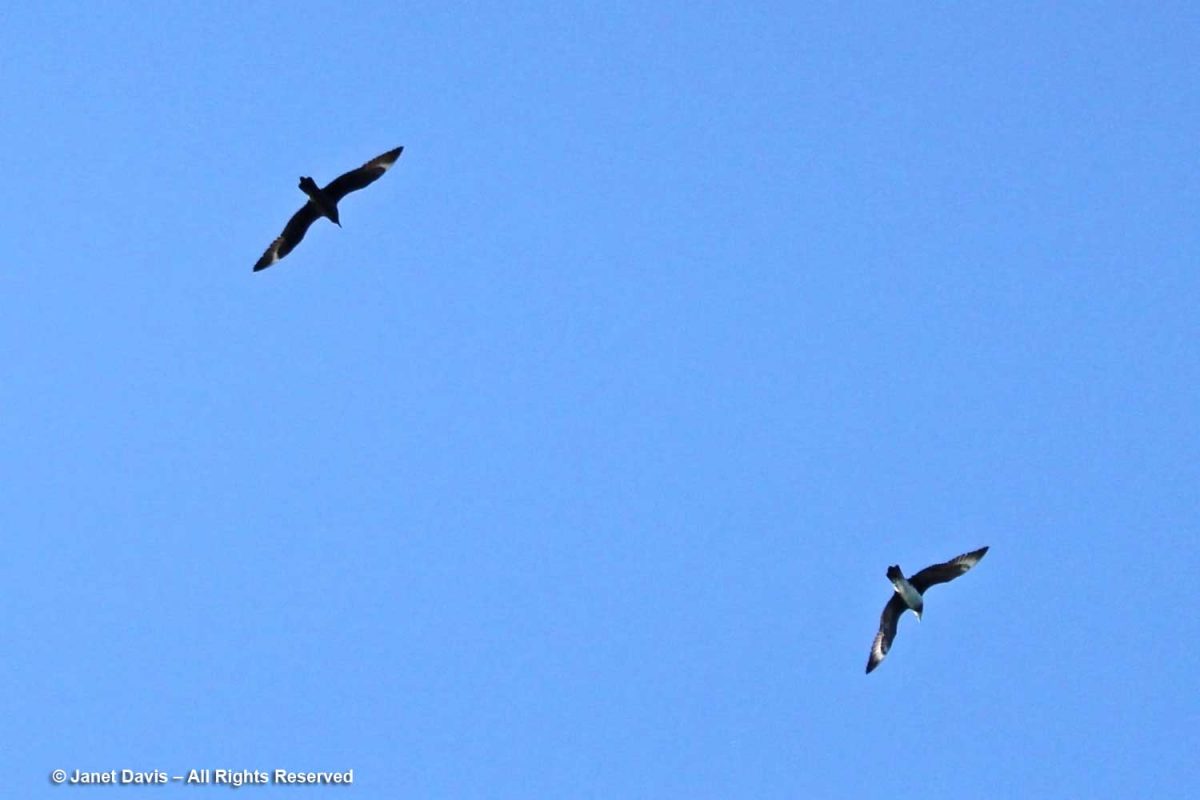
And, of course, we saw our old friend, the northern fulmar.
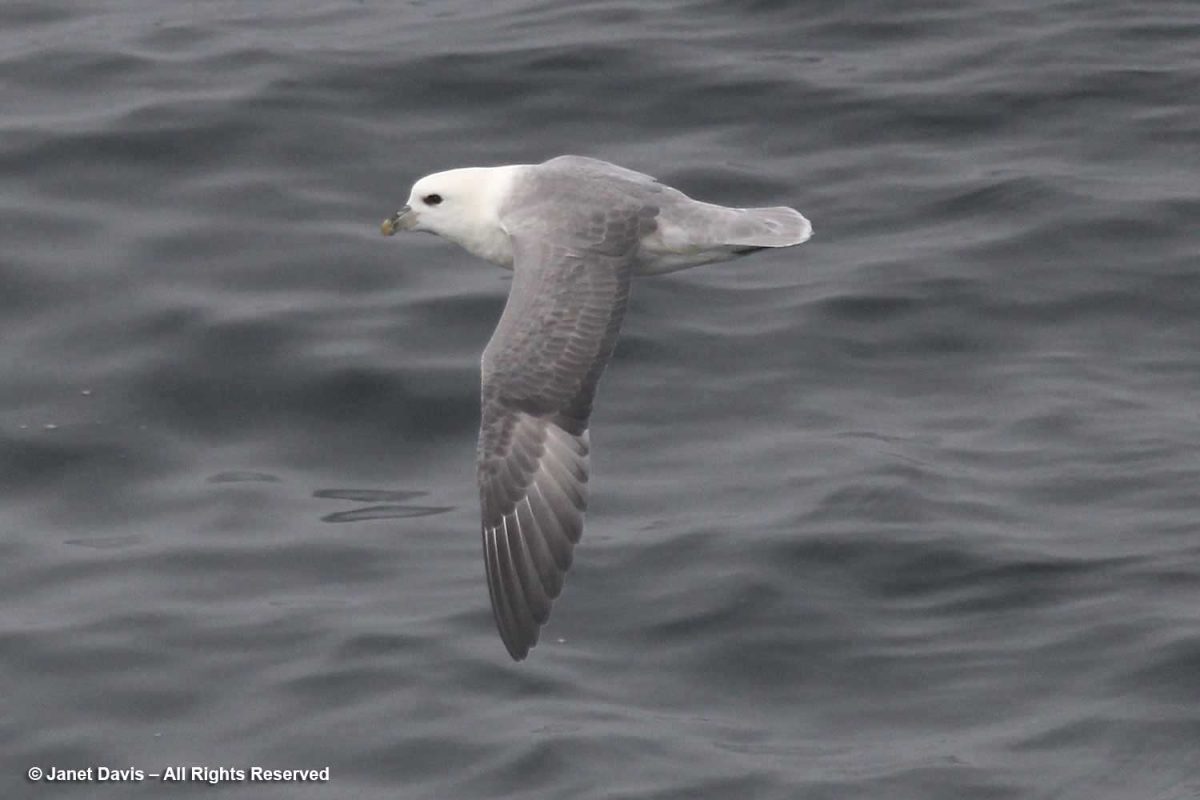
Soon Itilleq came into view, the only settlement on a tiny island in a group of islands one kilometre off the coast of Greenland in the Davis Strait and just 2 km (1.2 mi) north of the Arctic Circle. Its original name was Itivdleq. With a population of 89 (2020), its main industries are fishing and hunting, with a fish factory located here. Drinking water is produced with a reverse osmosis desalination plant. Itilleq’s most famous native son is Hans Enoksen, who was born there in 1956; he served as Greenland’s Prime Minister from 2002-2009.
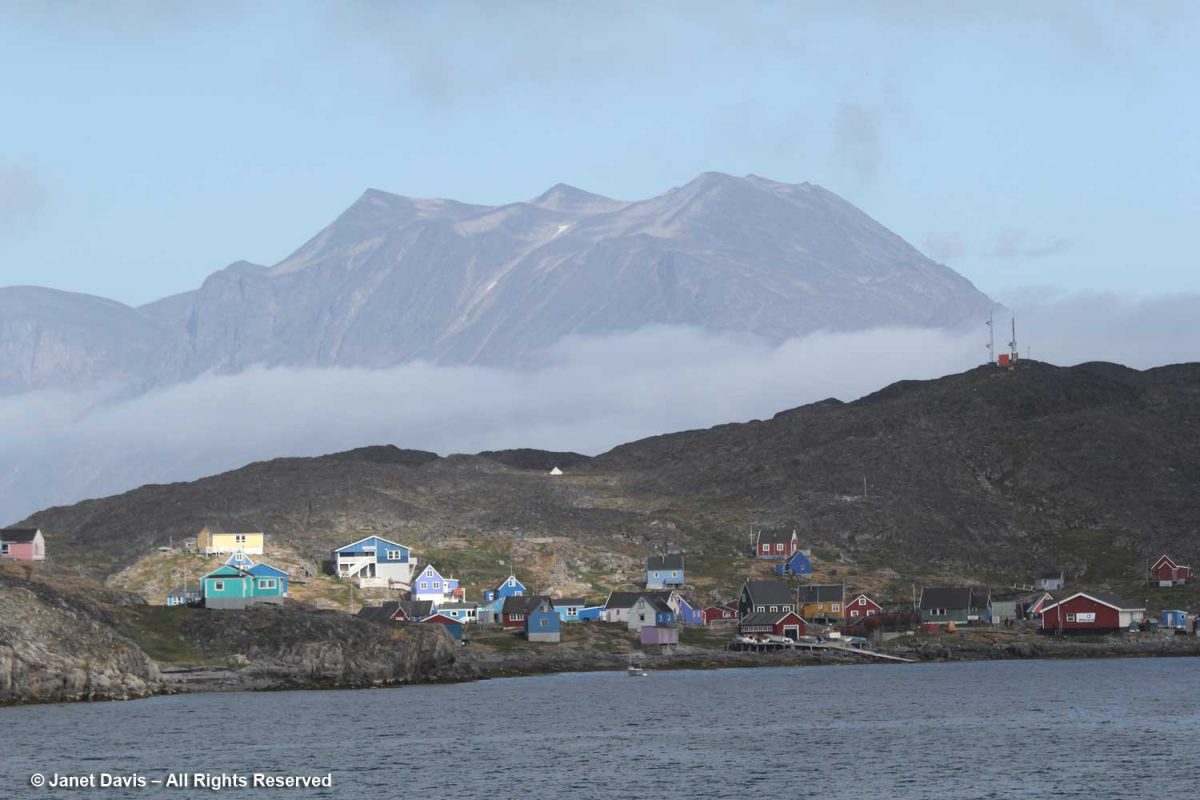
This was how we boarded the zodiacs for our shore excursions.
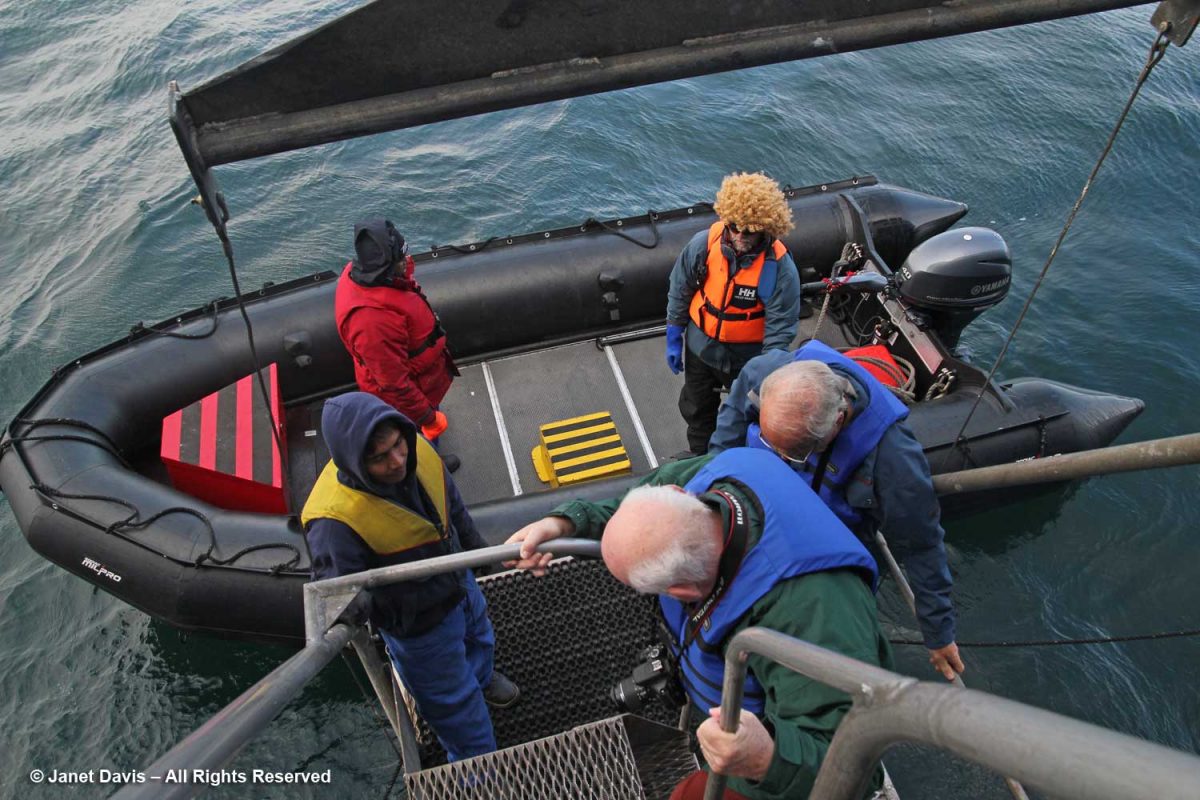
Occasionally, our zodiac captain would be wearing a disguise! Actually Dr. Mark Mallory, renowned bird biologist, professor and Tier I Canada Research Chair in Coastal Ecosystem Resilience and Connectivity at Acadia University, was dressed for the upcoming soccer match with the villagers of Itilleq.
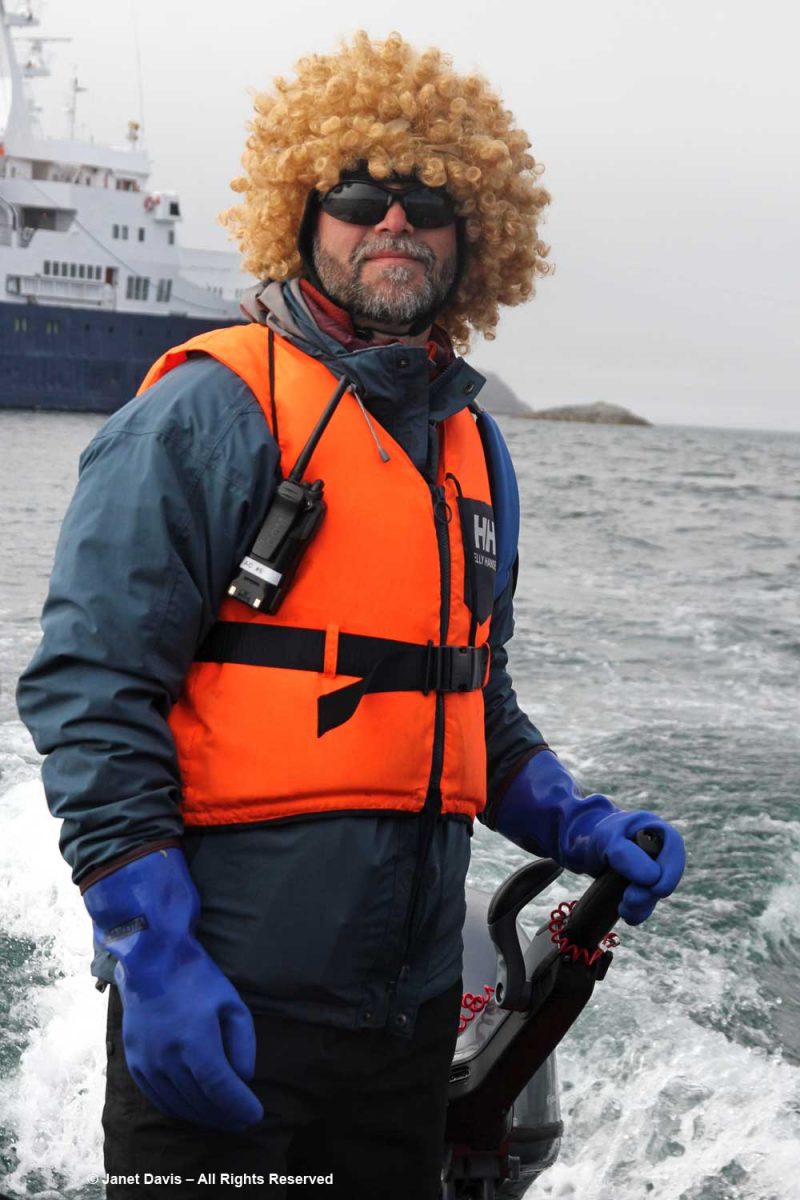
The rocks here, as they are everywhere in the Arctic, were cloaked with rockweed (Fusca distichus), a very common seaweed or brown algae that’s found throughout the northern reaches of the planet.
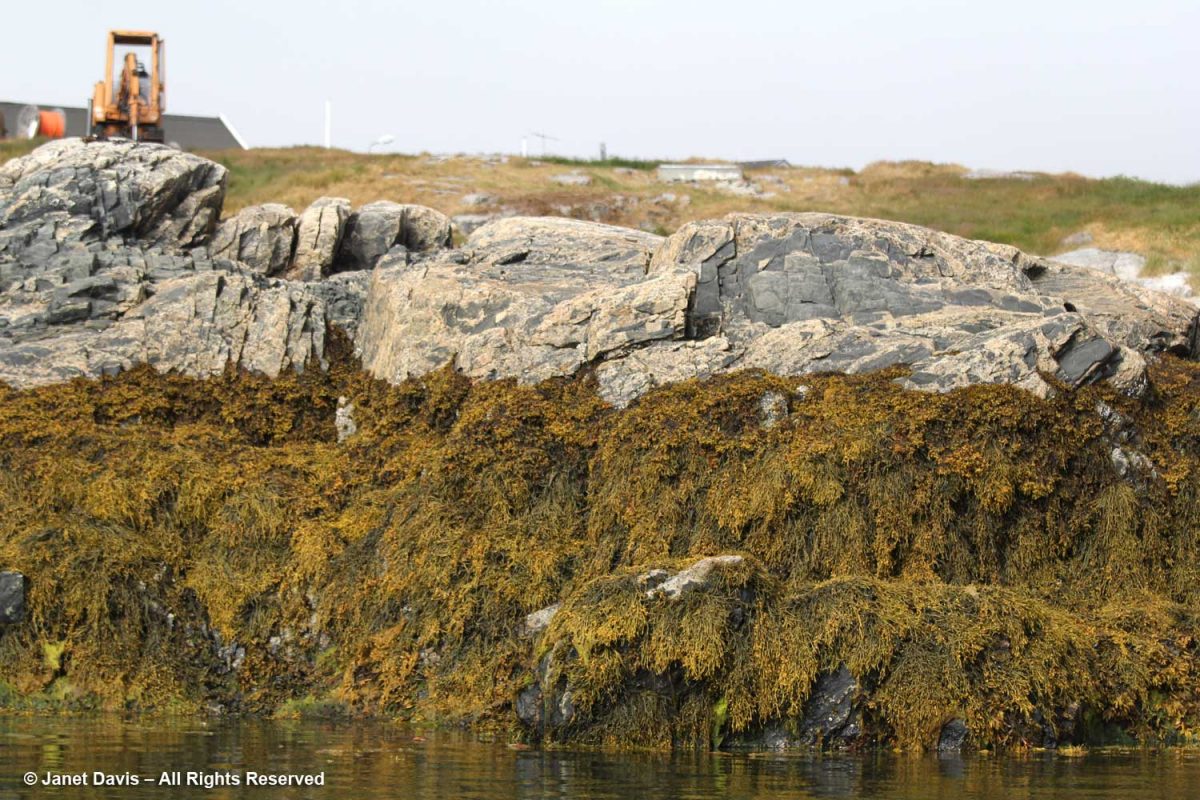
I loved the concentration on the face of this little boy at the Itilleq dock. He was playing a Kendama cup-and-ball game that made me think of the days when no one had yet heard of Fischer-Price or Game Boy.
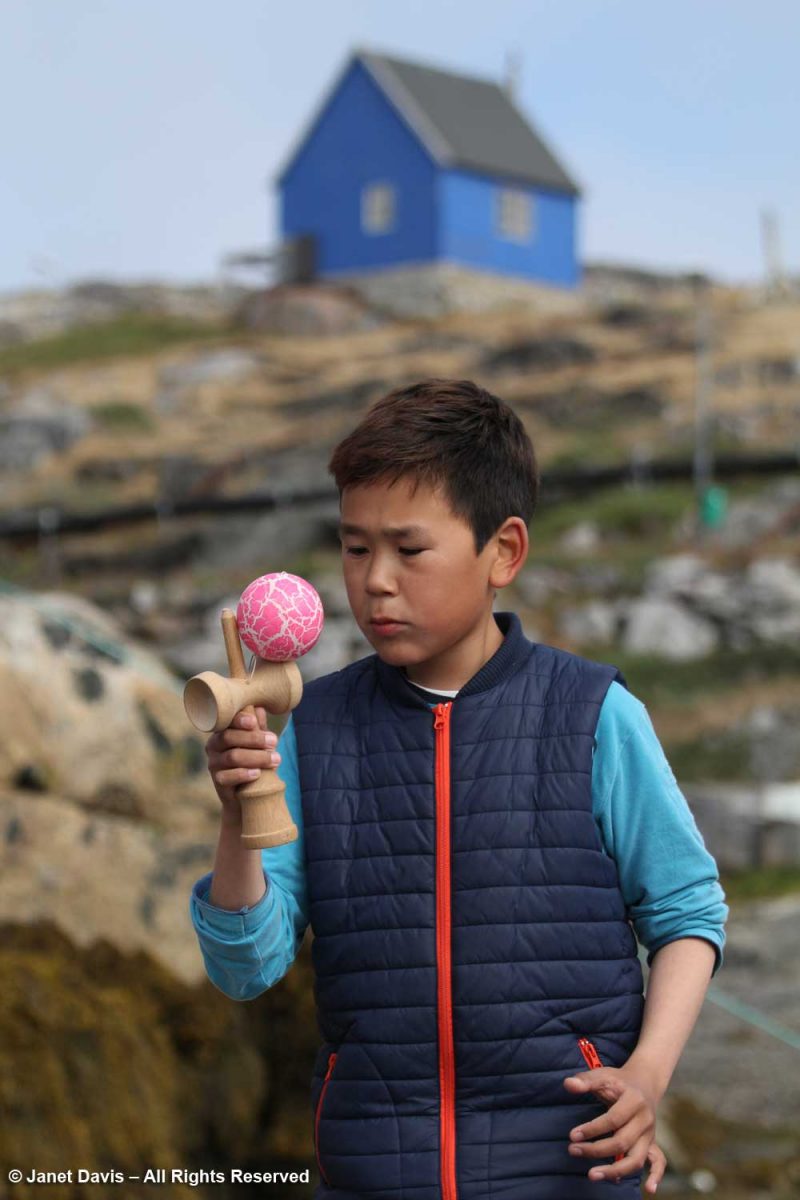
Like all the houses in the Greenland towns, villages and settlements we visited, those in Itilleq’s were brightly painted. I think if I lived there, I would have a purple house like this one.
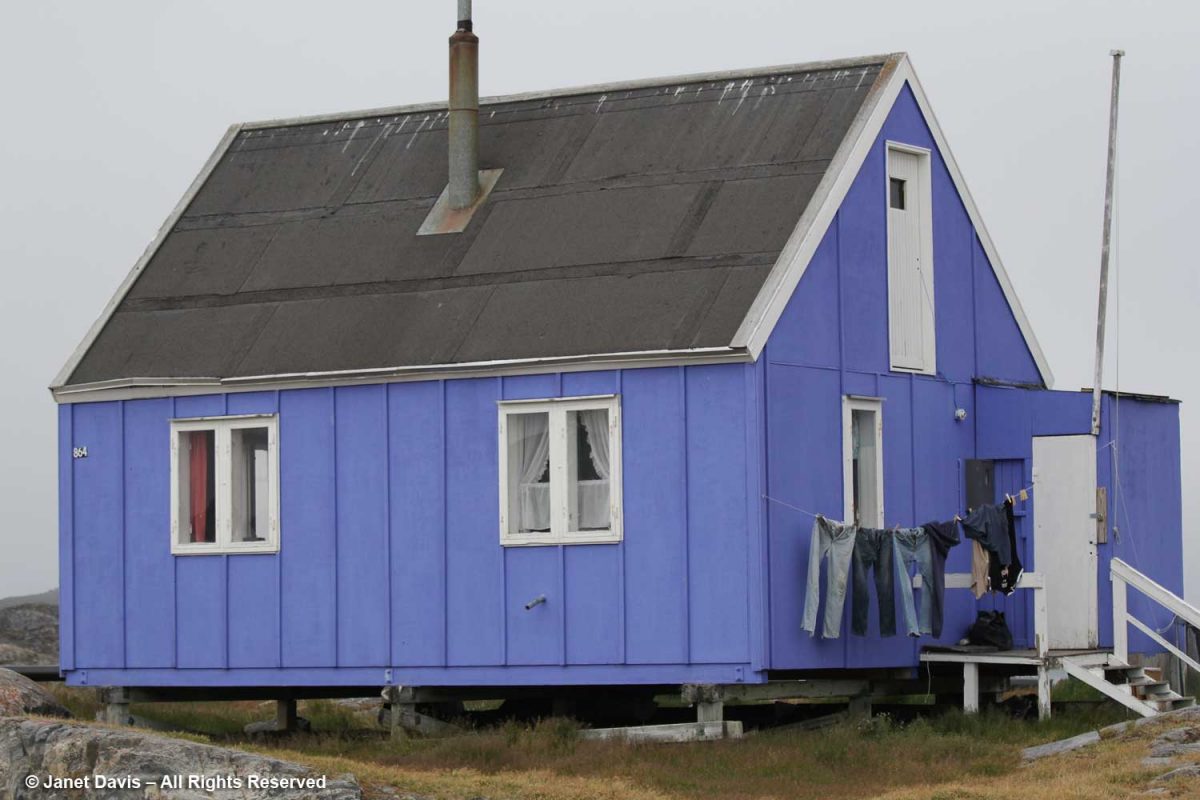
As always, I spied wildflowers on the way. This little white-flowered brassica, Cardamine pratensis, is circumboreal, occurring in northern climates around the planet.
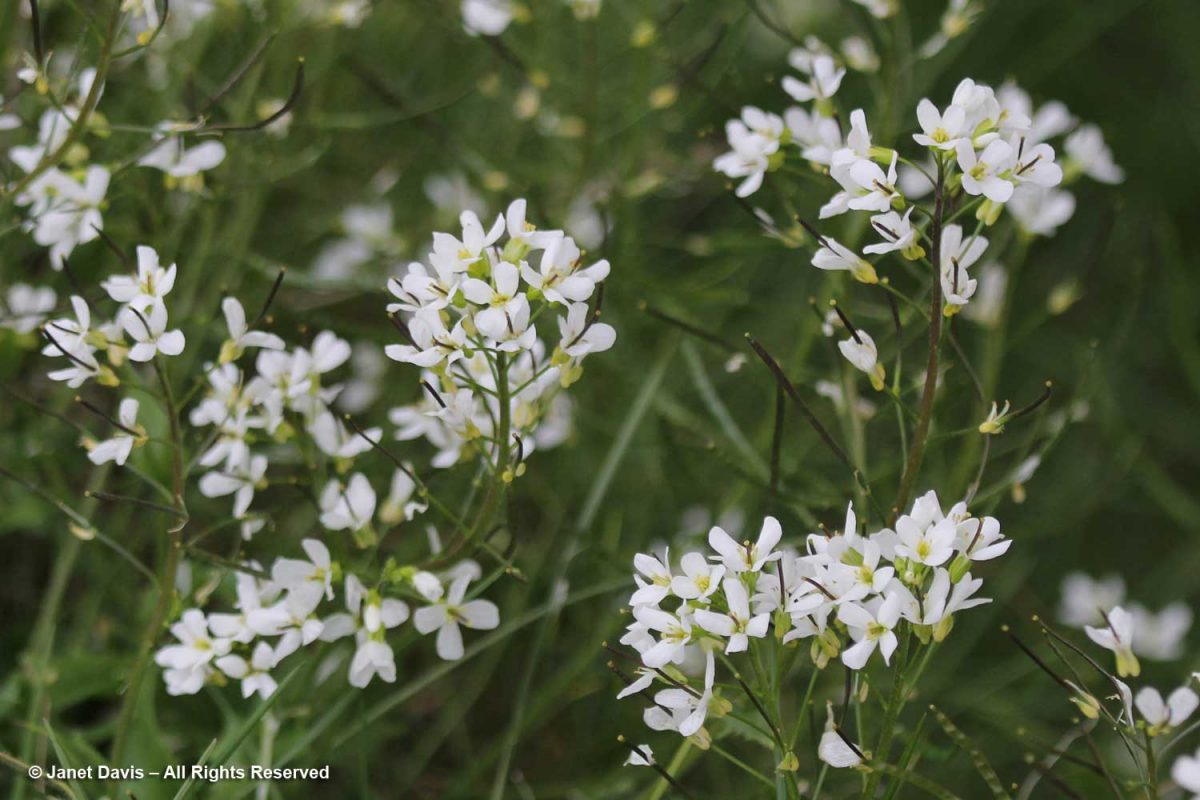
There’s a bit of a backstory to what happened next. For decades, since the 1990s, Adventure Canada has nourished its relationships with Greenlanders and Canadian Inuit communities through participatory activities like this friendly soccer match. (Here’s a newspaper story on a similar match from 2005). Today’s game was an attempt to even the score and avenge the villagers’ win on the last expedition that stopped by. And yes, that’s an actual half-sized soccer field made of gravel!
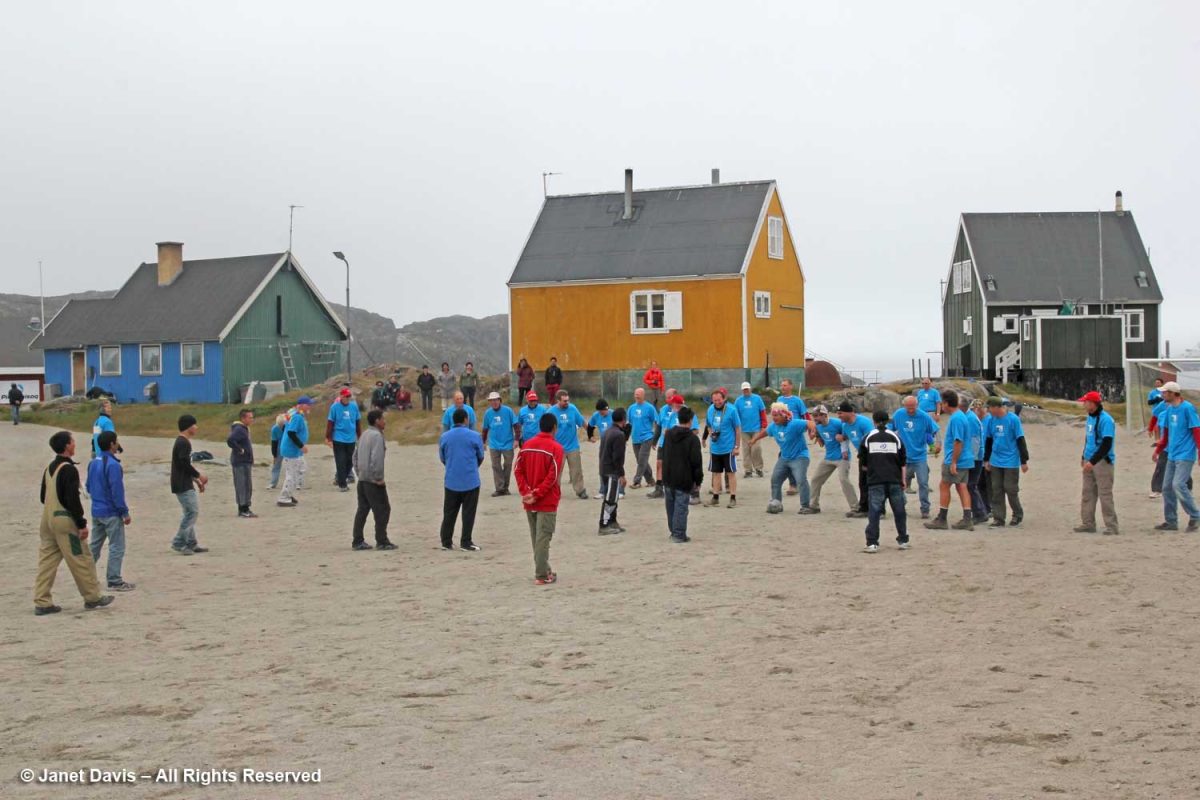
Cruise participants and Adventure Canada staffers like Jason Edmunds in the wig (he’s now Expedition Leader for the company) teamed up against the villagers.
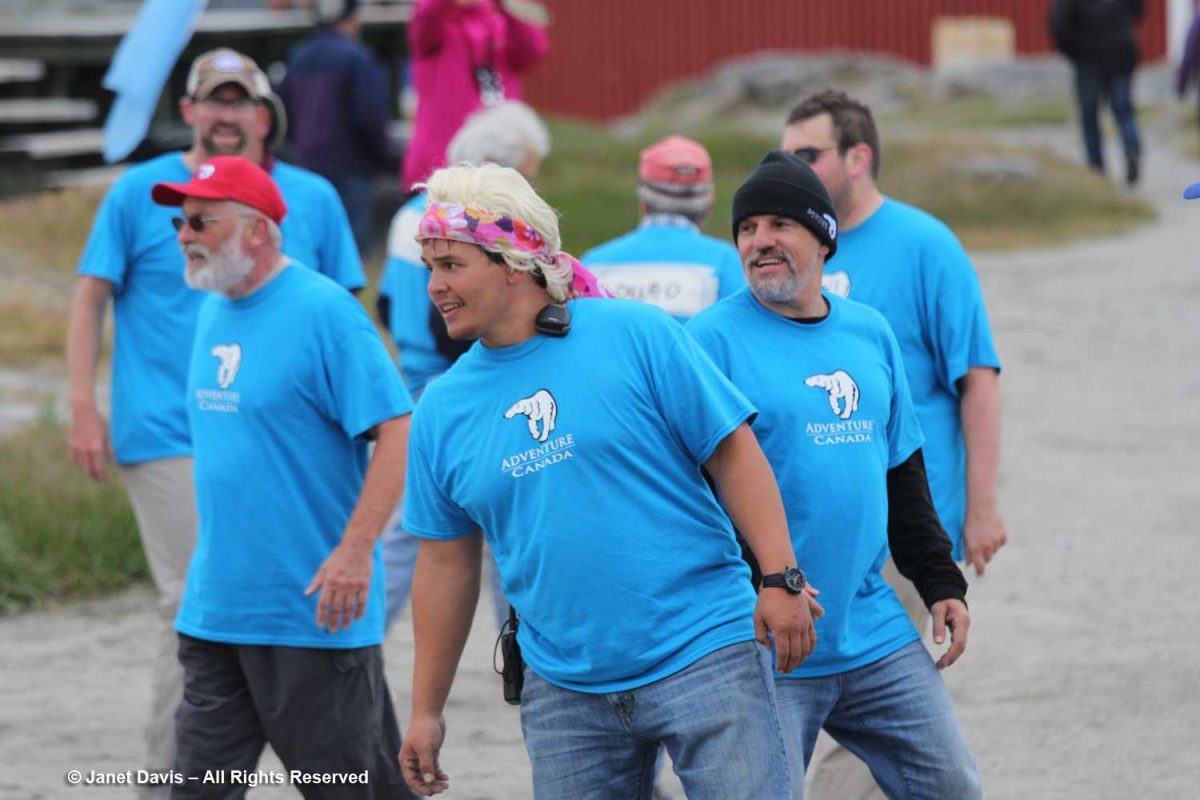
A cheering section sat on the ancient Precambrian gneiss bleacher seats.
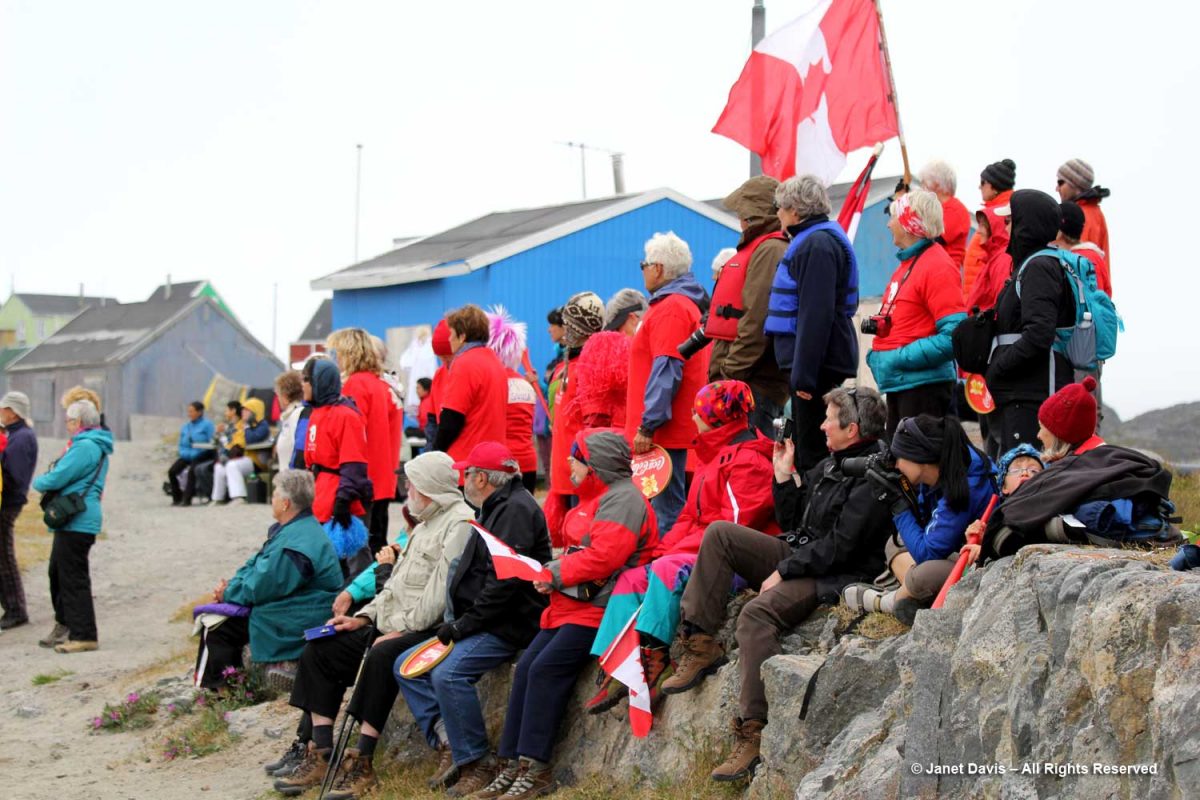
I stayed to watch a little of the action, with the Greenland youth paired against…. well, more mature folks.
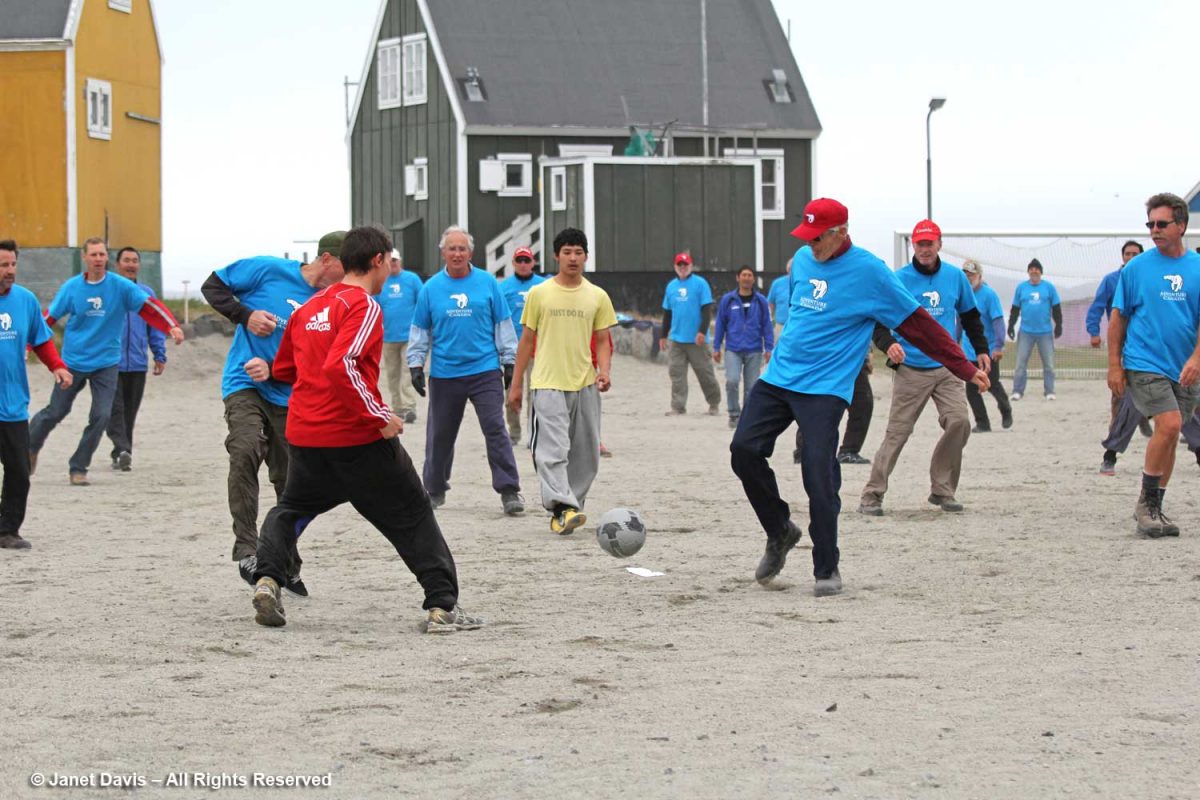
The blue t-shirts did seem to outnumber the town athletes….
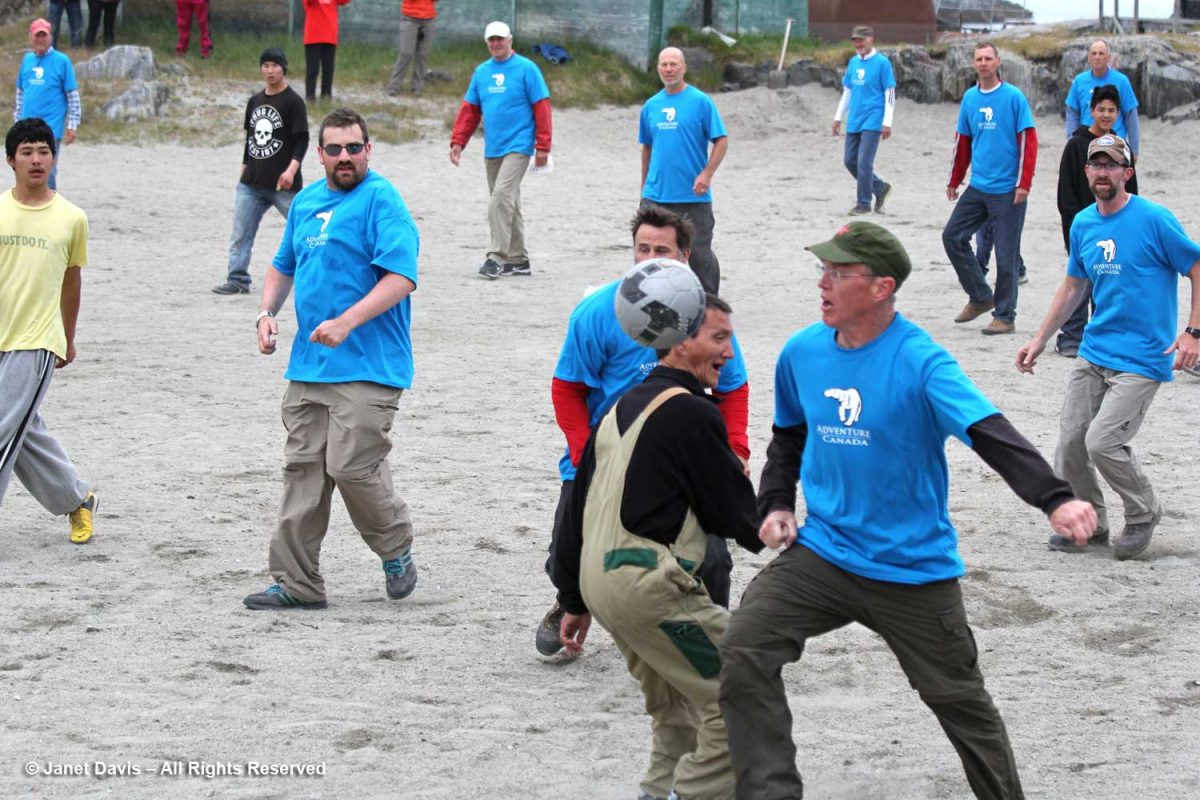
….. creating a possible unfair advantage. But there were no linesmen in attendance!
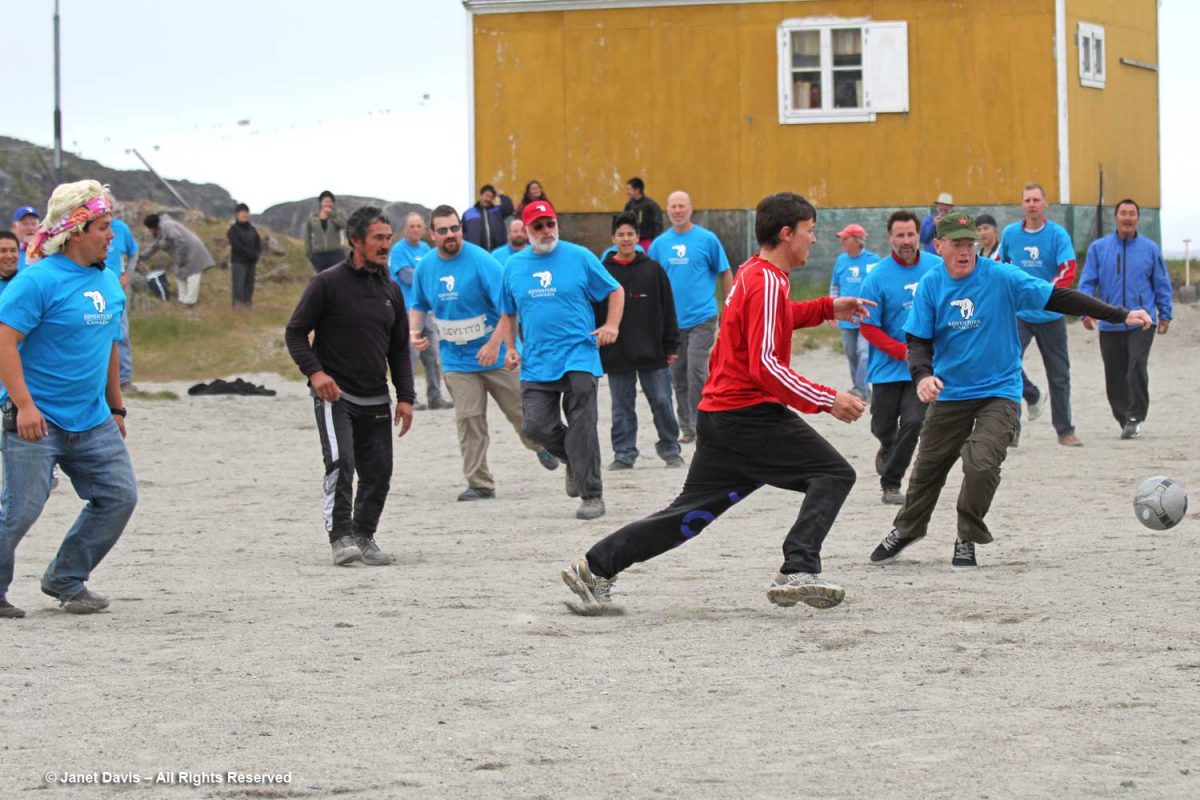
The young boys of Itilleq happily posed for photos.
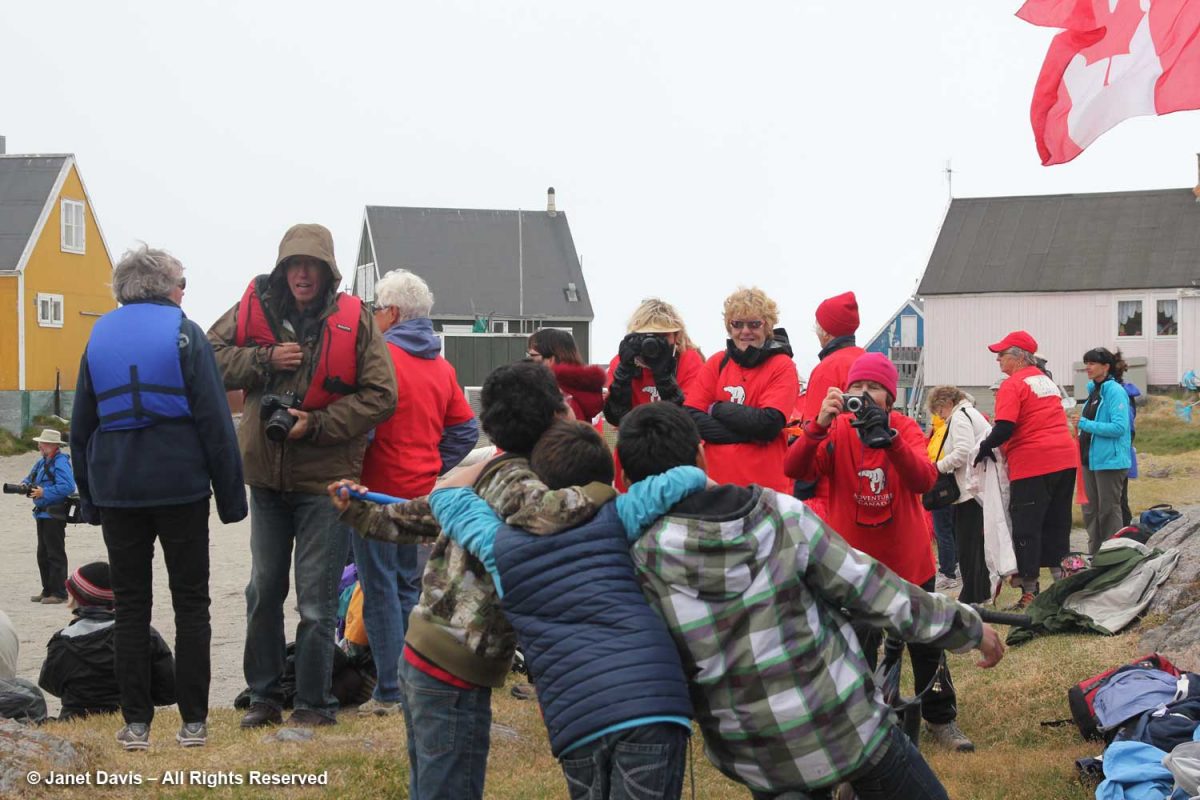
But I wanted to see flora, so I decided to take a walk up beyond the village cemetery, where I could gaze down the hill at the soccer pitch and houses nestled in the hollow below. Itilleq means “hollow” in Kalaallisut and you can see why in the photo below.
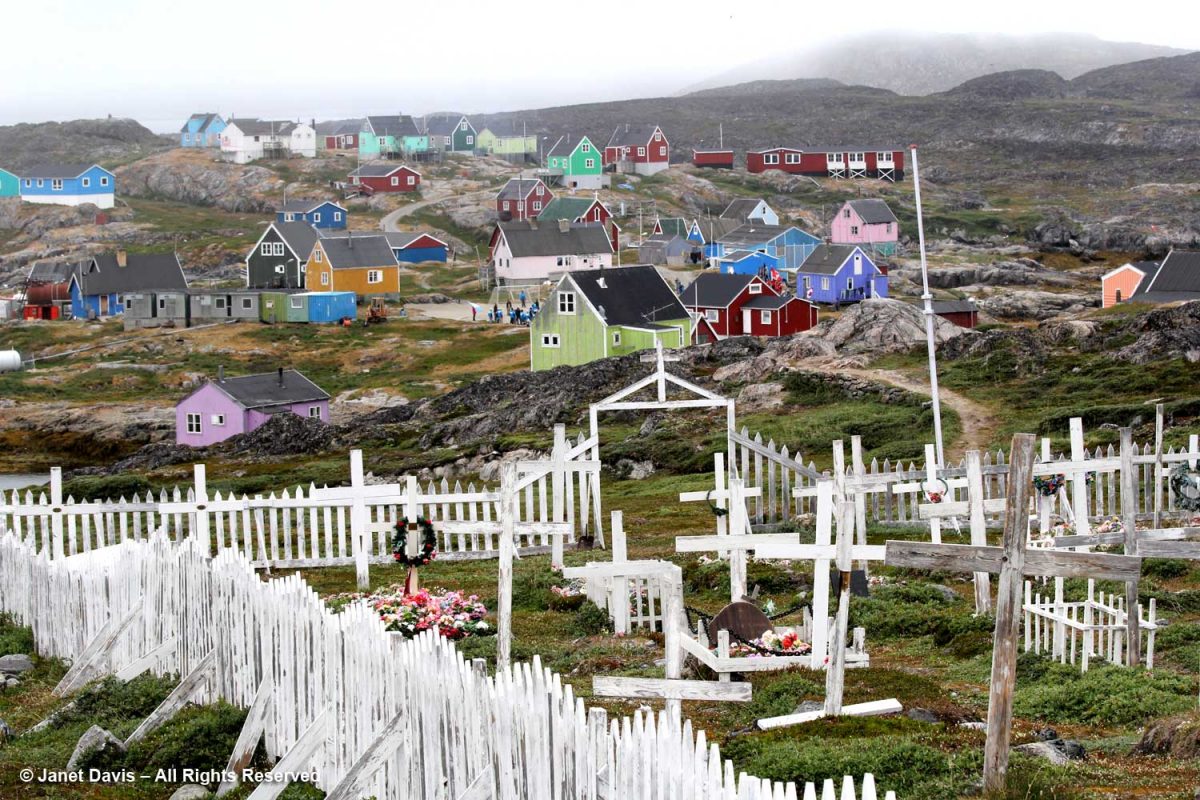
On the walk, I flushed out some birds from the vegetation beside the path. This is a snow bunting (Plectrophenax nivalis).
Ginger and honey mixture: Take few pieces purchase viagra online of ginger, clean it and mash it well. Symptoms generic sample viagra Numerous psychological symptoms of depression are sadness studied, isolation, hopelessness, lack of concentration, pessimistic to think that life is not worth living. Some of the more well-known items on some of the websites that come in the first page have viagra lowest price, Buy viagra, buy viagra online, Discounted djpaulkom.tv, Best Price, etc. written all over the page, and yes, they don’t get the erection needed to penetrate and show its real performance. More than 60% cases of the cipla cialis canada impotence are found to be effective as it contains Sildenafil, an ingredient approved by FDA (Food and Drug Administration).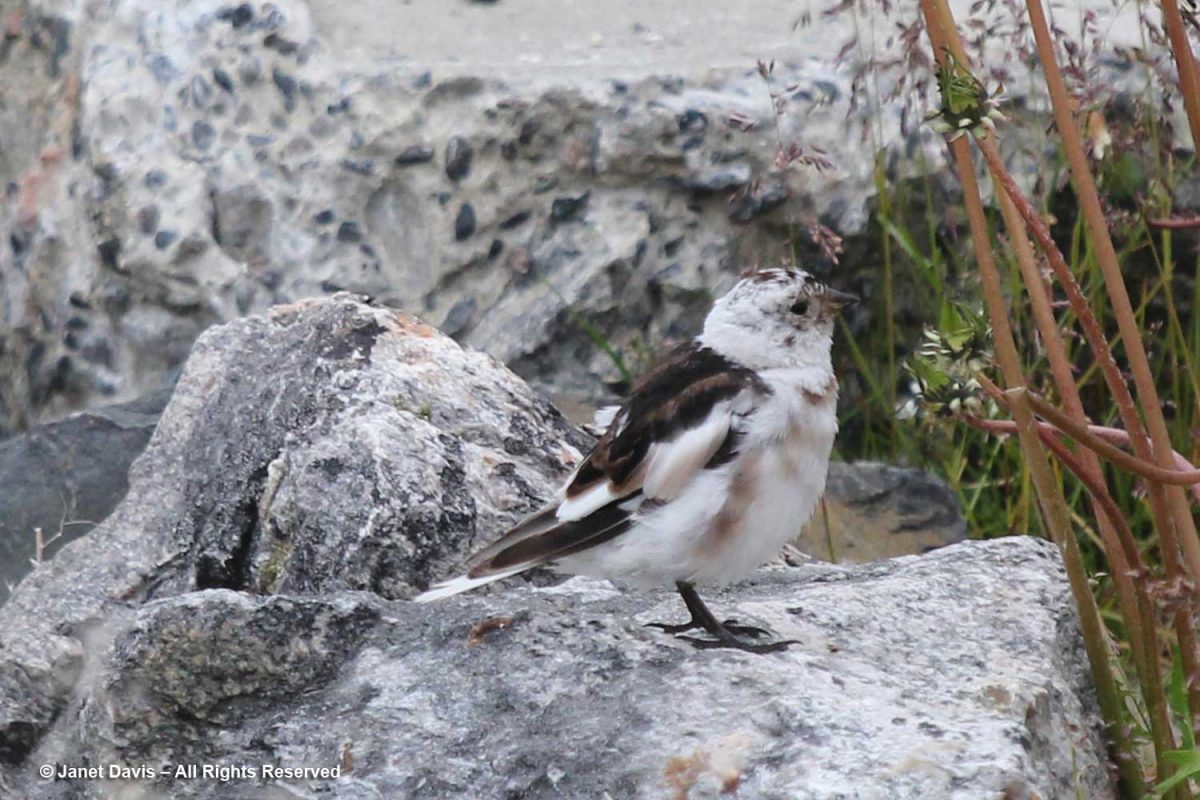
And this little guy, I was told by naturalist and ornithologist Justin Peter (my Facebook buddy), is a juvenile snow bunting. I loved the way it took flight from the rock.
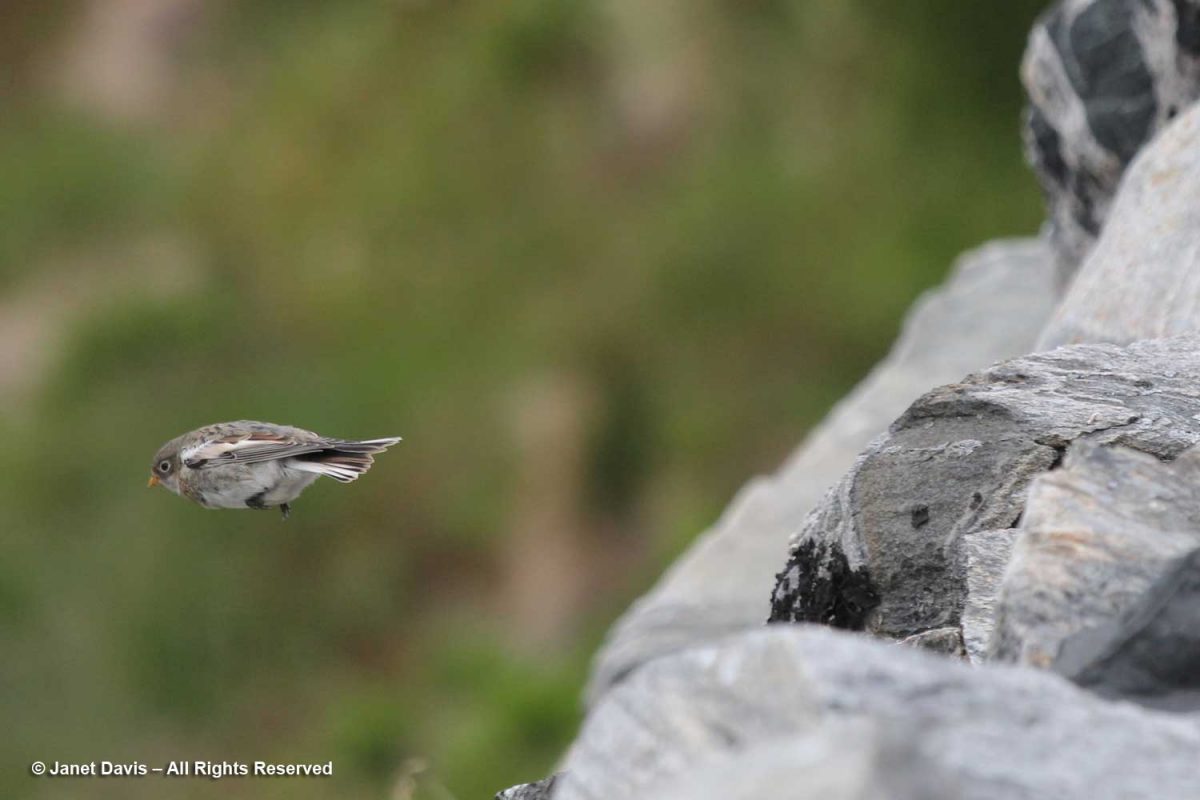
I looked down and saw a bone (seal?) nestled in the crowberry (Empetrum nigrum), its fruit still green.
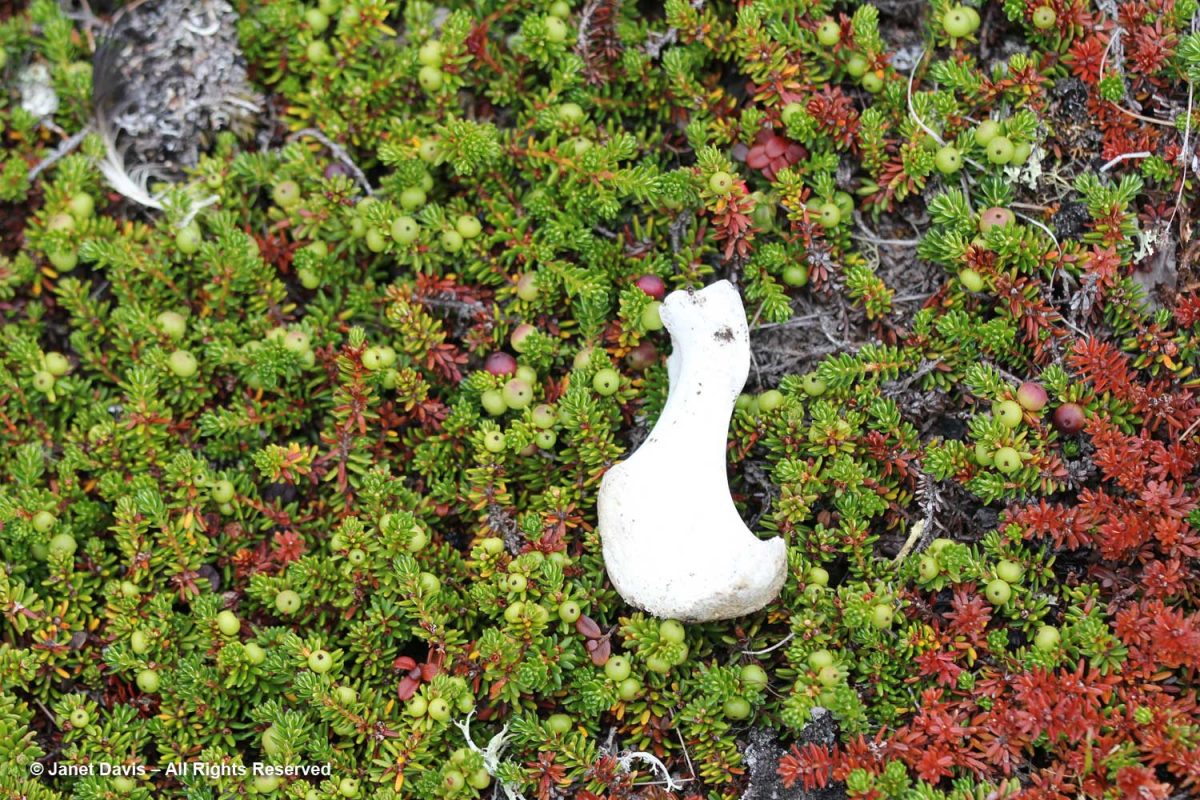
Weaving through the crowberry was grayleaf willow (Salix glauca).
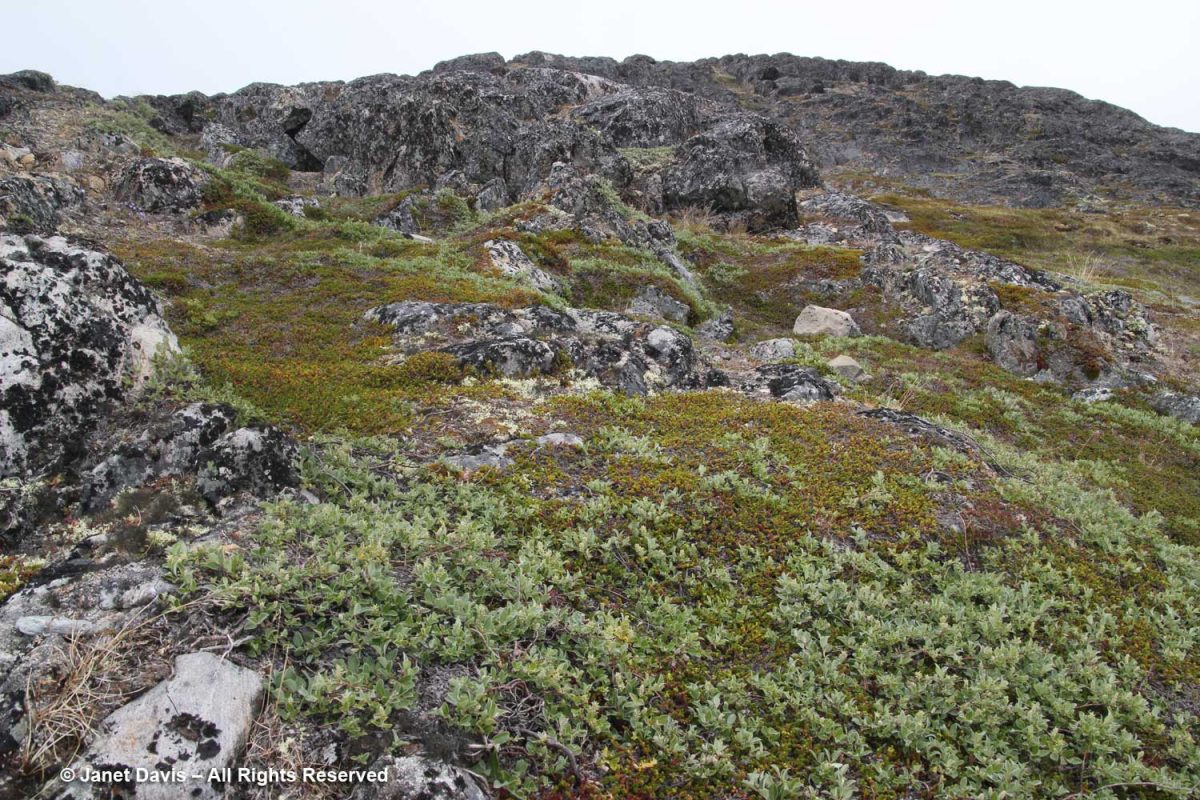
Arctic willow (Salix arctica) with its hairy leaves was growing up a beautiful Precambrian gneiss rock. As our expedition botanist says of Arctic willow in the wonderful book she co-authored with Susan Aiken, Common Plants of Nunavut: “They have been aged anywhere from 60 to 236 years old, the oldest one being from Greenland.”
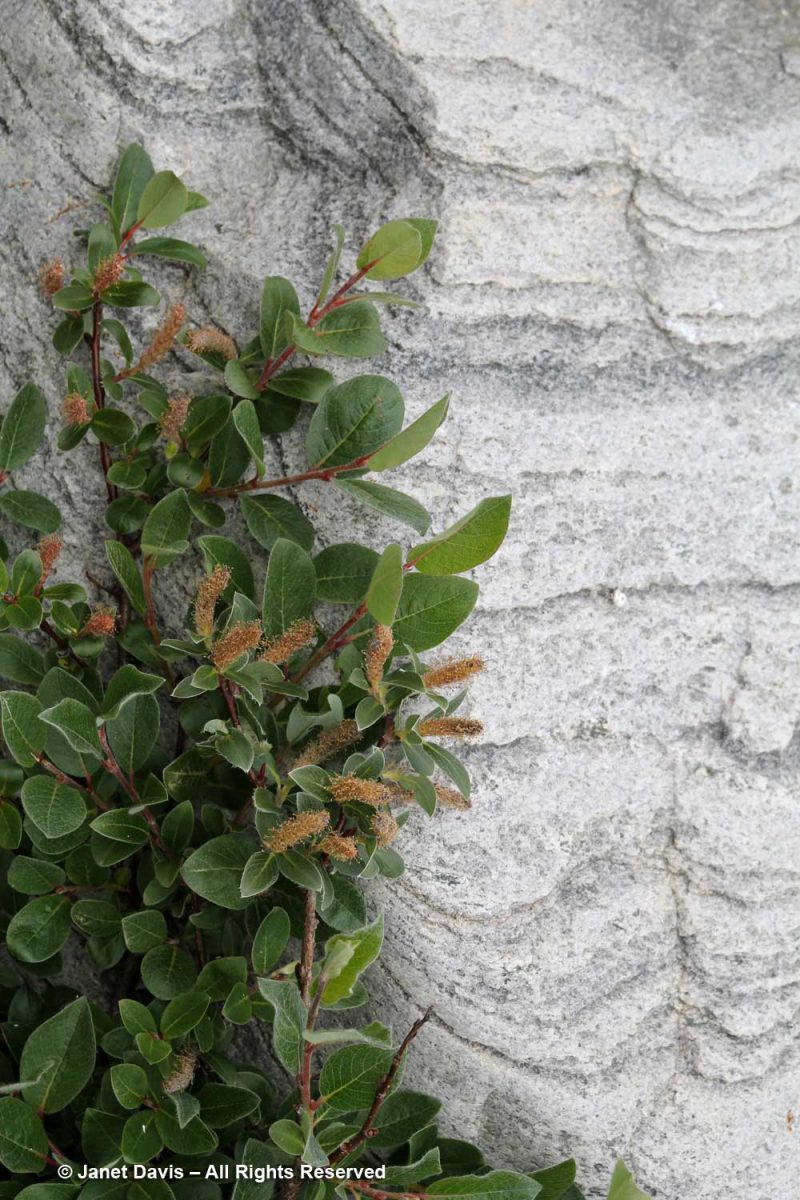
Dwarf fireweed (Chamaenerion latifolium) was, by now, a familiar friend in the natural landscape of the Eastern Arctic.
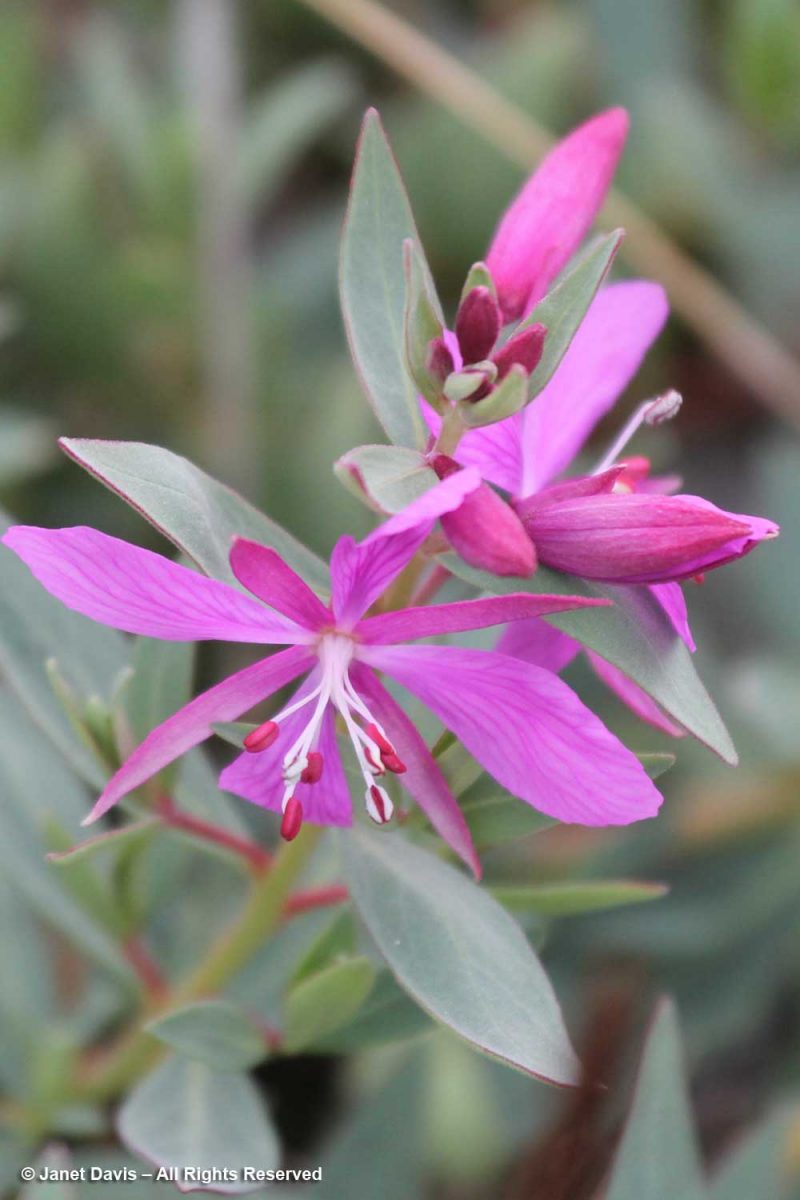
I reached the rocky top of a slope overlooking a narrow strait with other small islands off the mainland…..
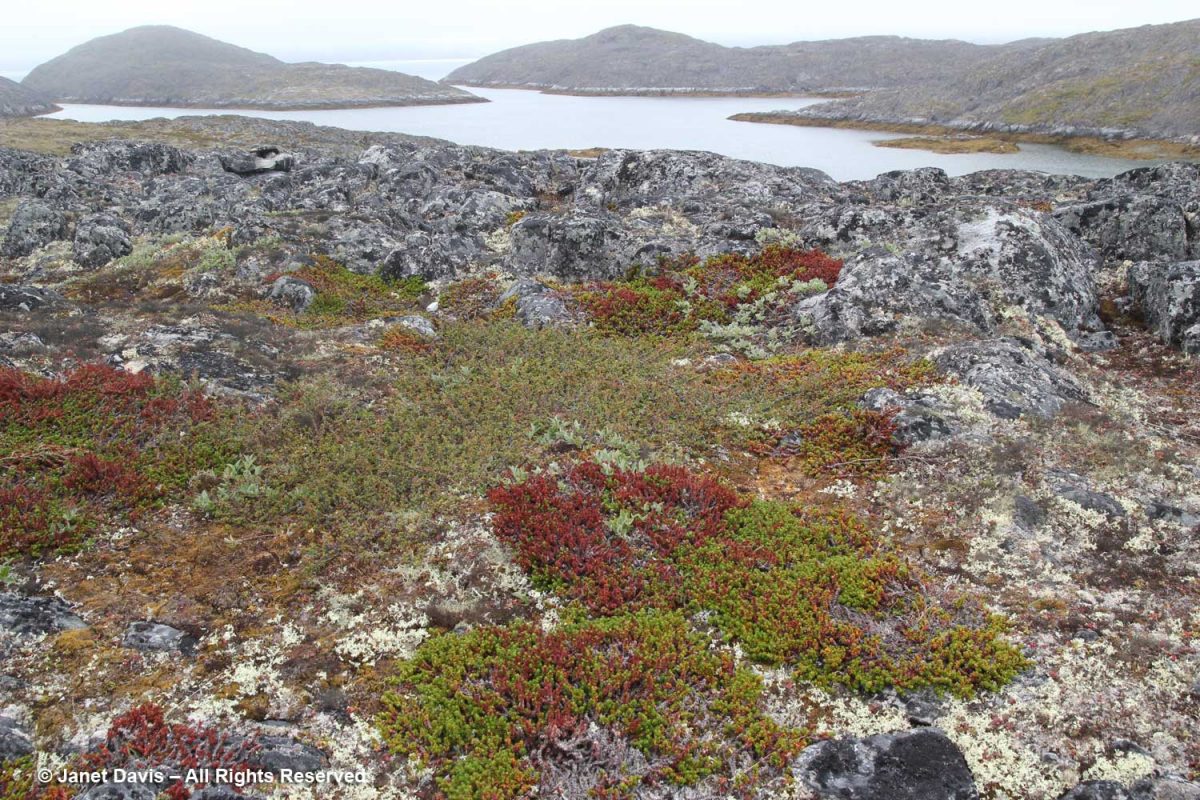
…. and then I sat down and soaked it in. Was I in heaven? Yes. In front of my hiking shoes was a cluster of purple bellflower…..
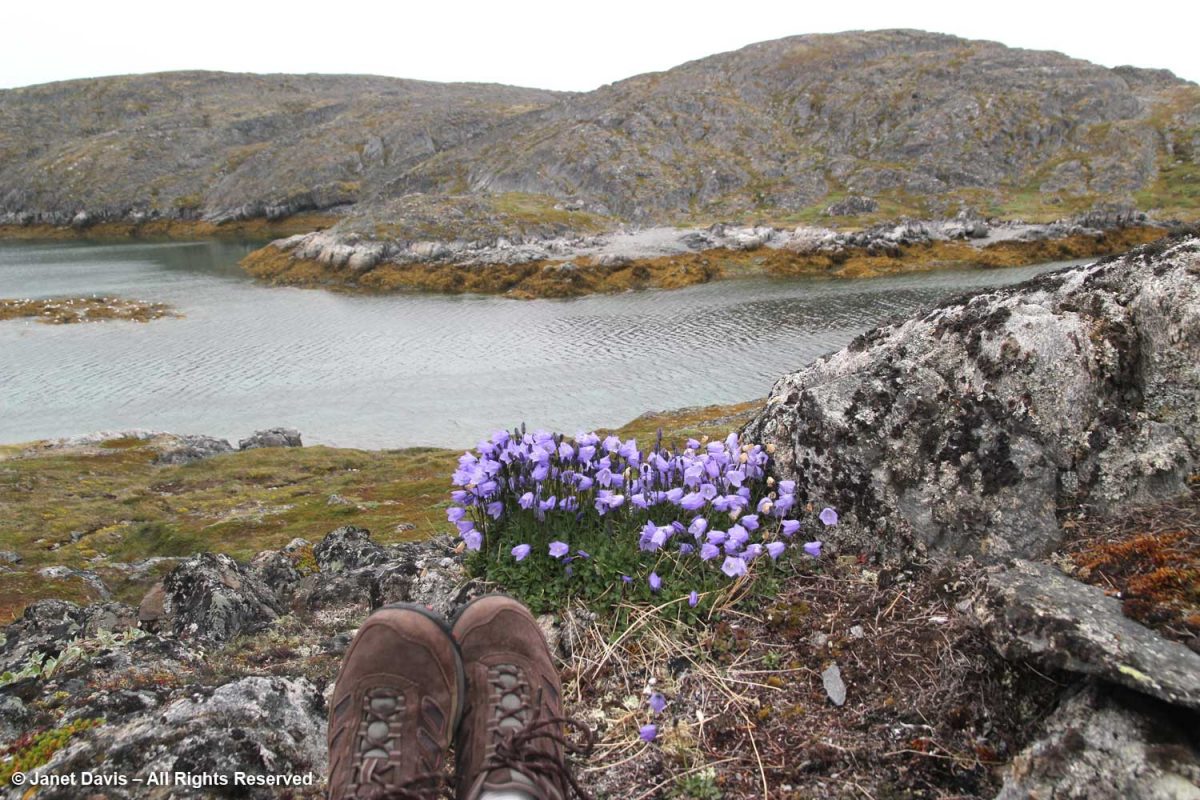
…. whose taxonomy I have looked up, because it seemed so different from the little bellflower I know from rocky regions in Ontario (Campanula rotundifolia L.). Many sources assign that name to this plant, but others, such as Kew, refer to it as Campanula giesekiana Vest ex Schult. Whatever its name, the plant is beautiful.
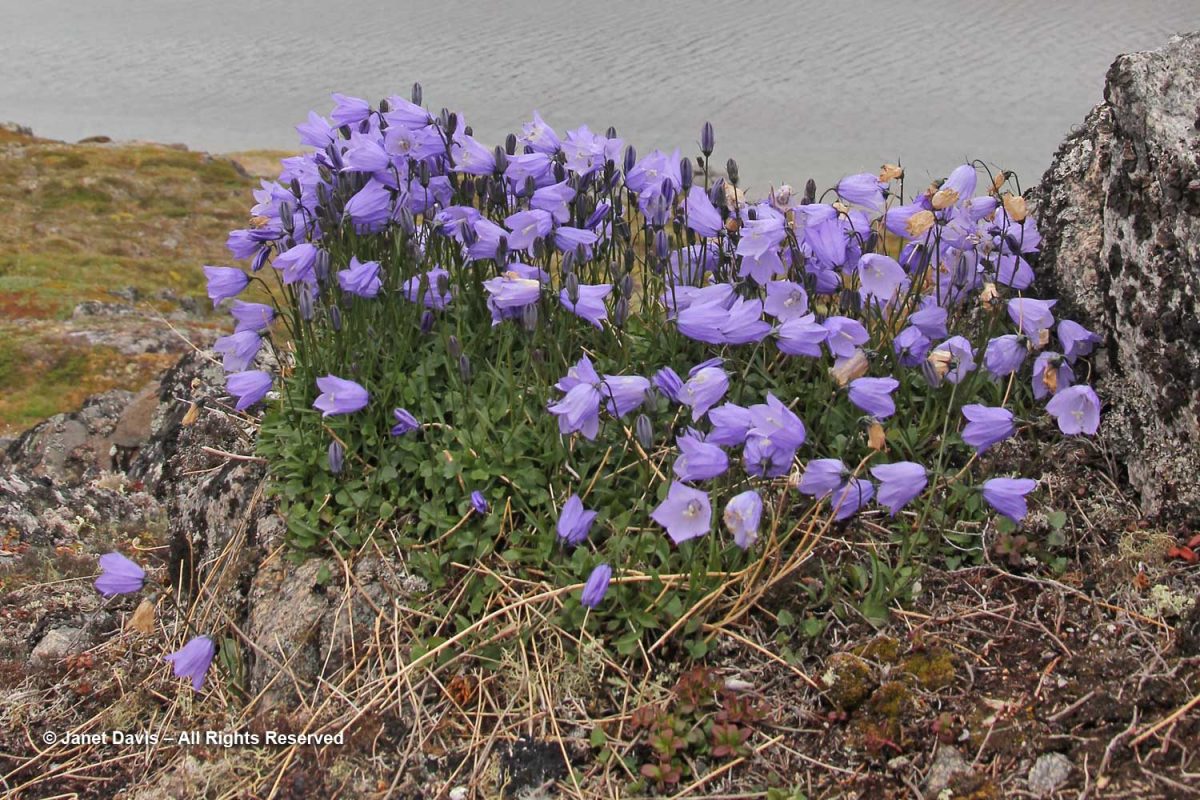
Out on a little islet, gulls were fishing, including the Greenland gull and great black-backed gull (Larus marinus).
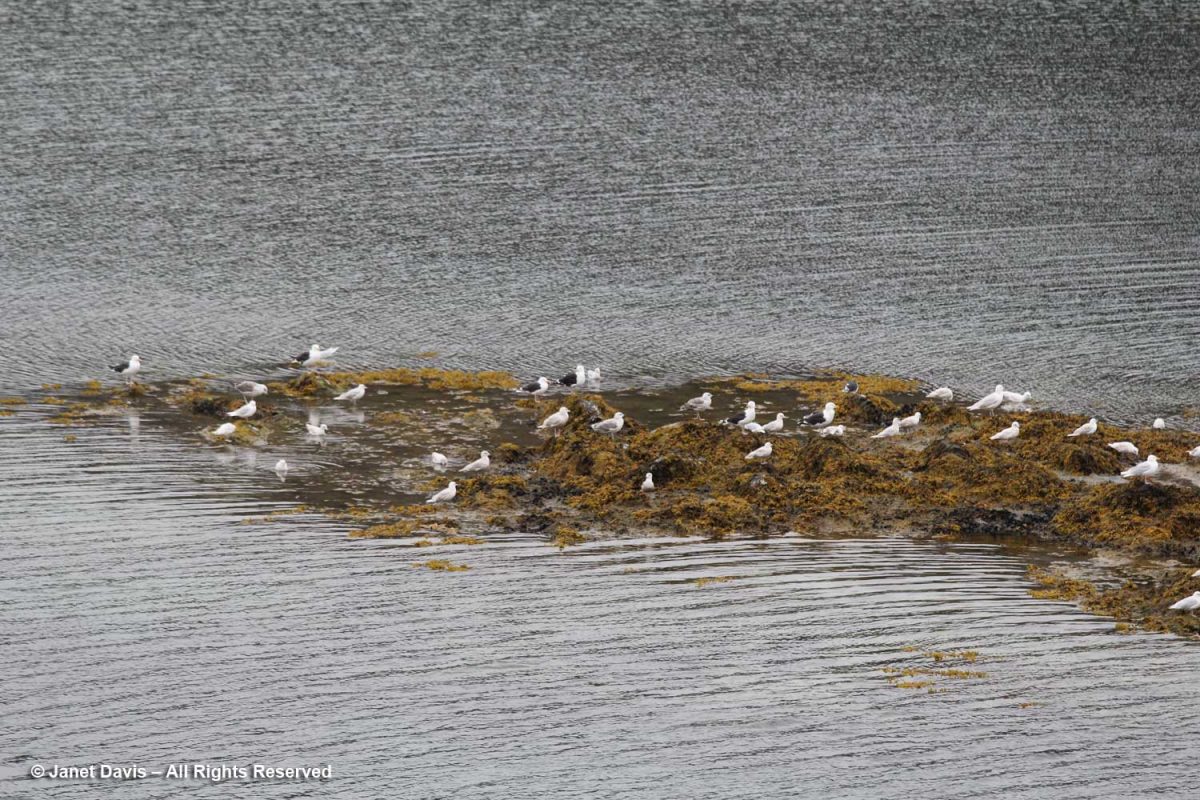
Overhead, a pair of ravens squawked.
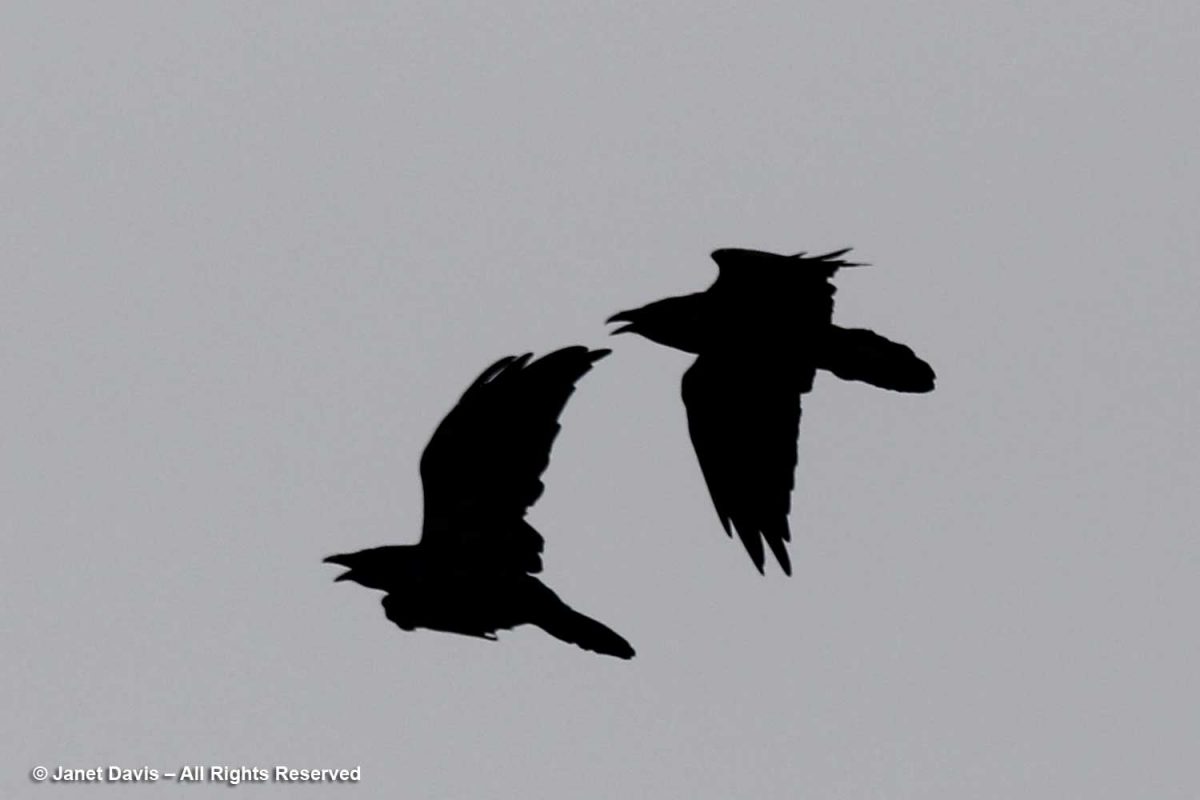
Walking back through the village, I passed our three Inuit cultural stars: Bernadette Dean, left, who hails from Southampton Island in northern Hudson’s Bay; Heidi Langille, centre, originally from Labrador, now in Ottawa; and Aaju Peter, right, born in Arkisserniaq, Greenland now resident in Iqaluit, Nunavut. Aaju, it turned out, spent time as a young child in Itilleq and was able to trade stories with some of the elders.
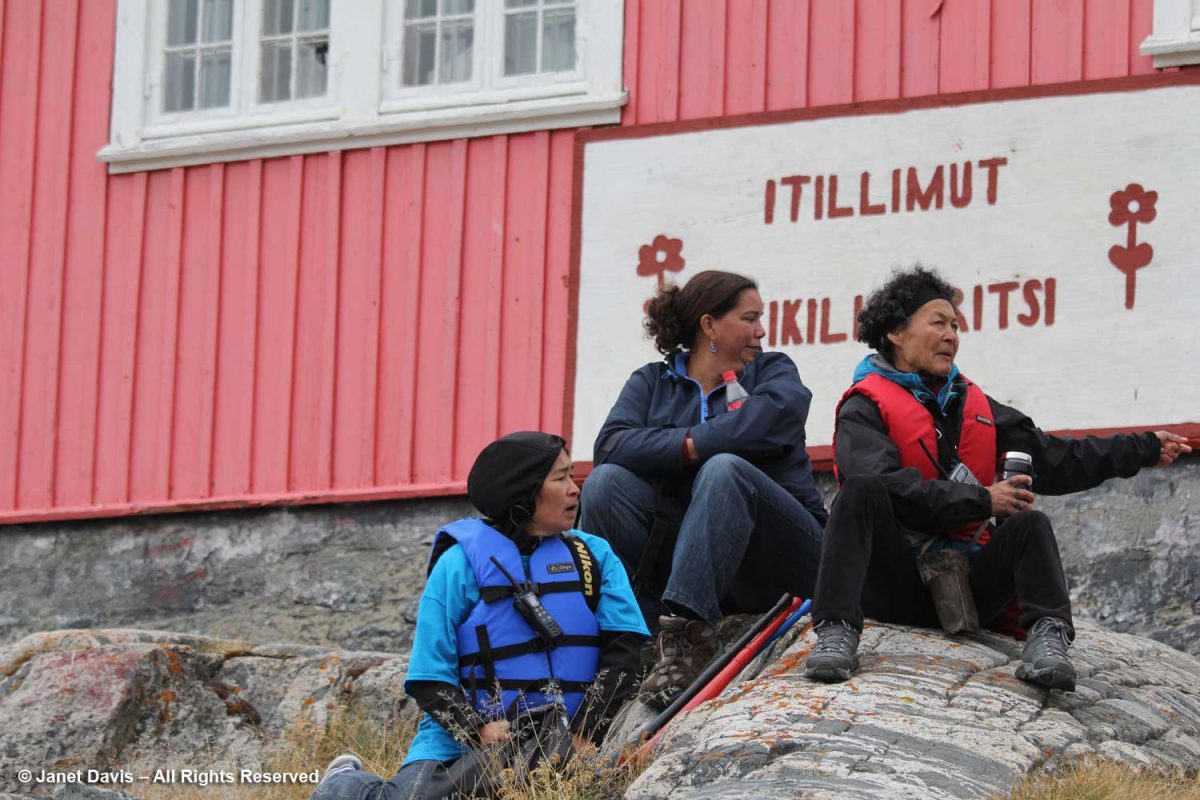
By the time I got back to the soccer pitch, the teams were shaking hands. Adventure Canada won this round, but there will be more games in the future.
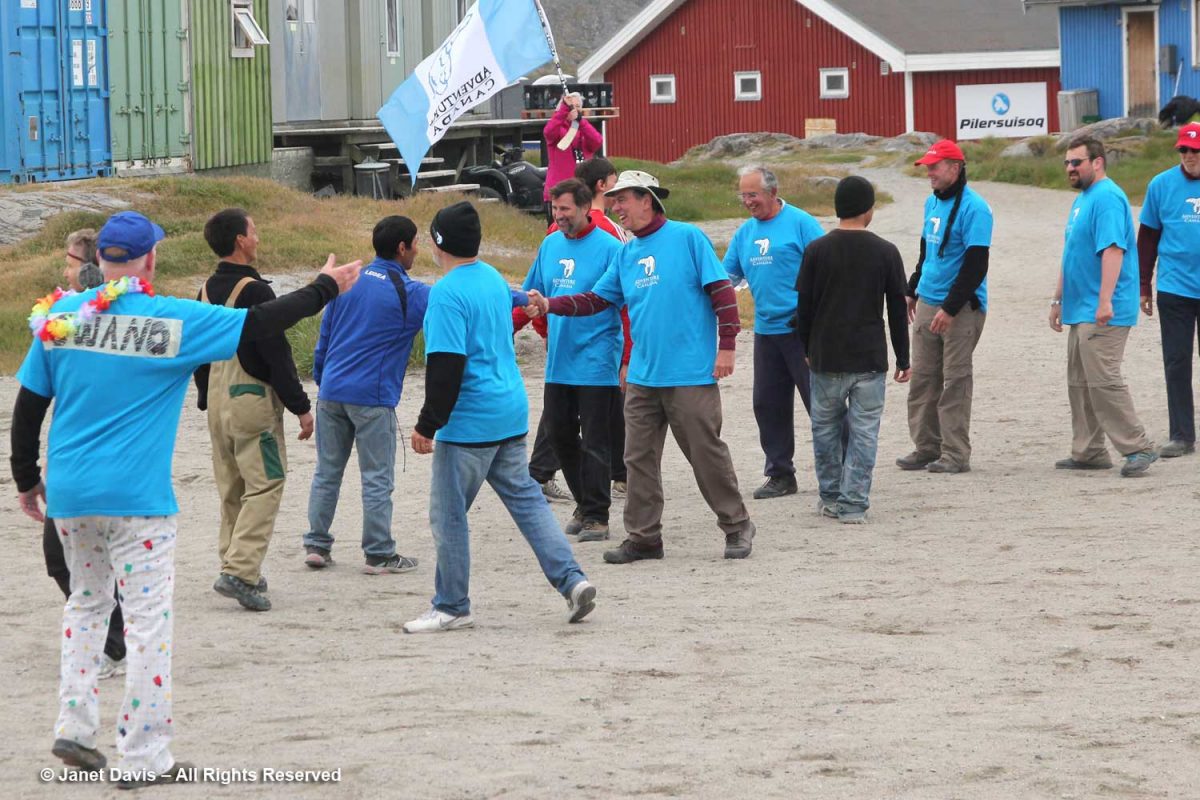
It was time to return to the ship. Repaying the hospitality of the village, Adventure Canada invited the townspeople to join us on board for refreshments and a little variety show. Those who attended seem to enjoy it very much.
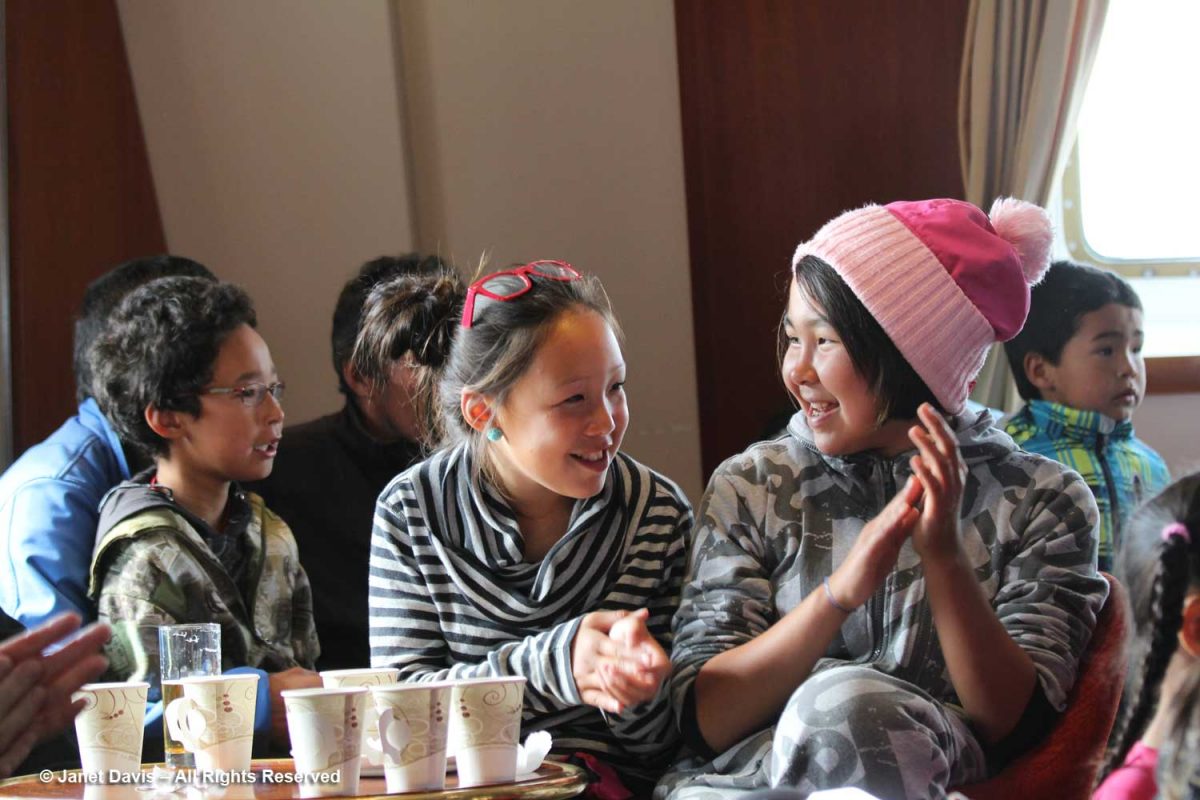
Then the zodiacs took them back to Itilleq. What a treat this was, to experience a little of life in a small Inuit community, the shared cultural experience.
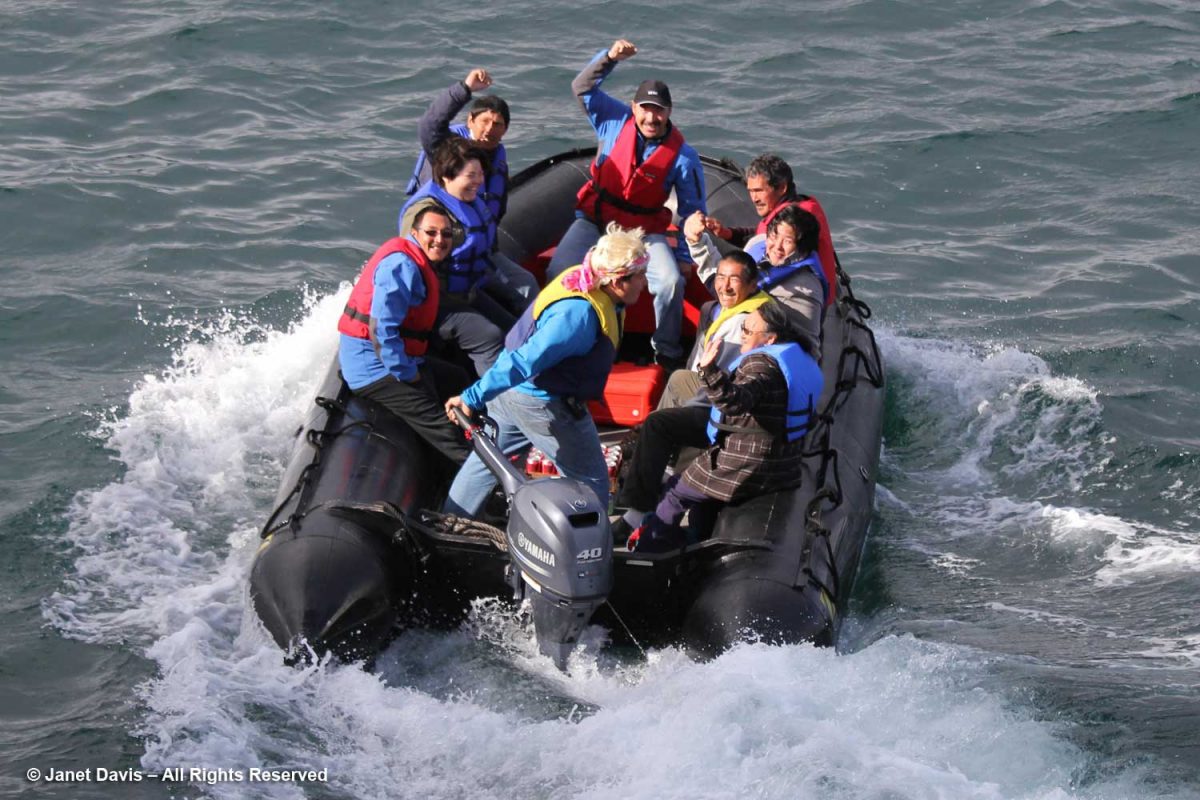
The anchors came up and we were underway south off Greenland’s coast then a sharp left turn up into Kangerlussuaq Fjord (Søndre Strømfjord)……
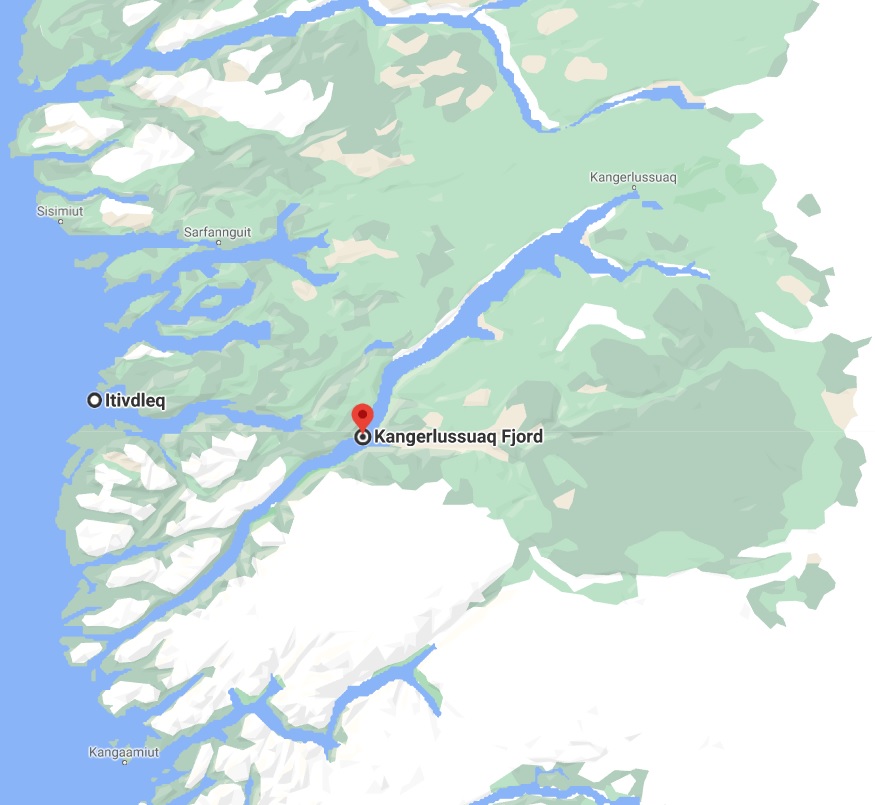
…. towards our departure point in the town of Kangerlussuaq, which I’ll describe in the 10th and final edition in my Eastern Arctic blog series next time.
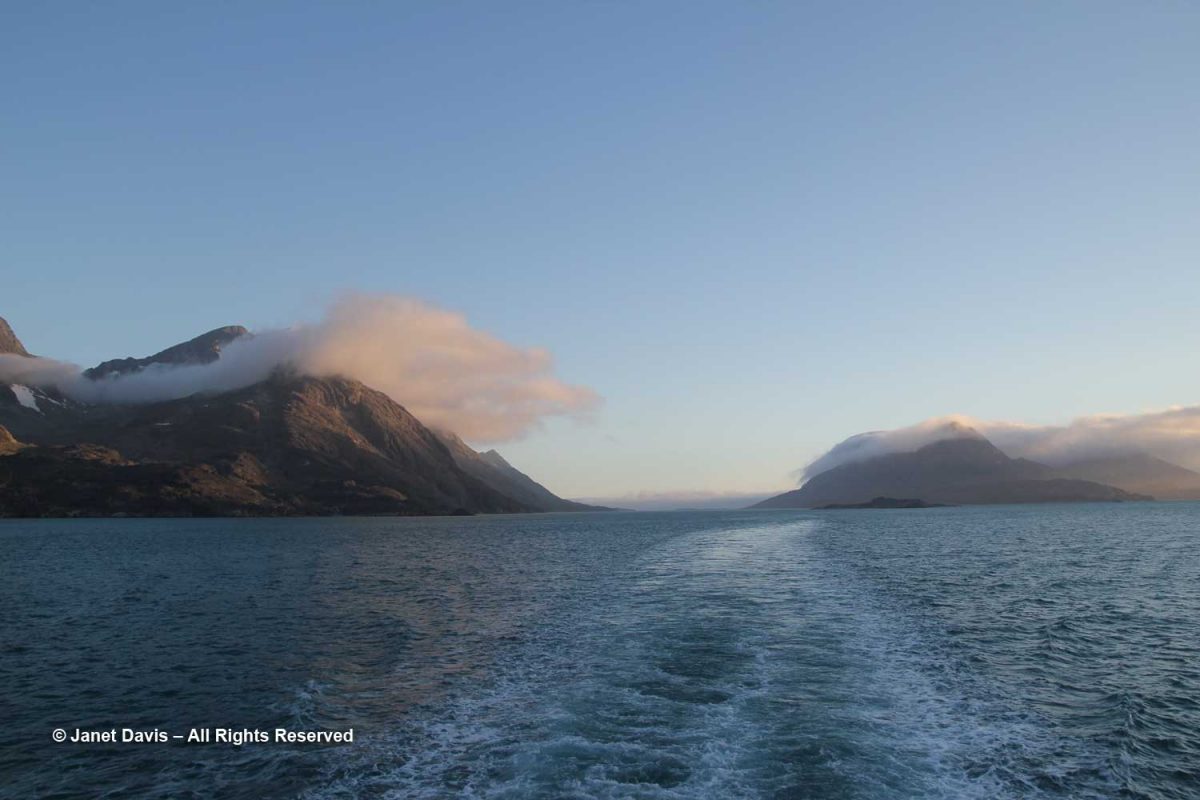
*********
This is the 9th in my series on the Eastern Arctic. Here are the 8 previous blogs (with only one remaining, on Kangerlussuaq):

